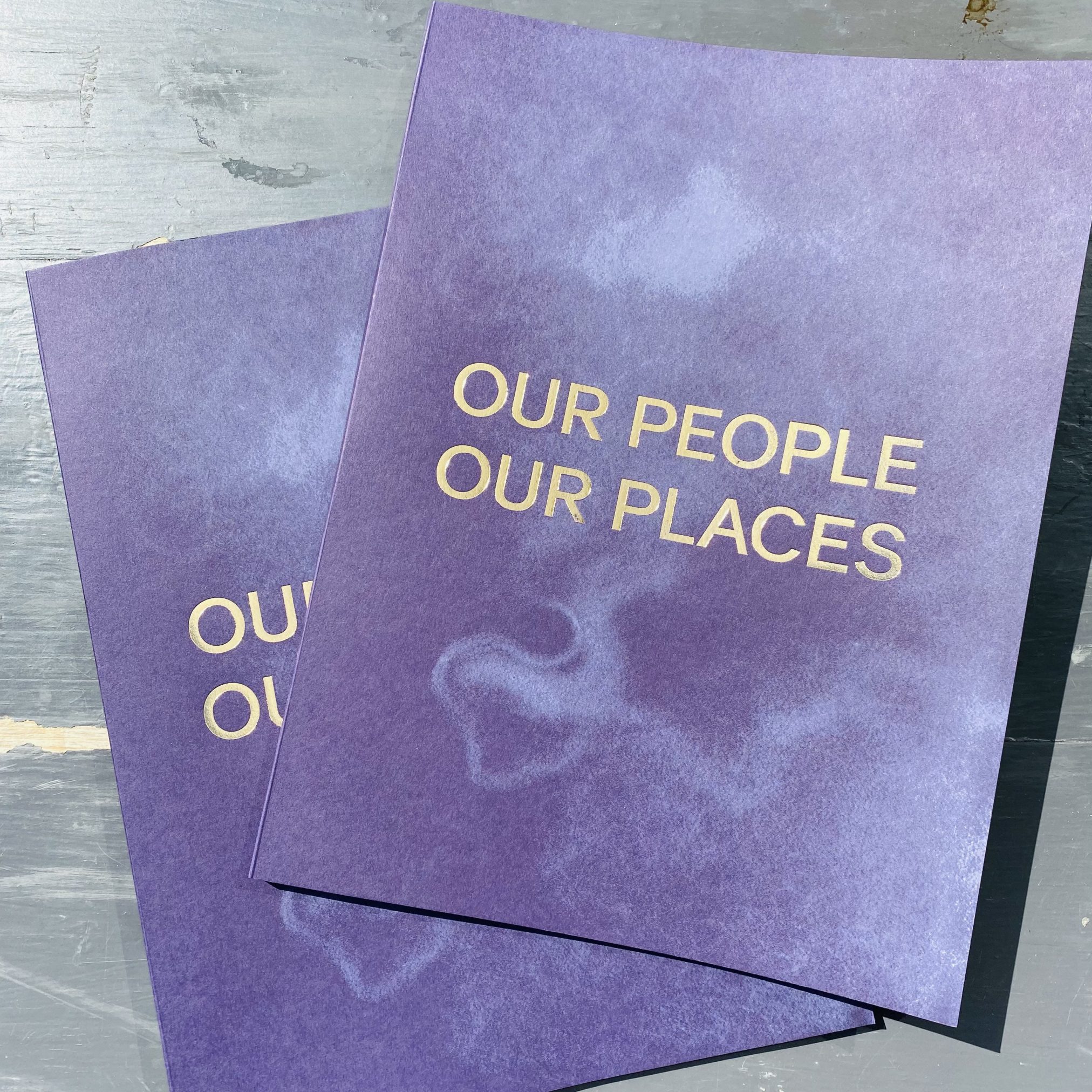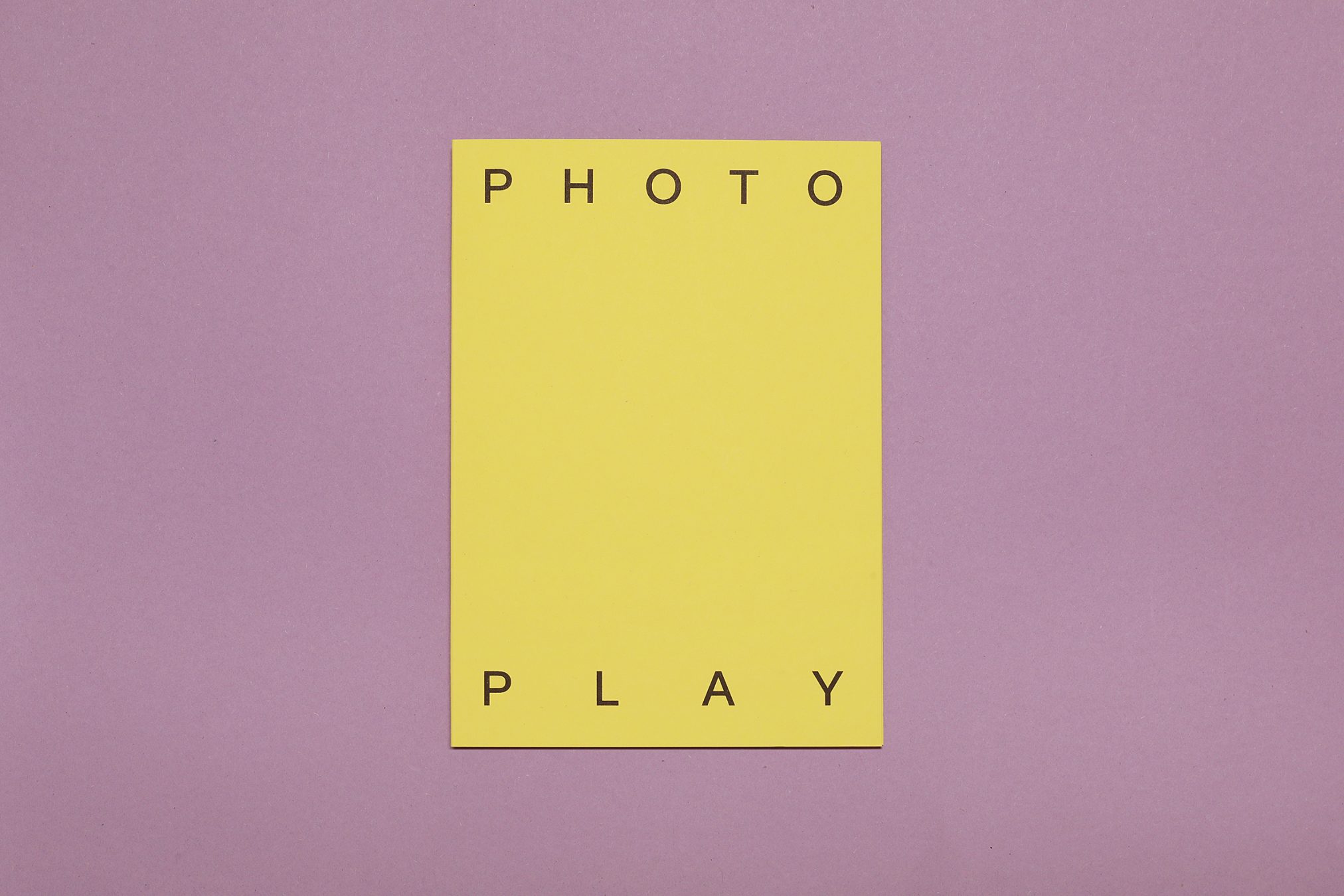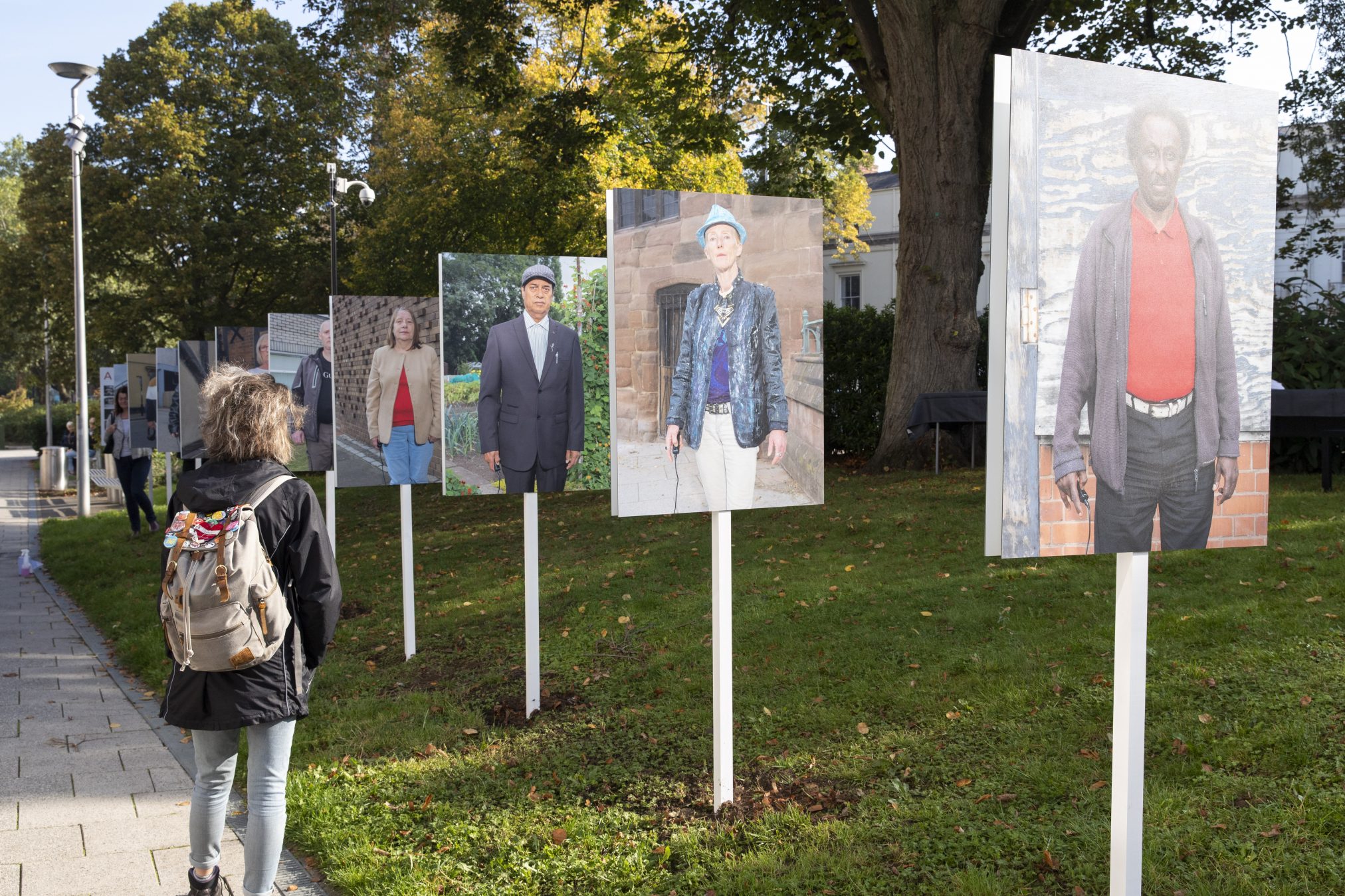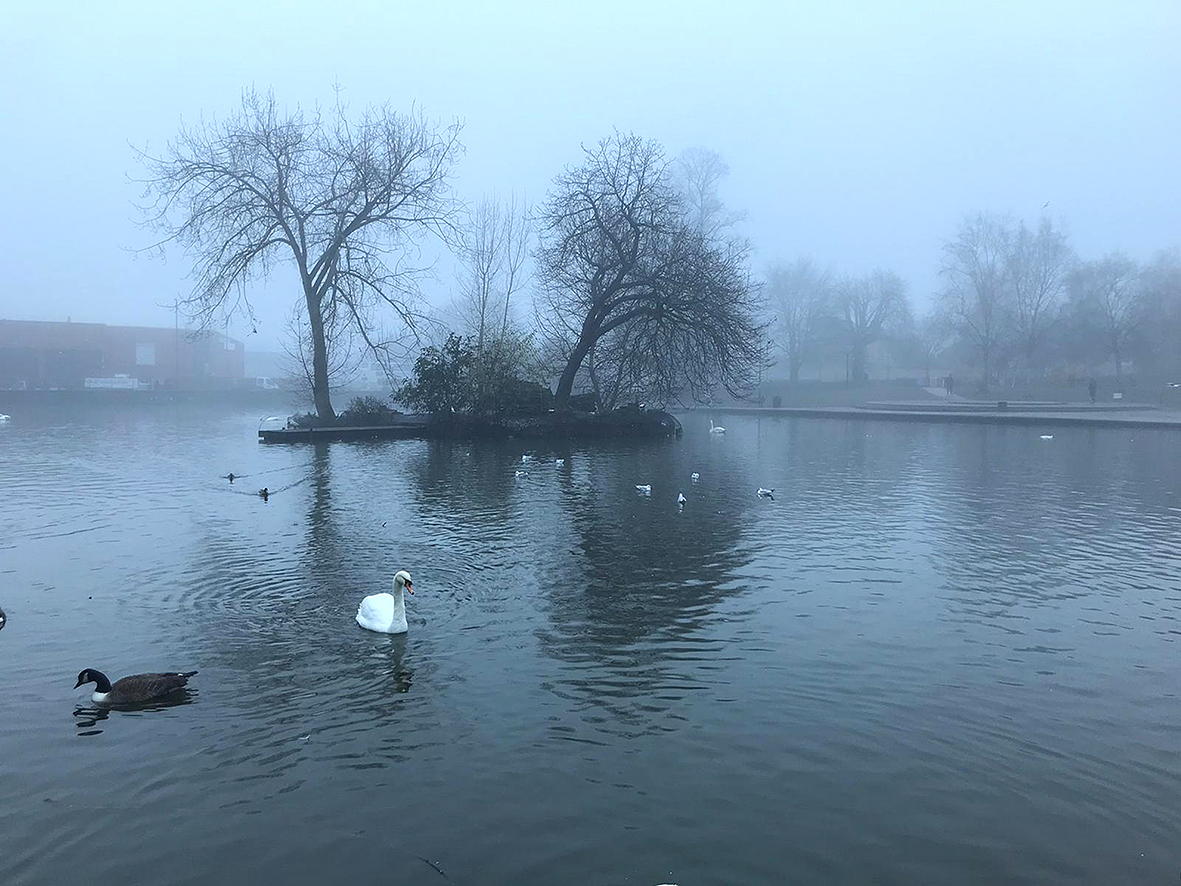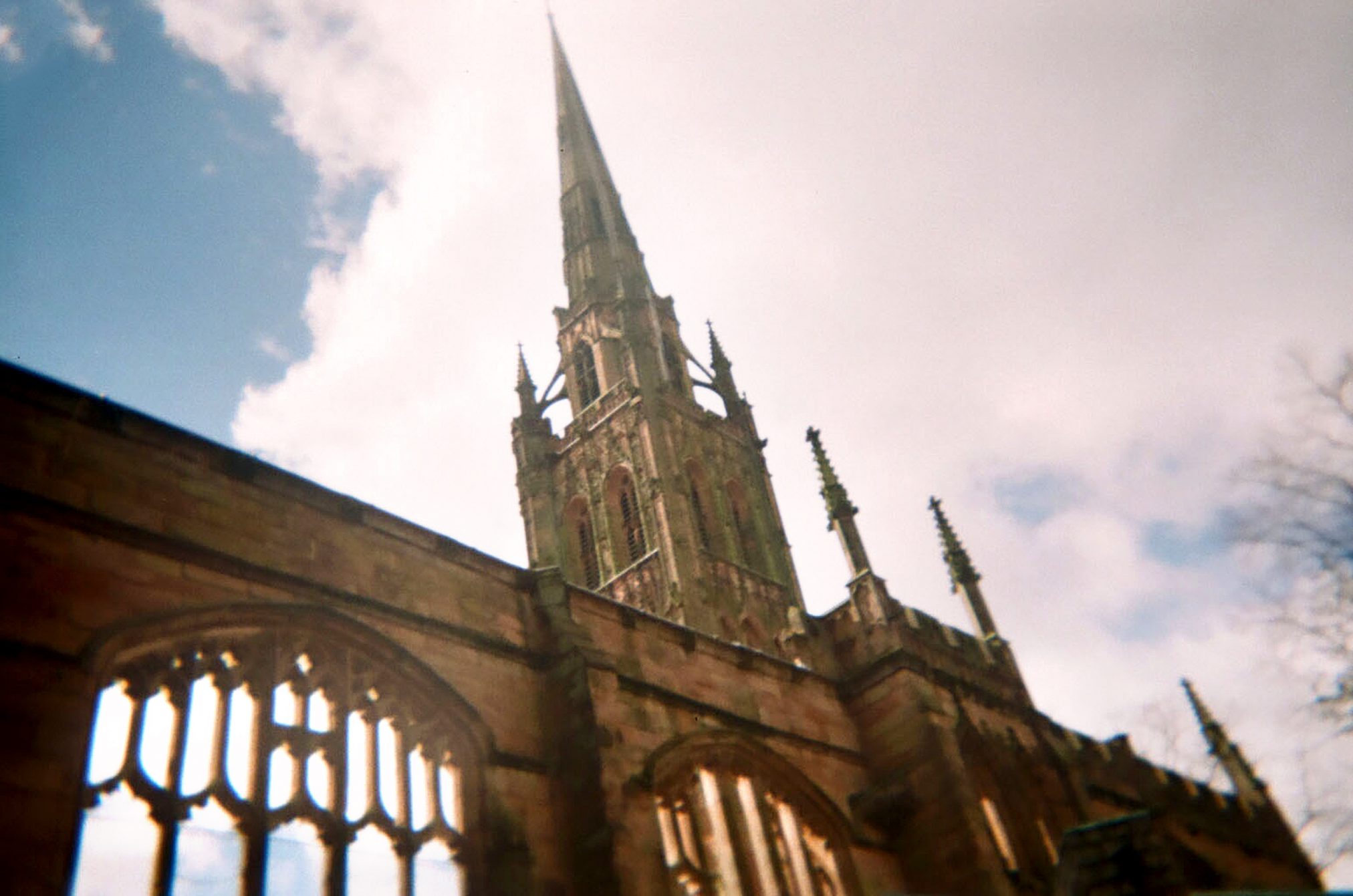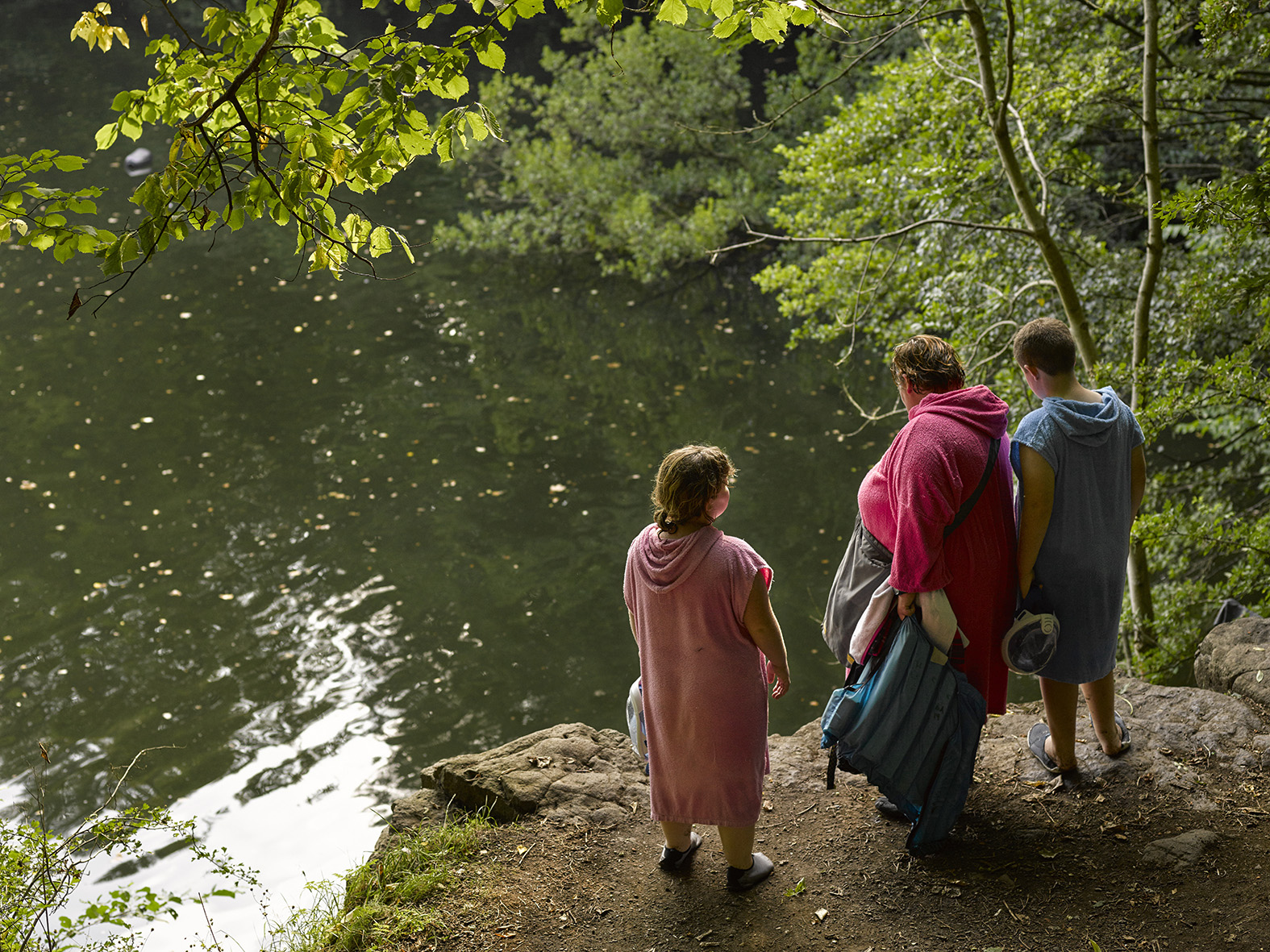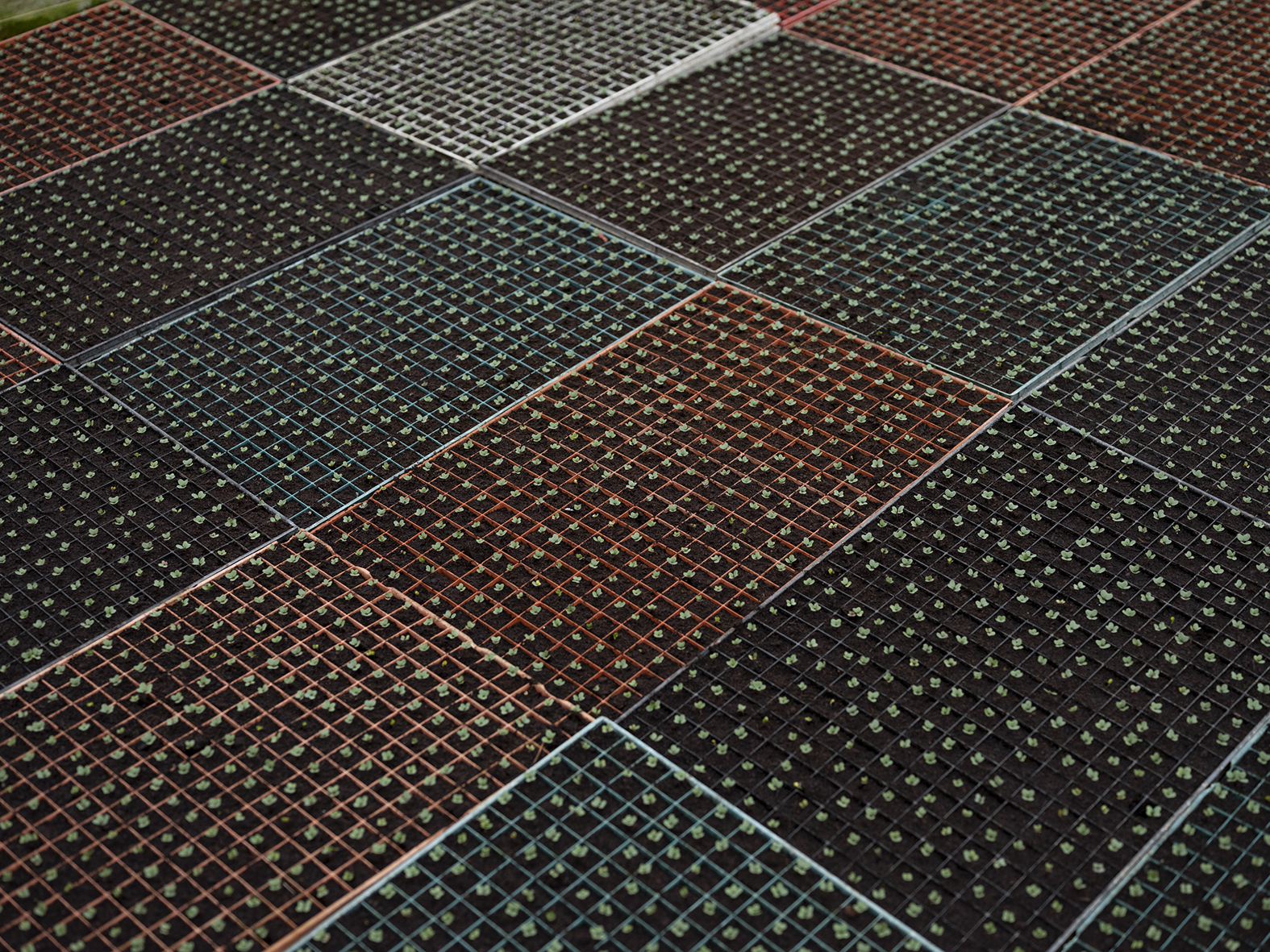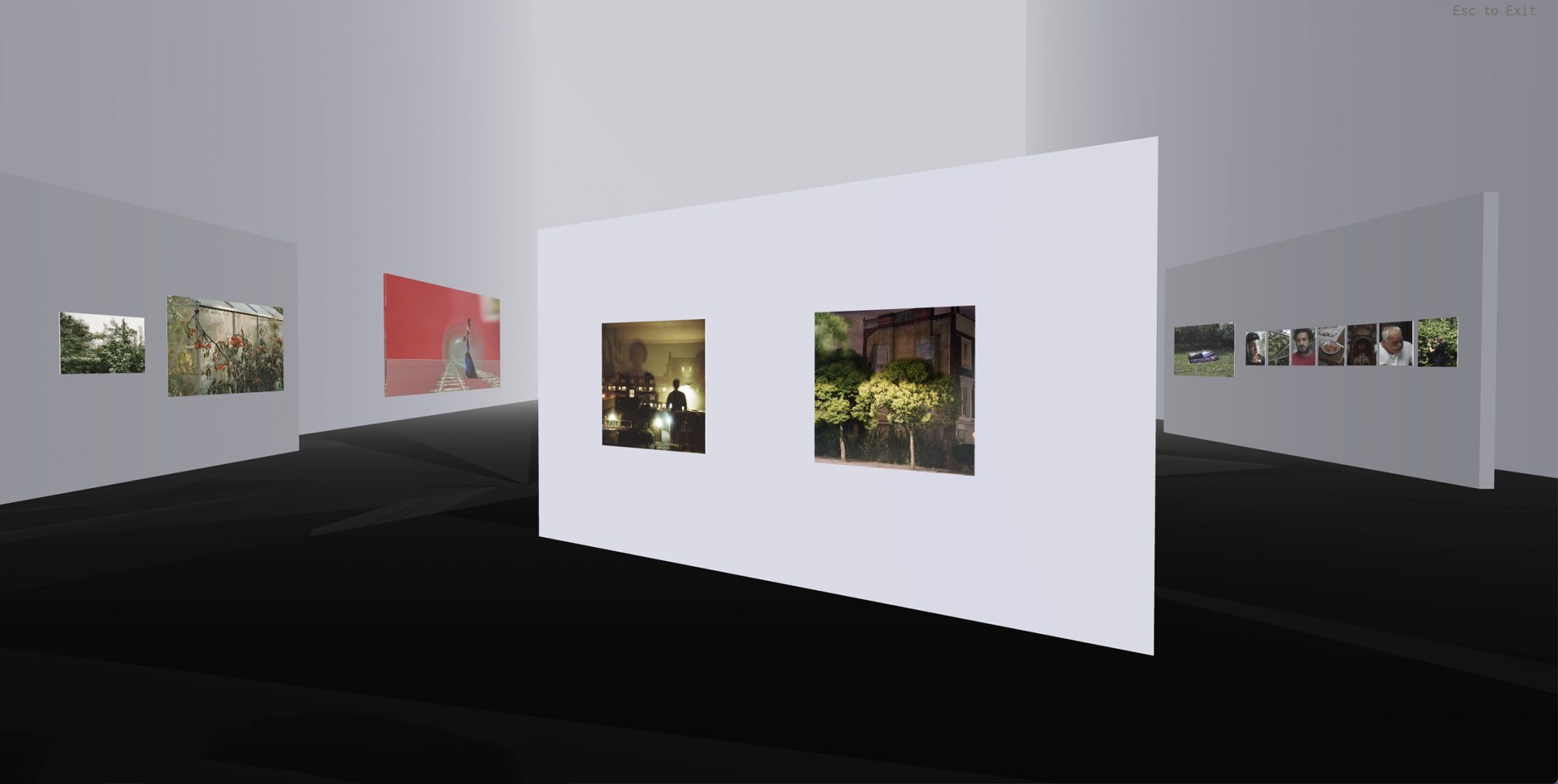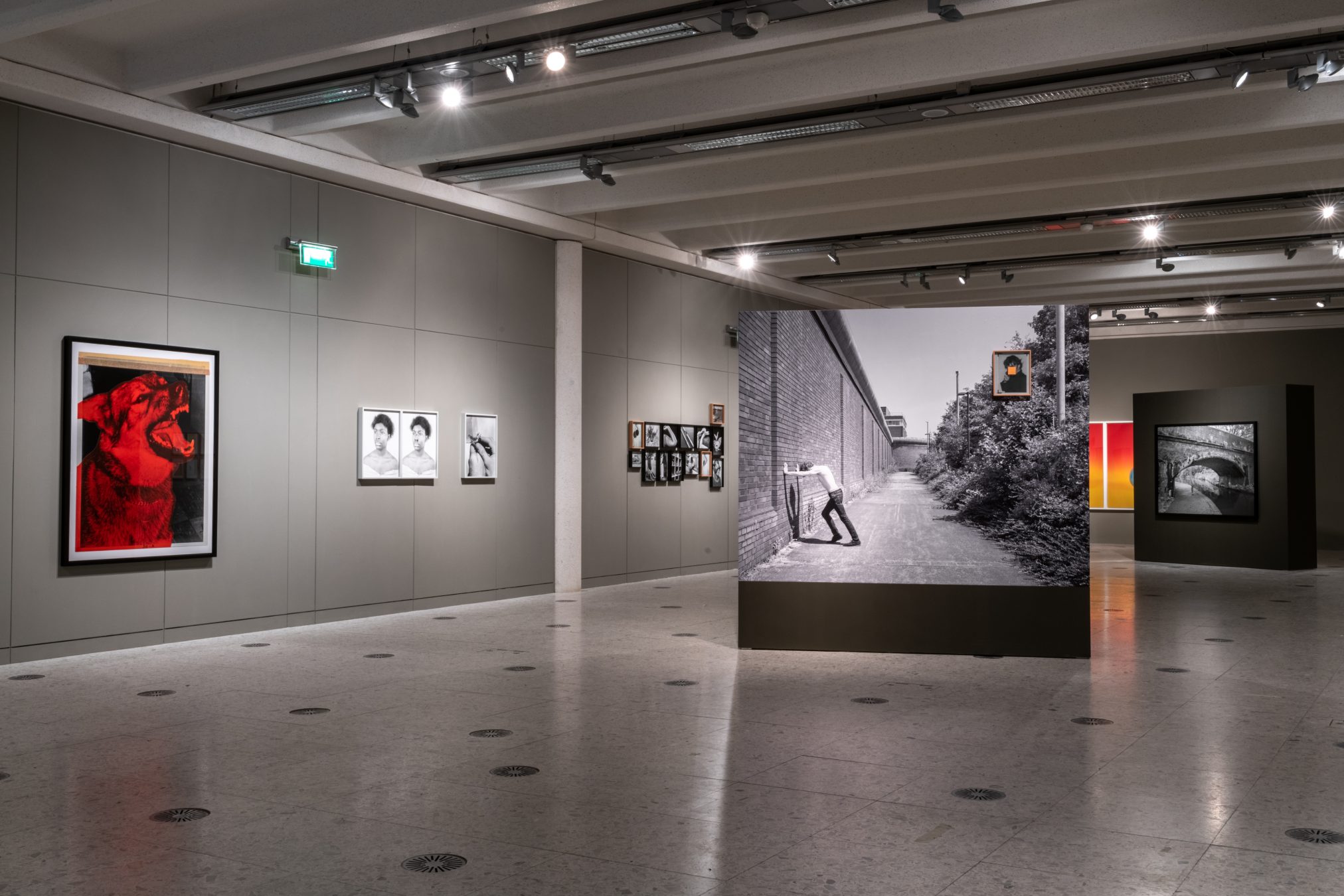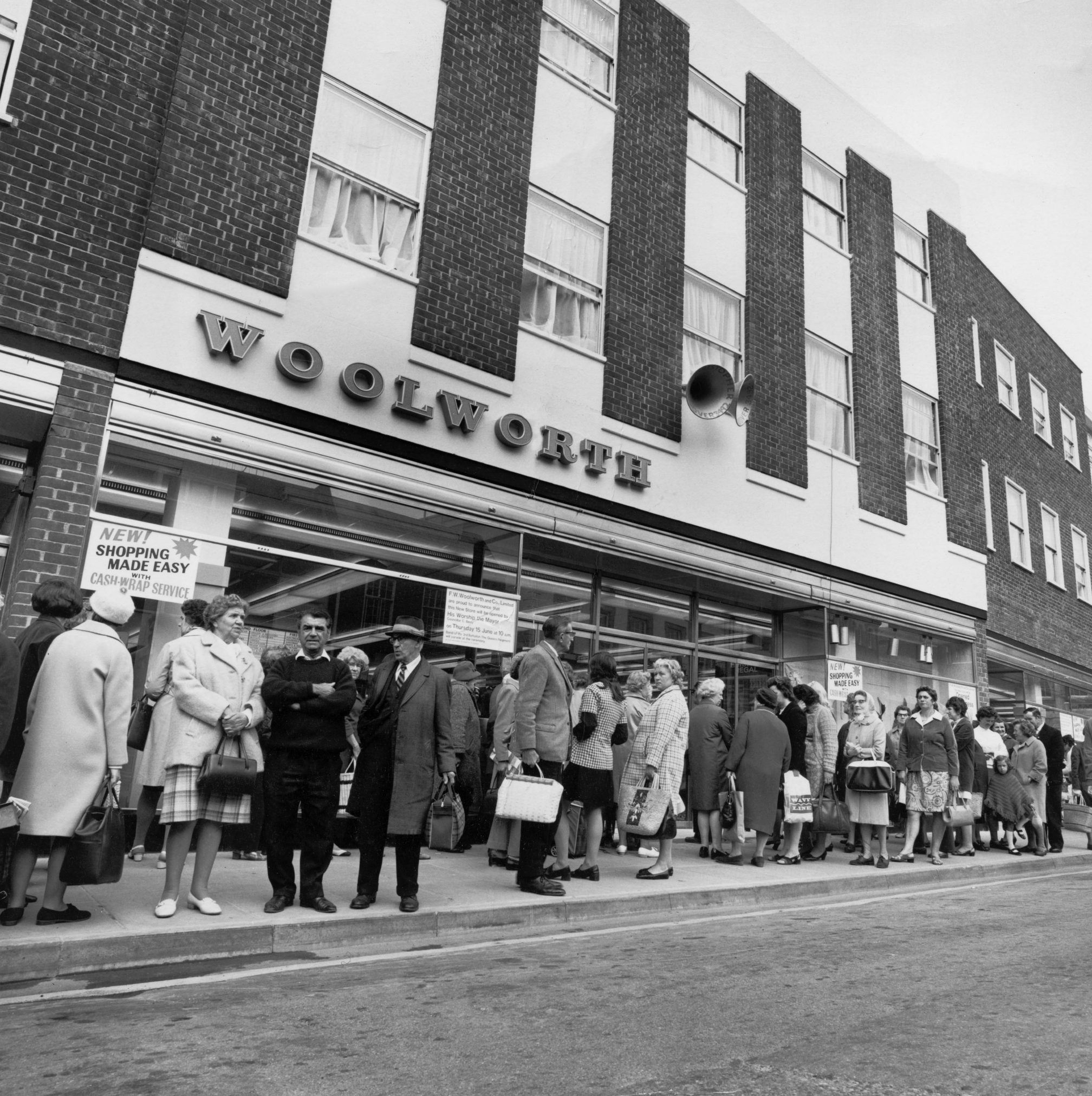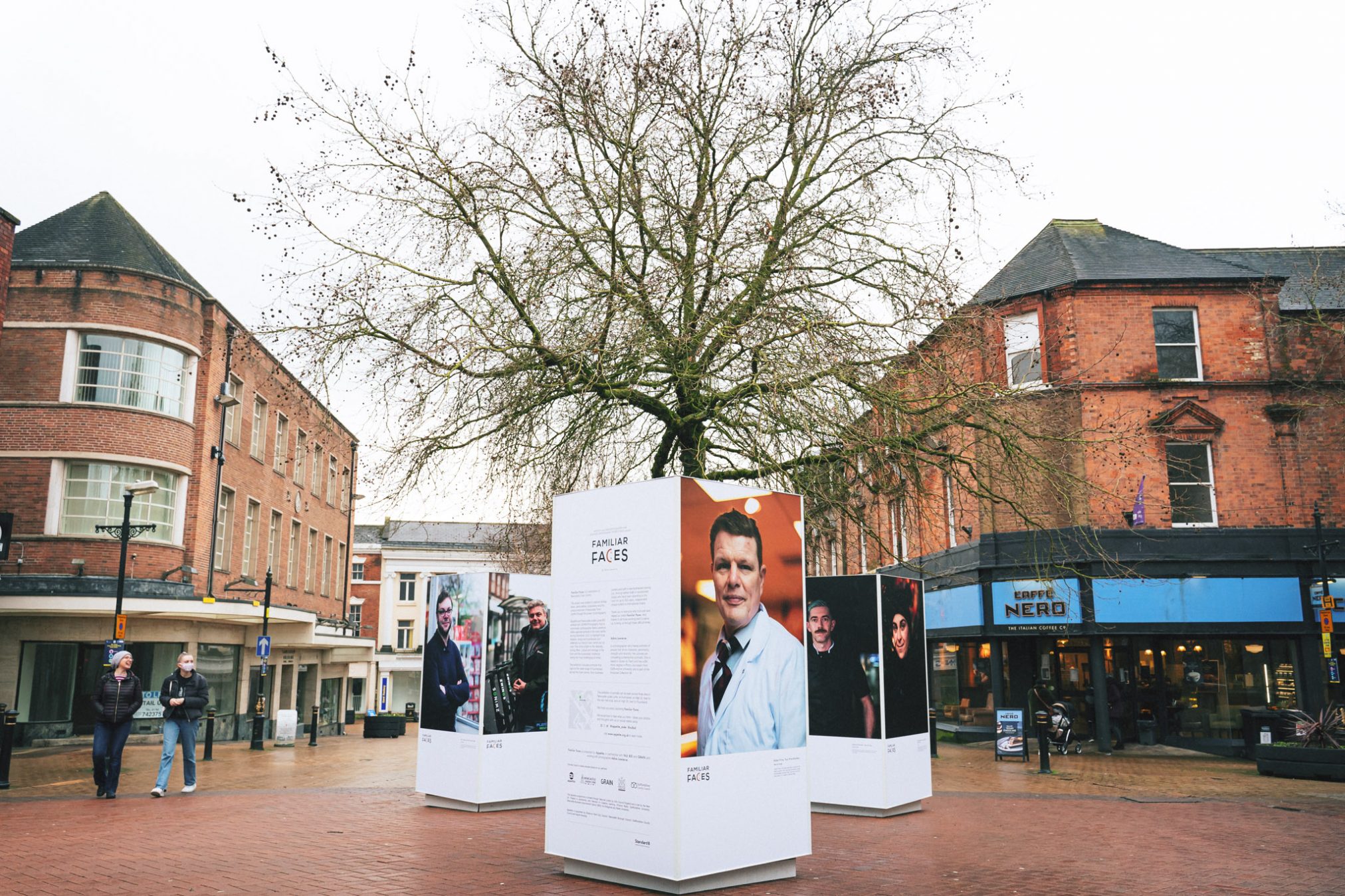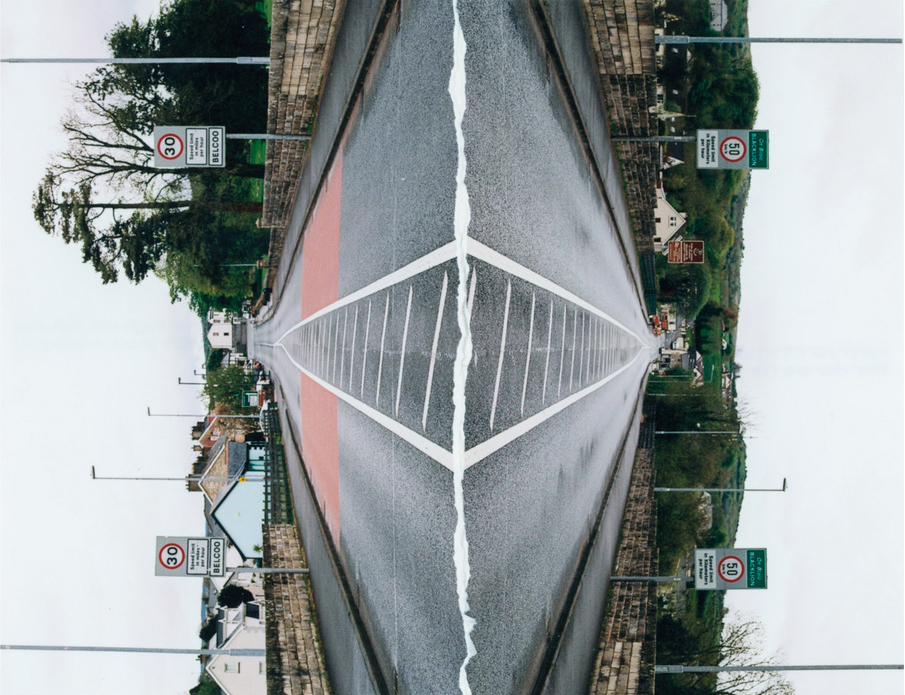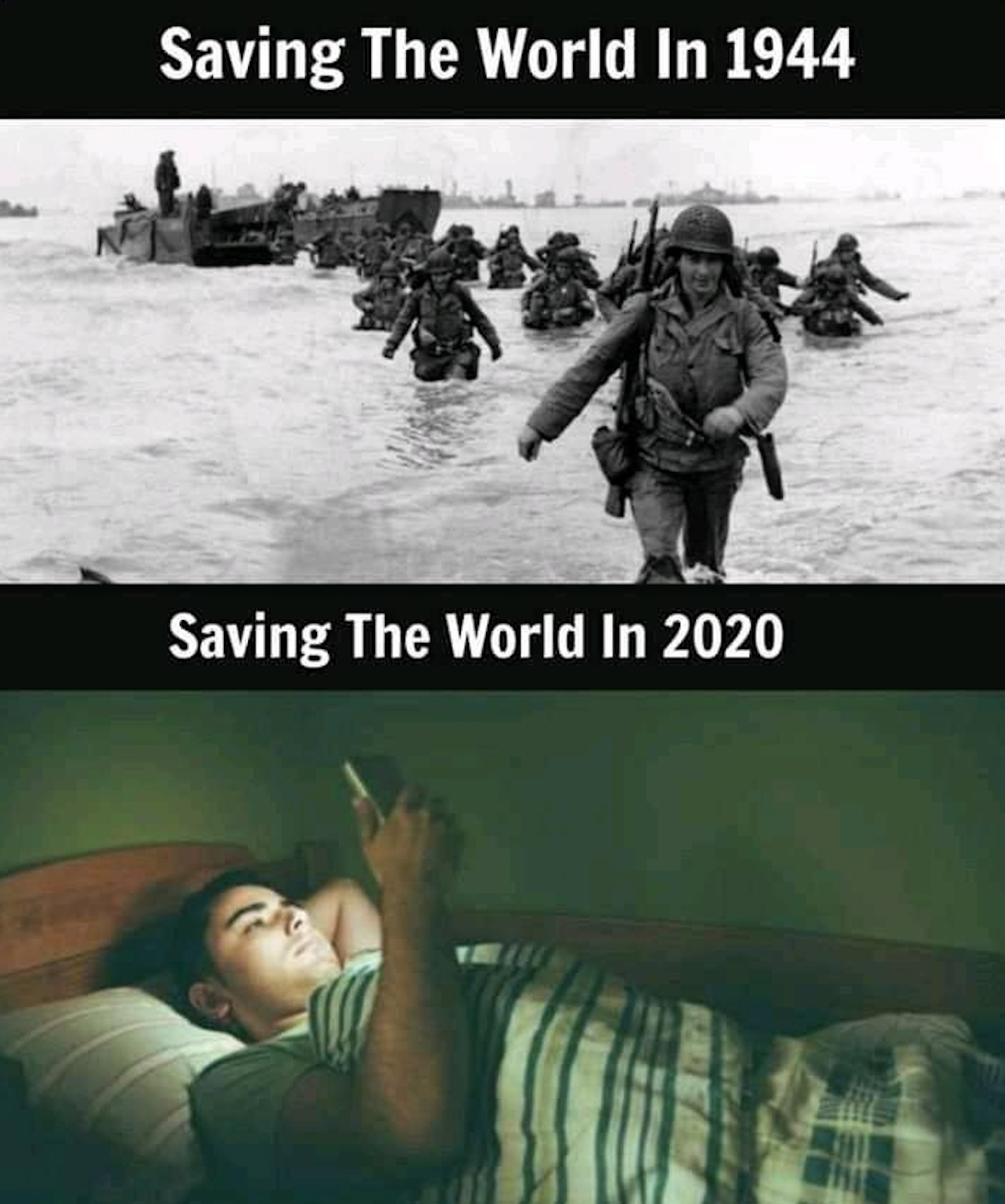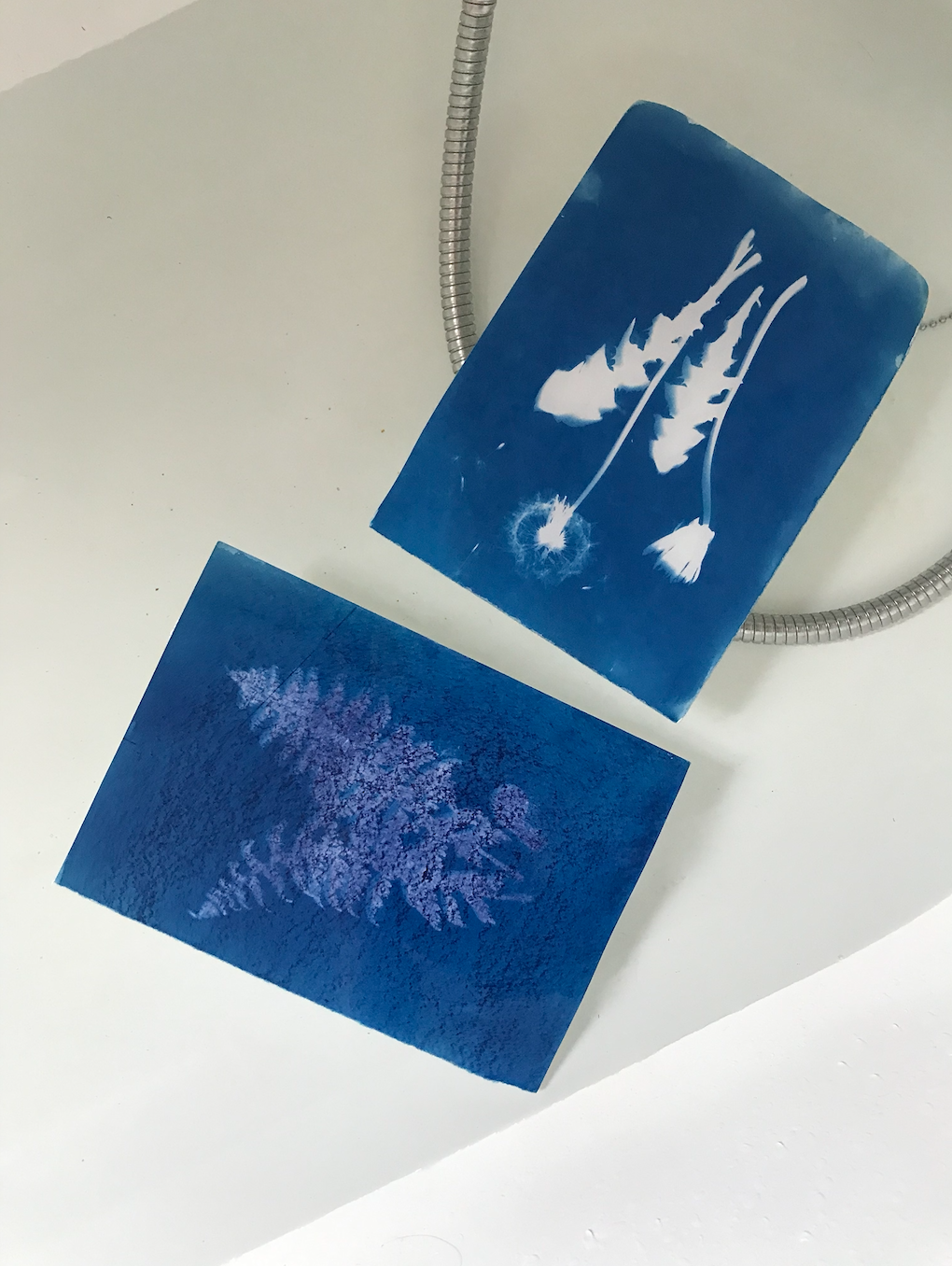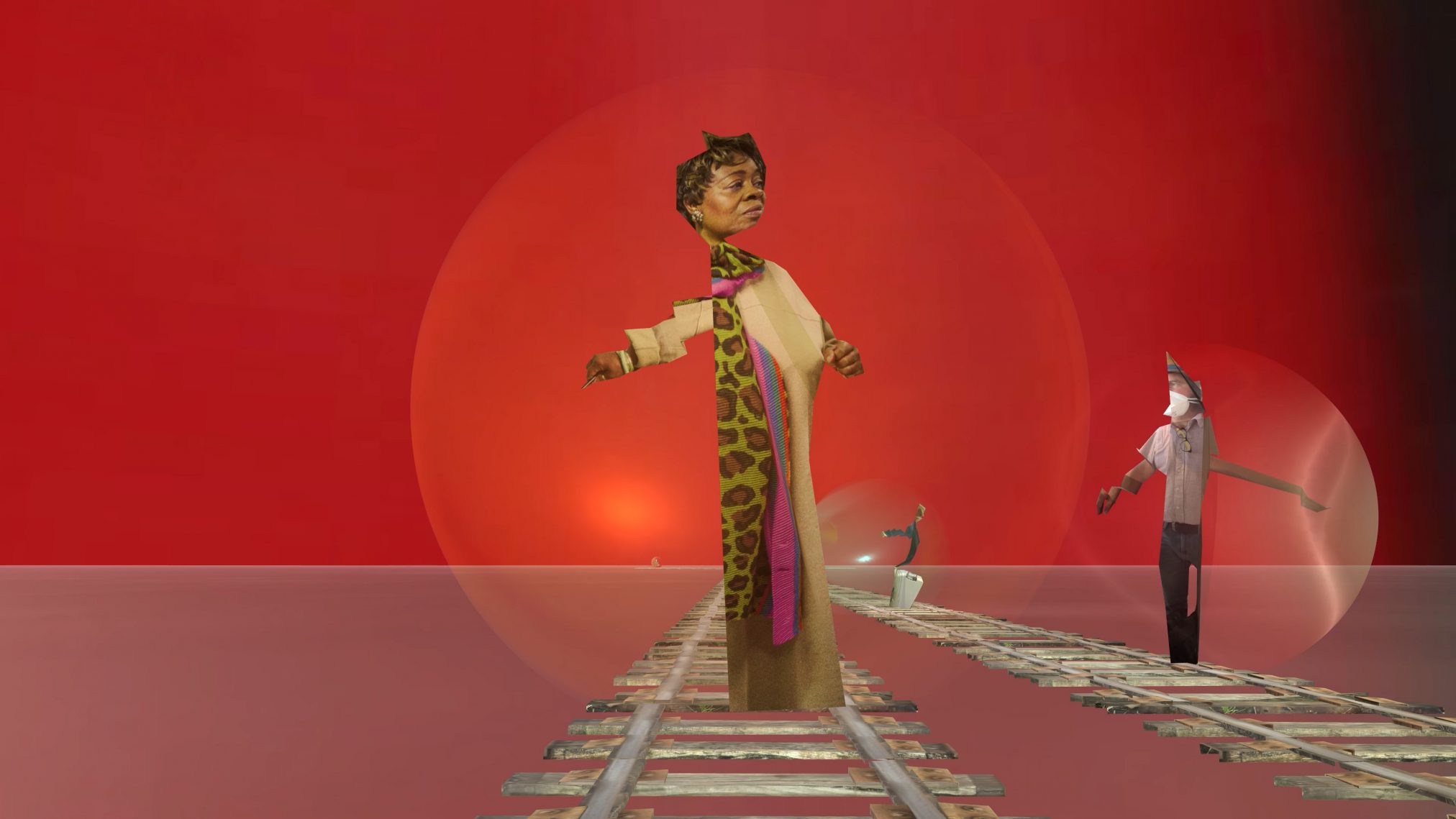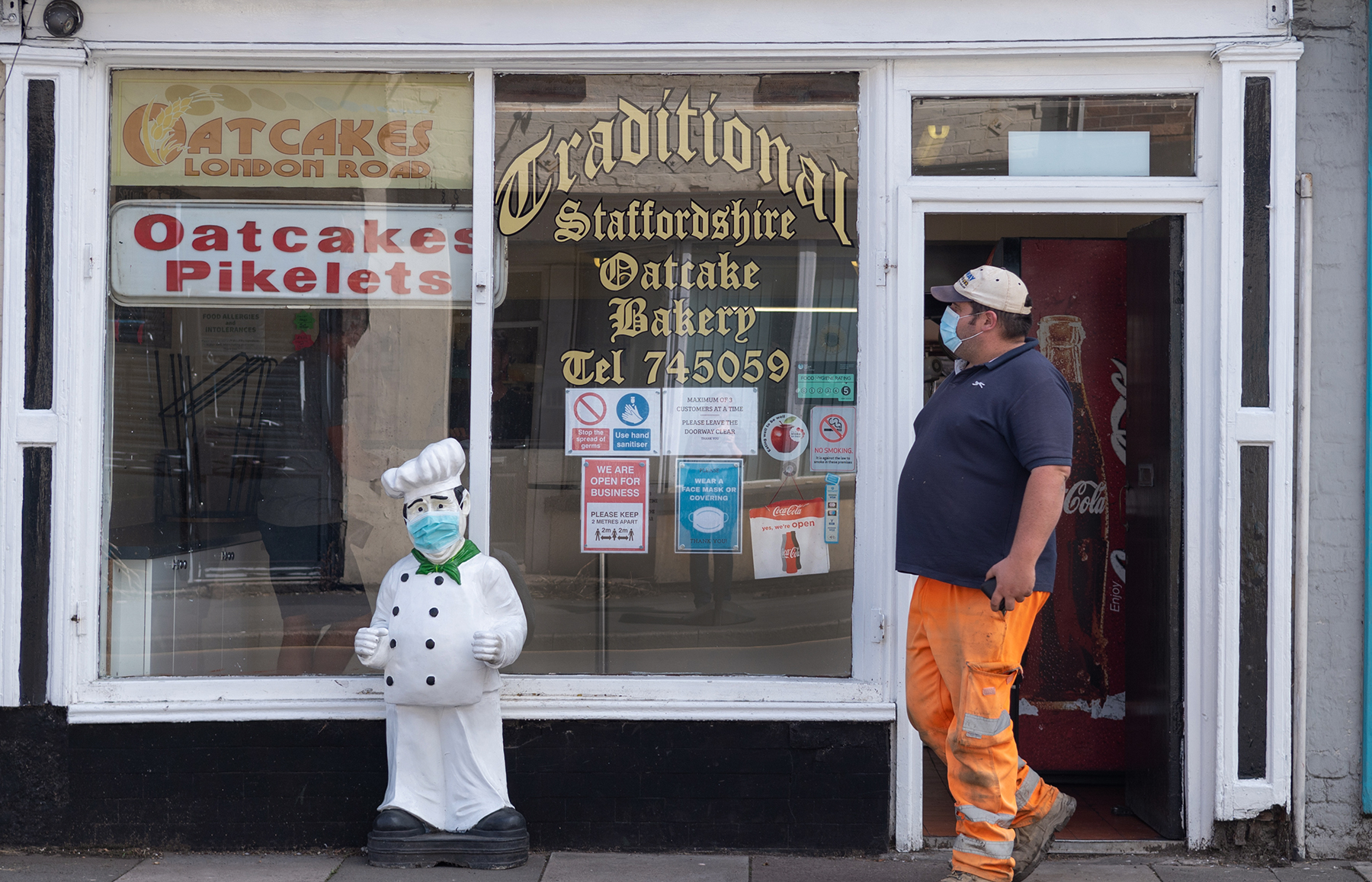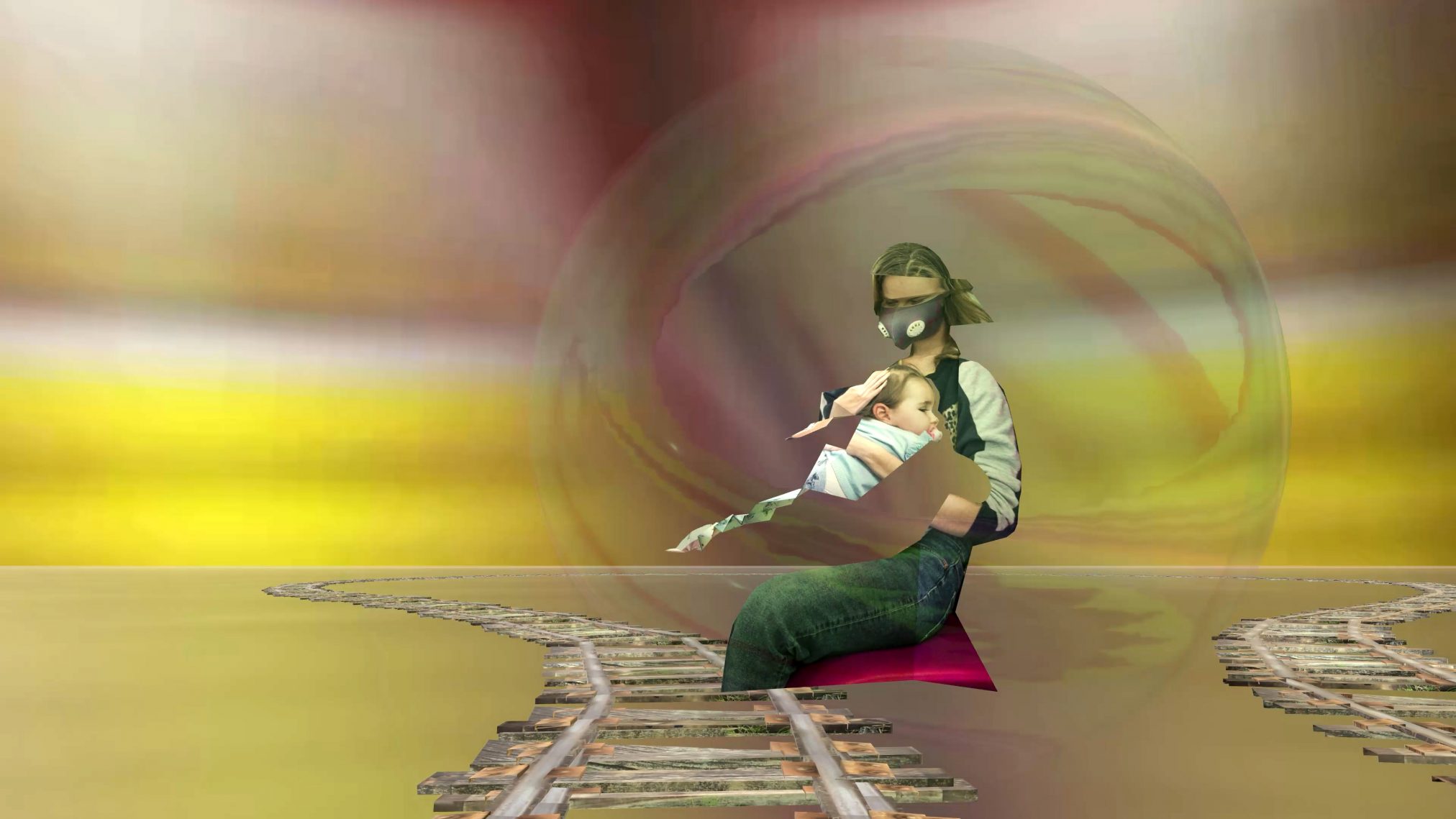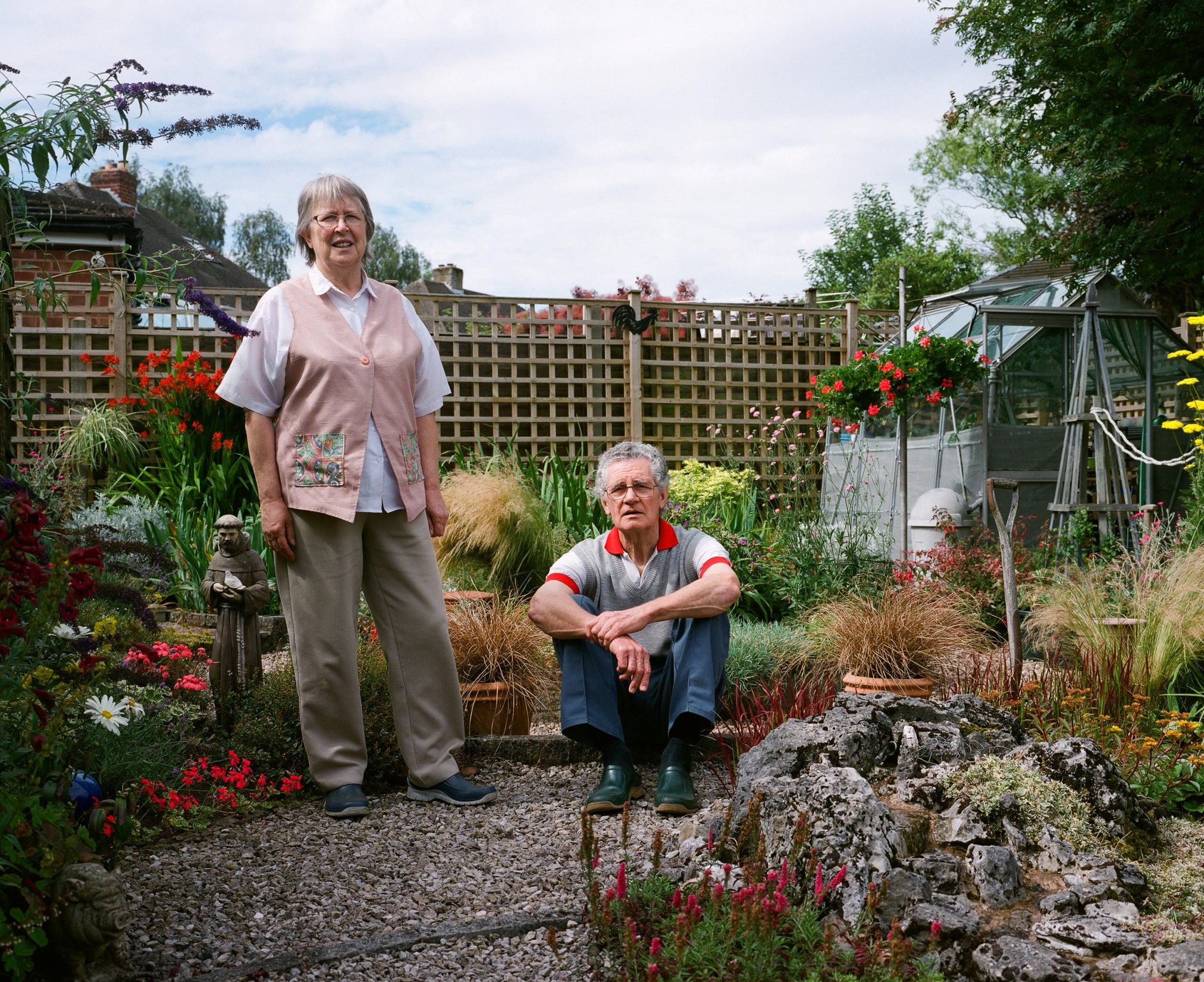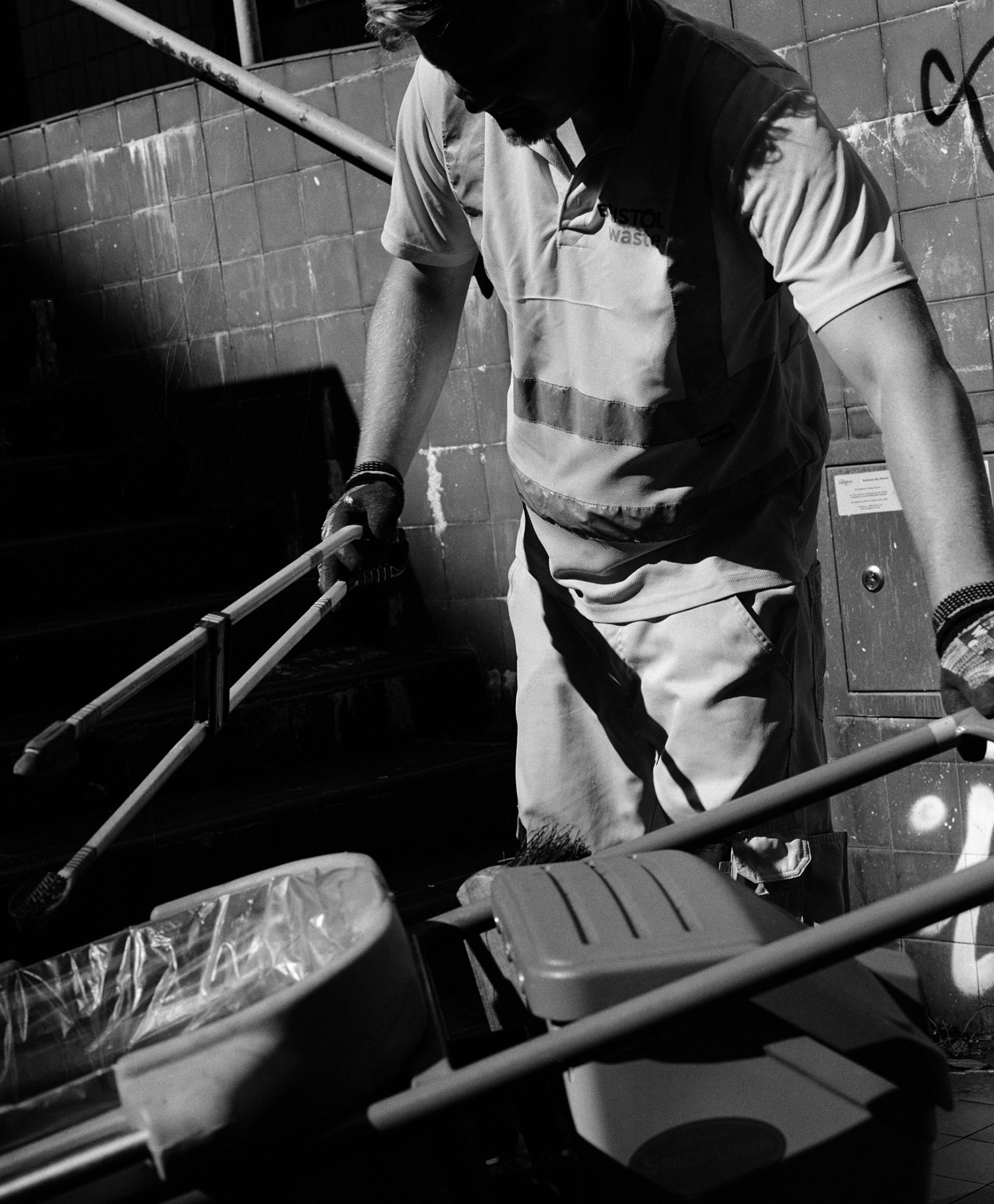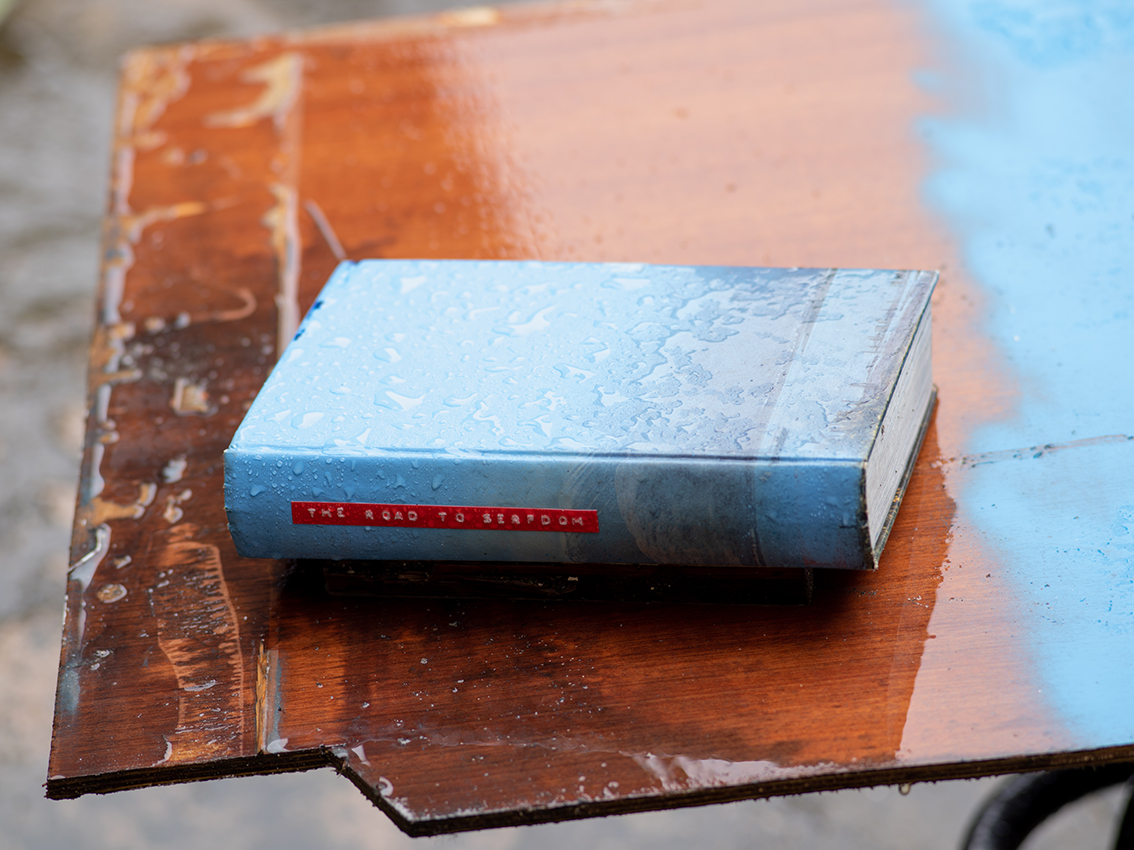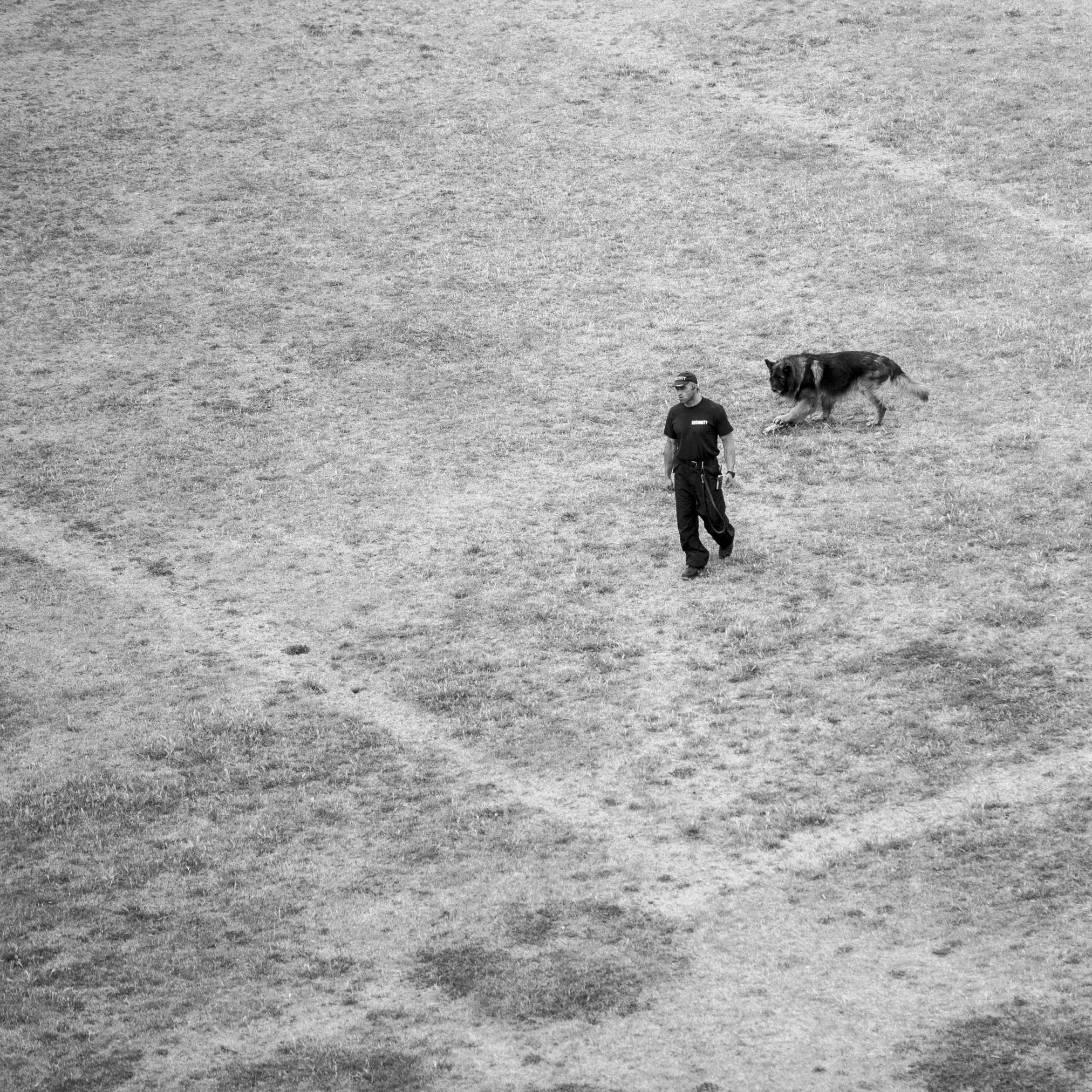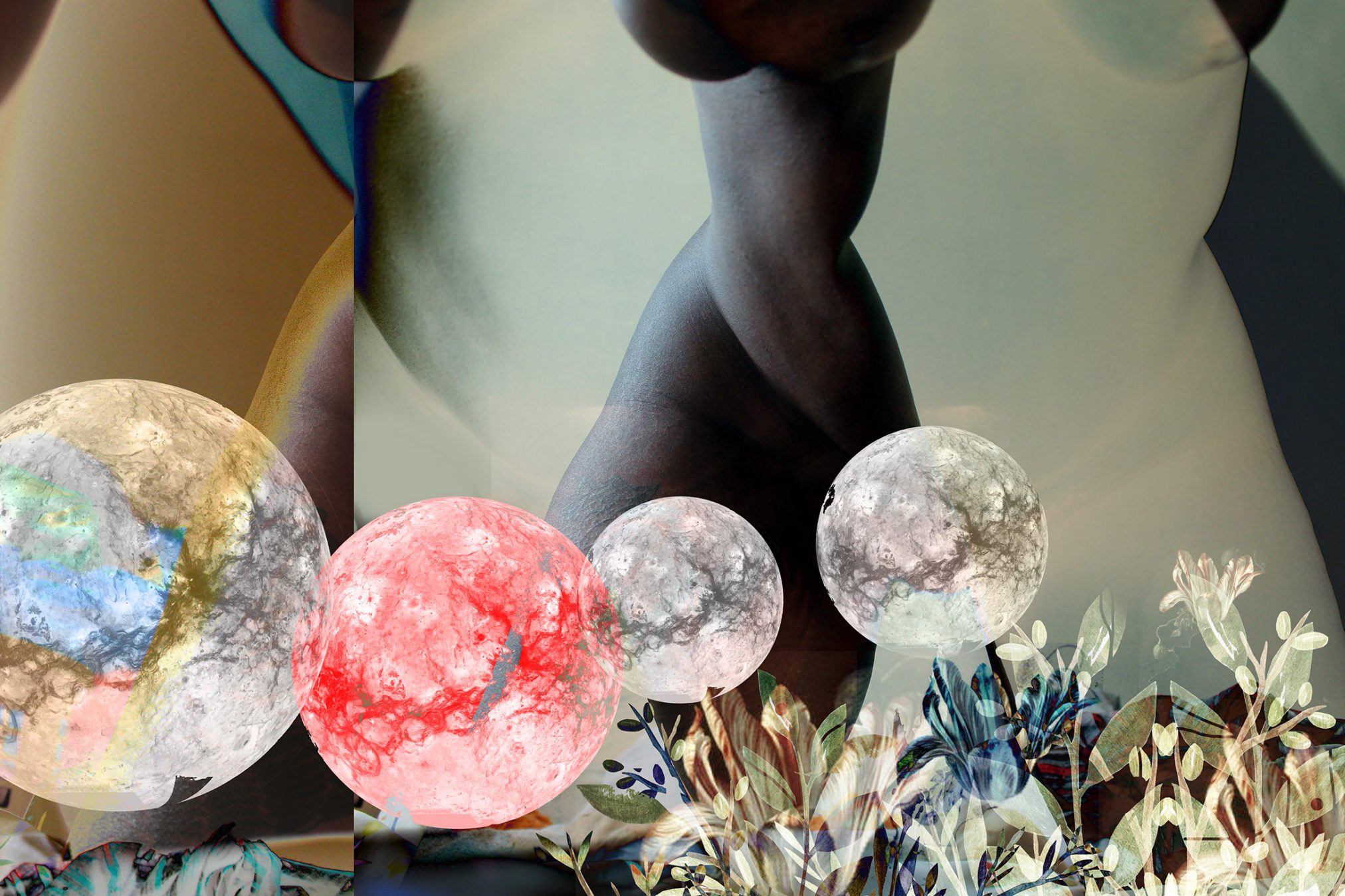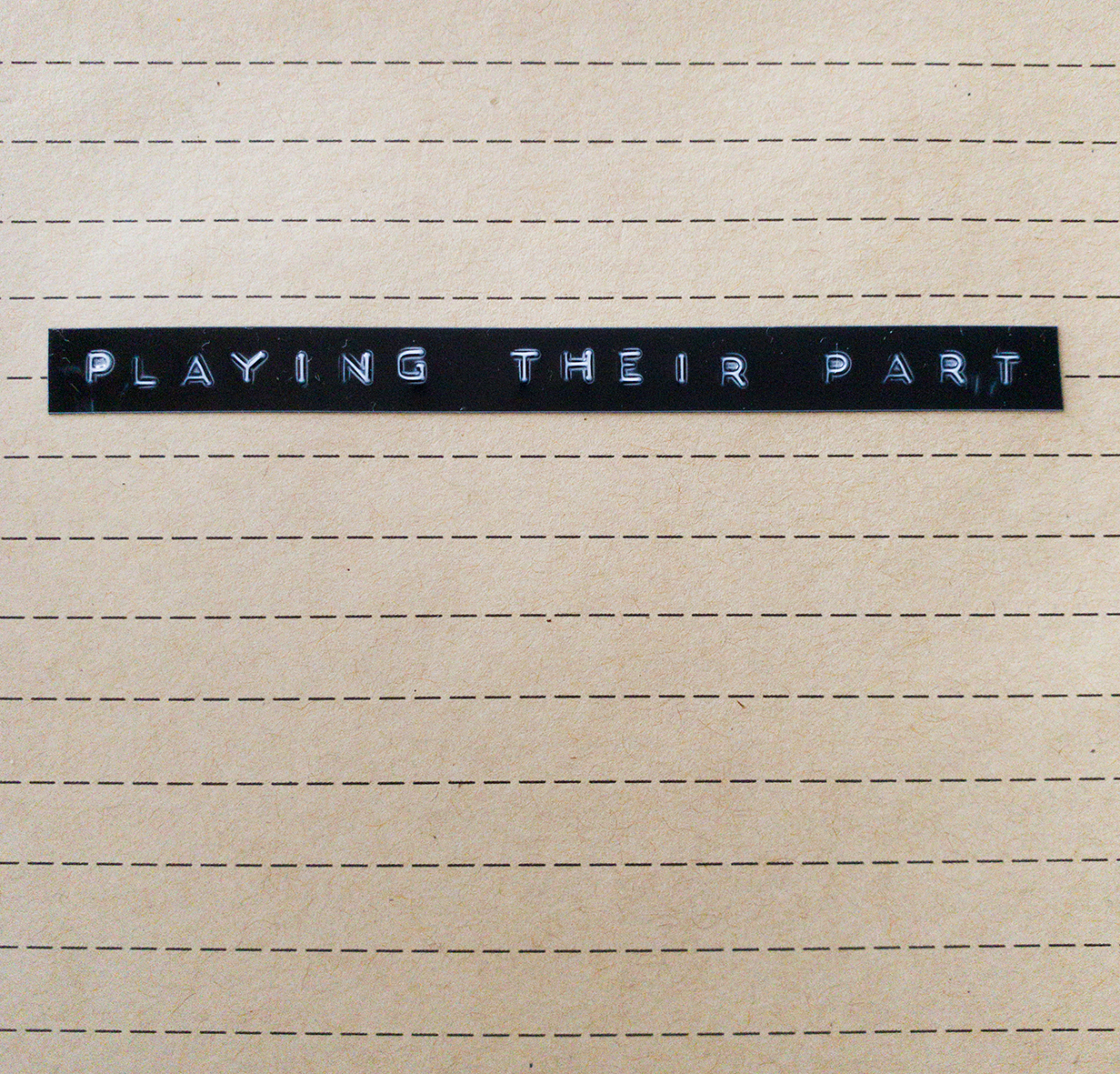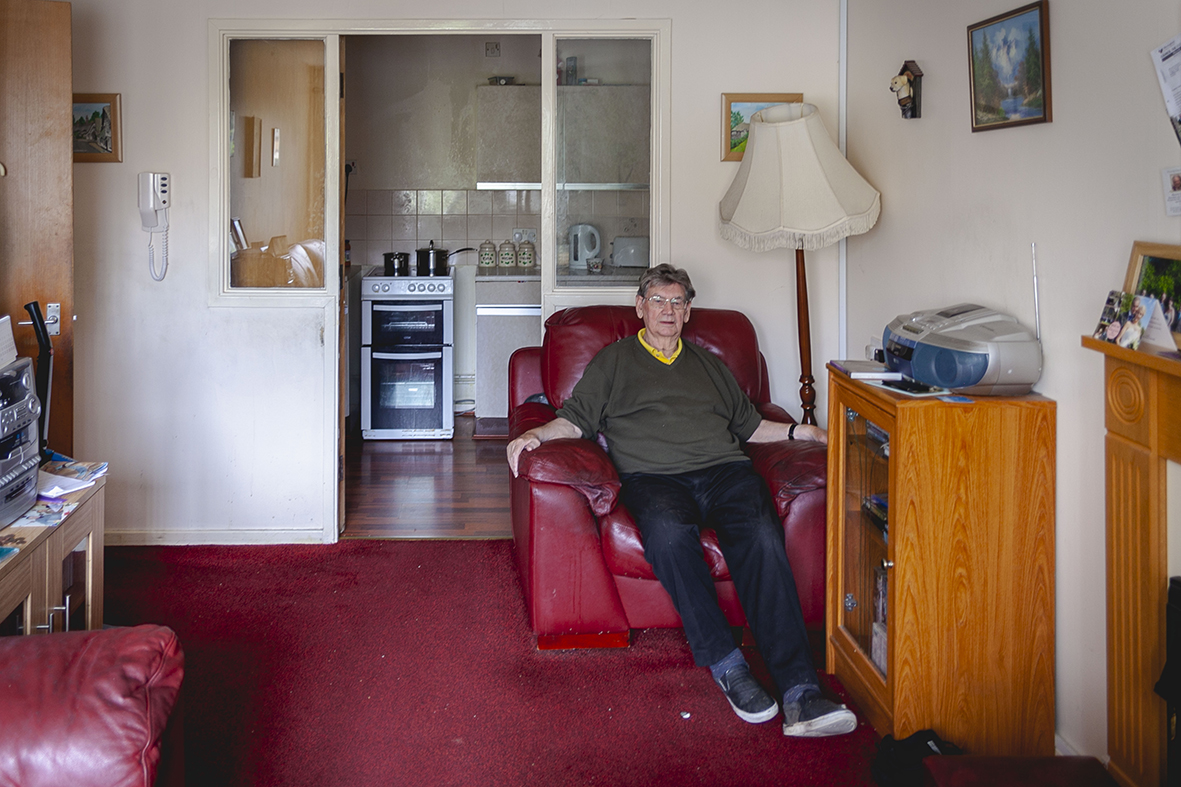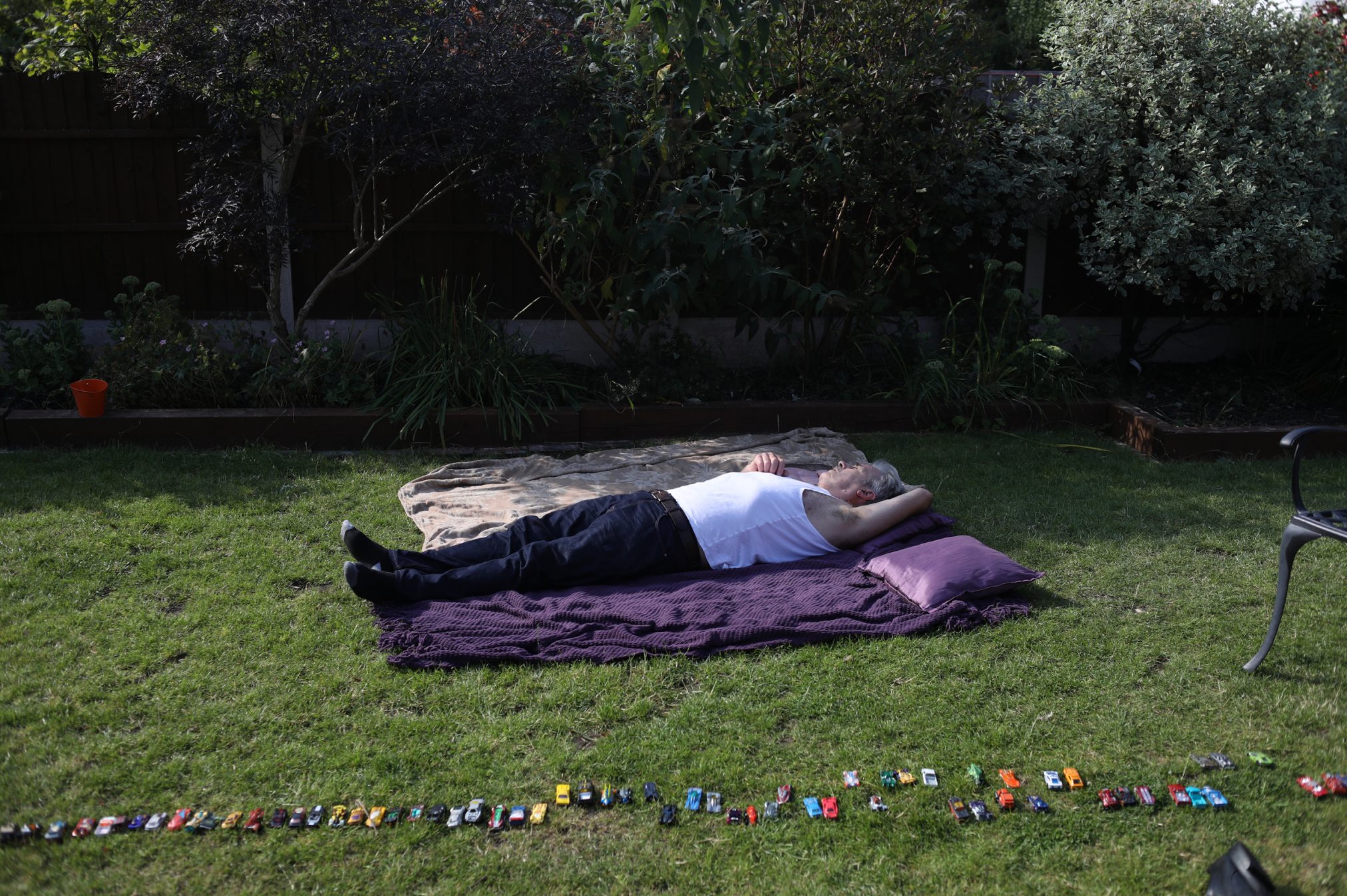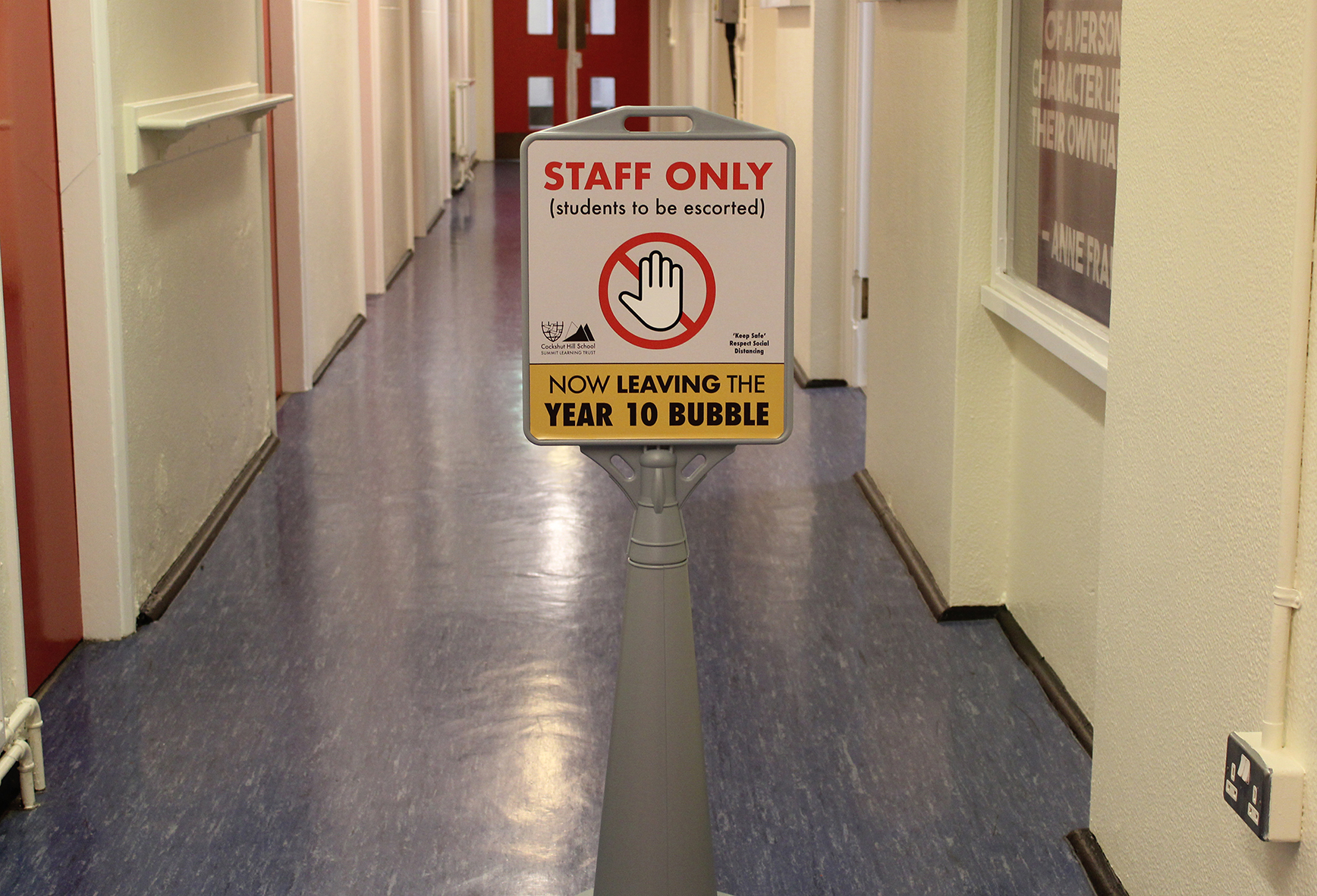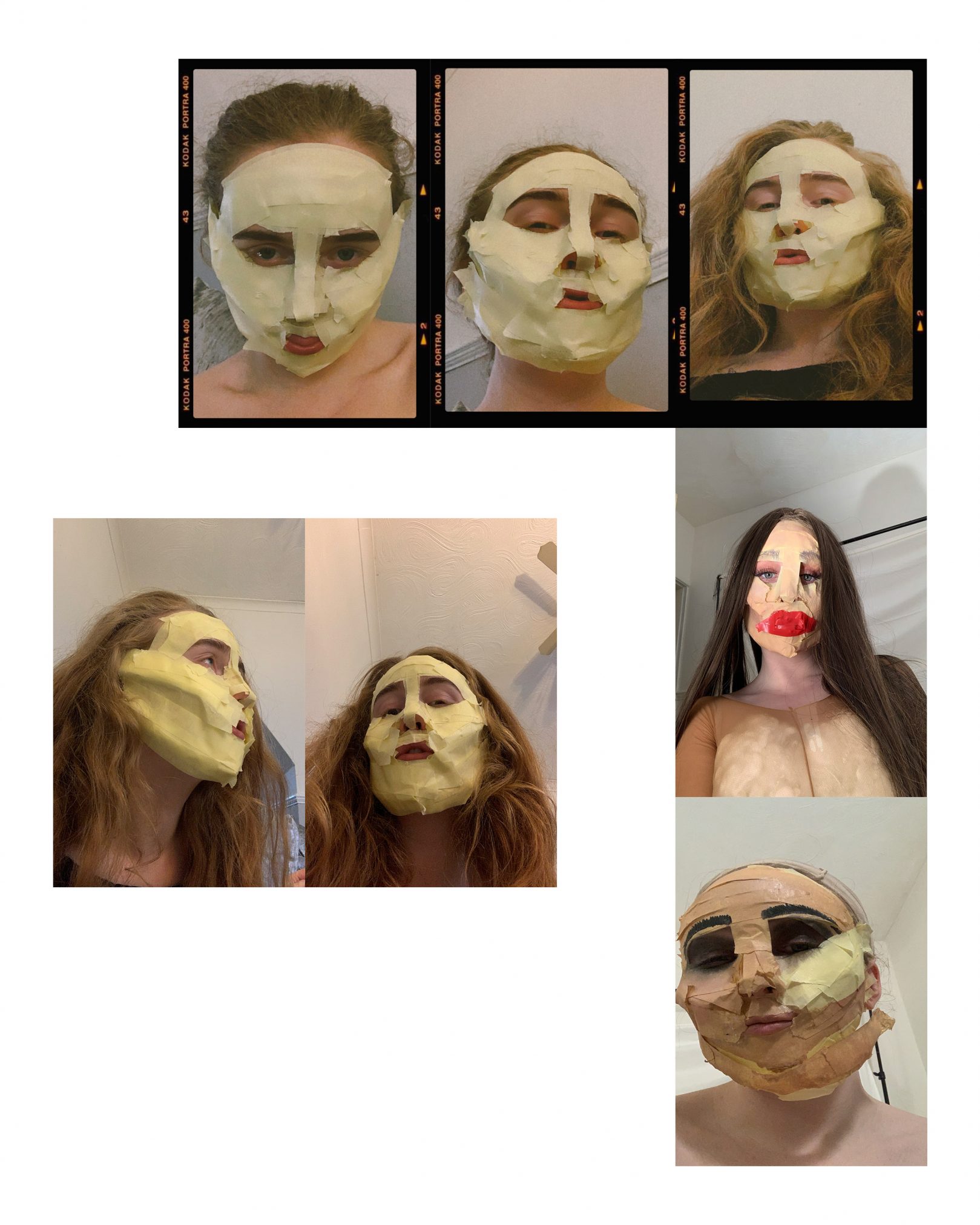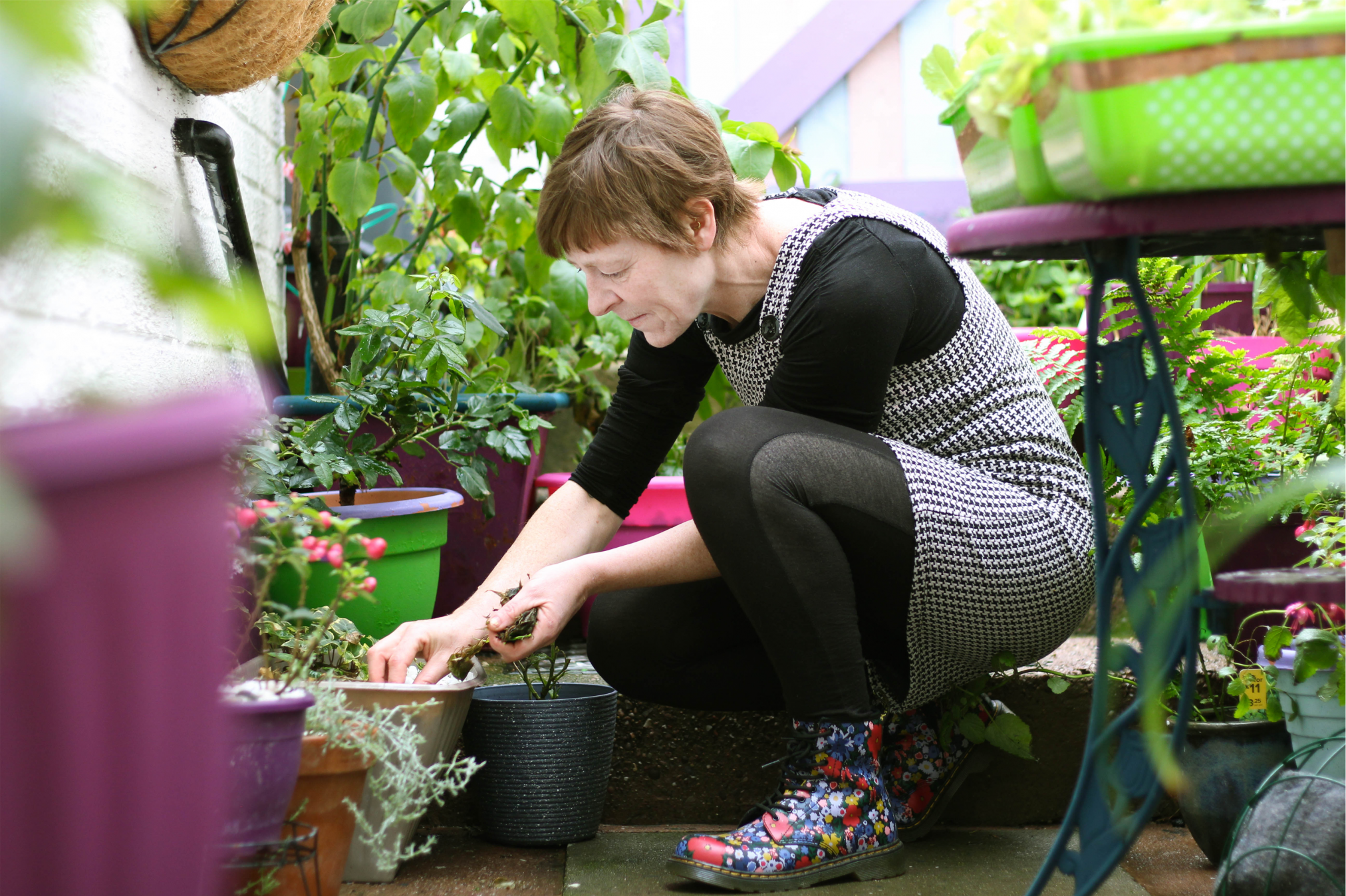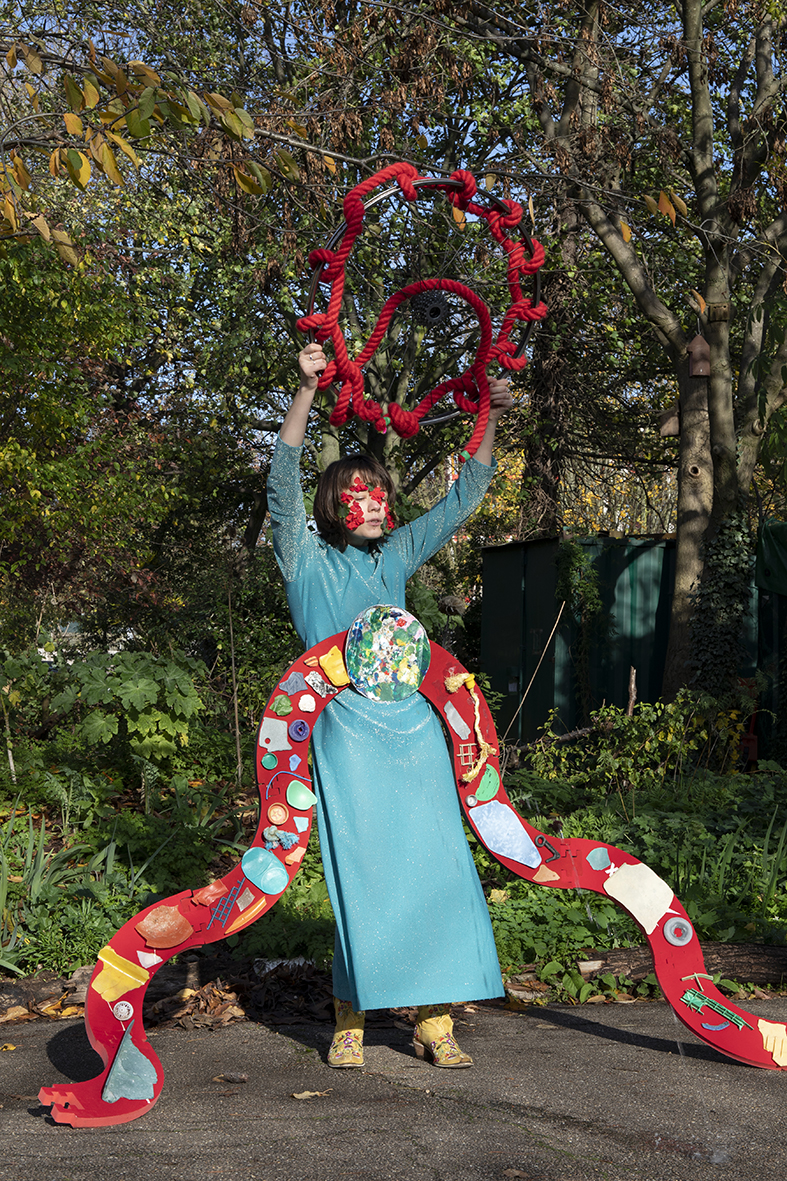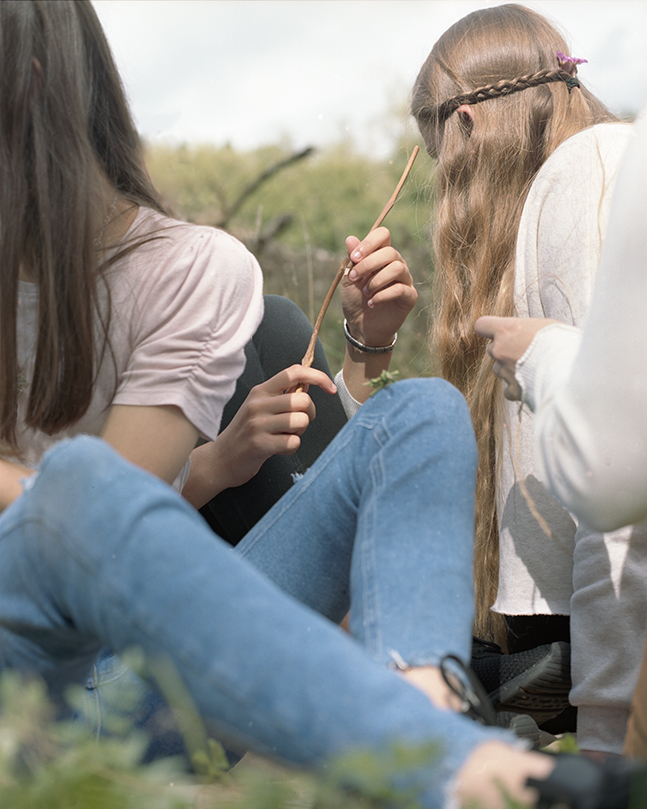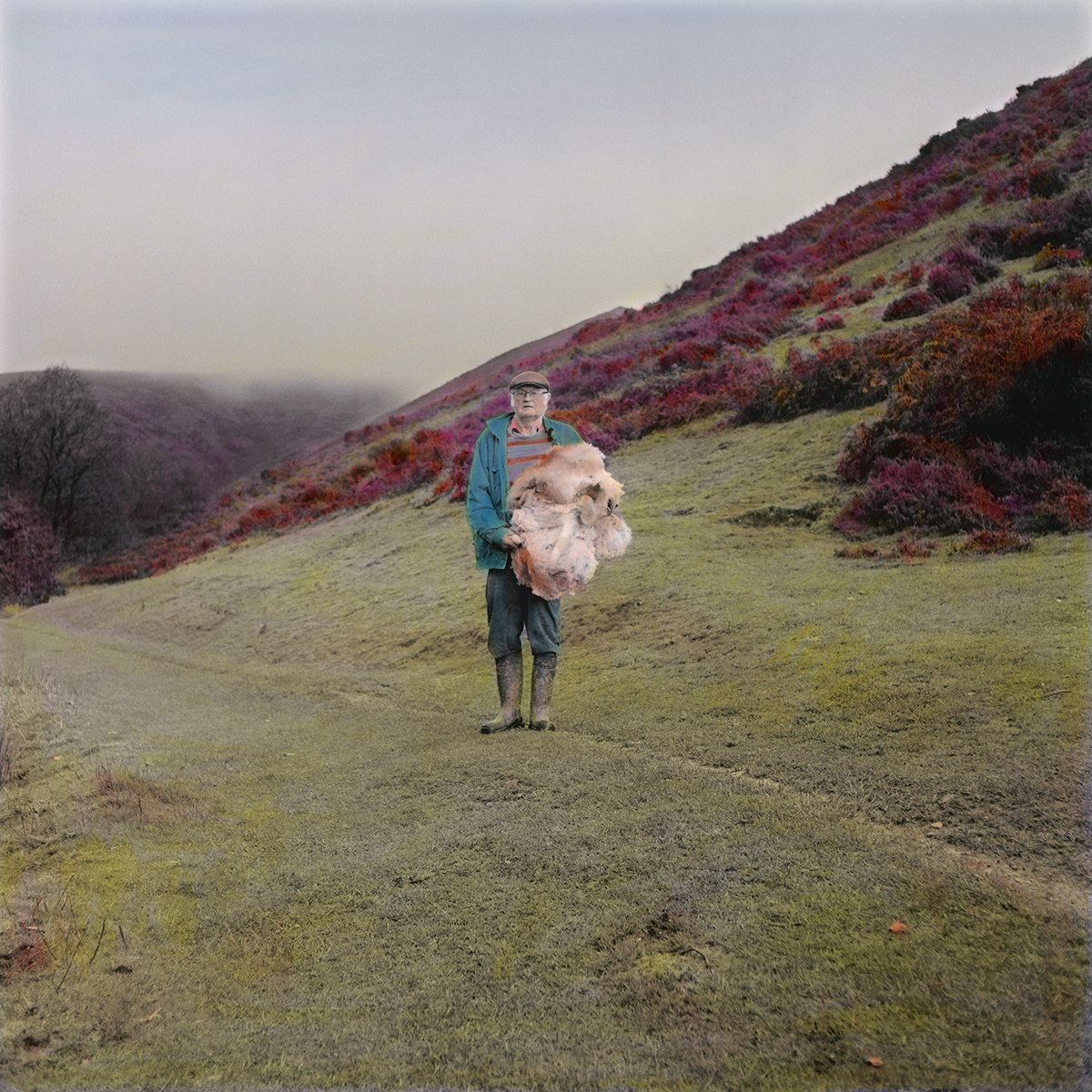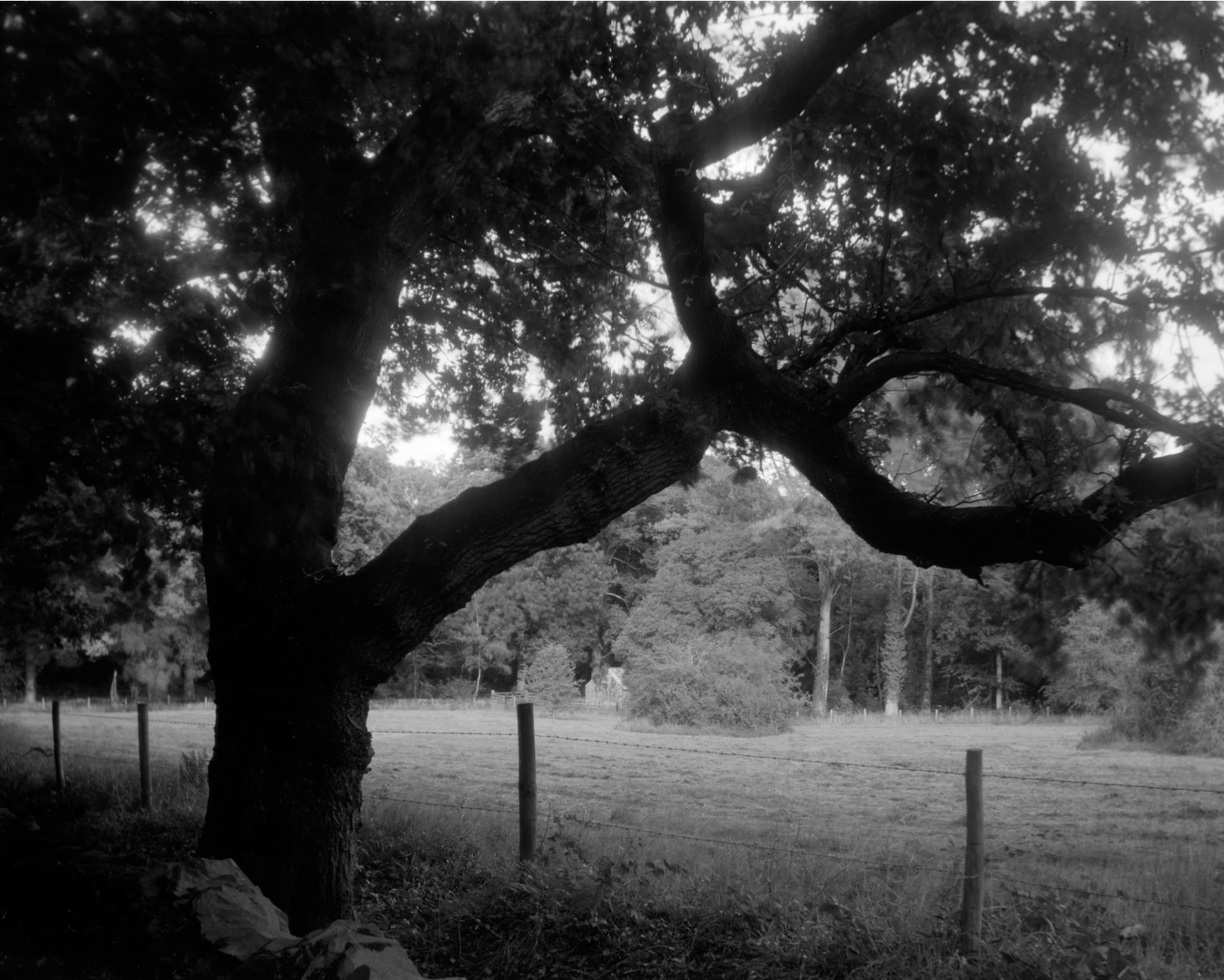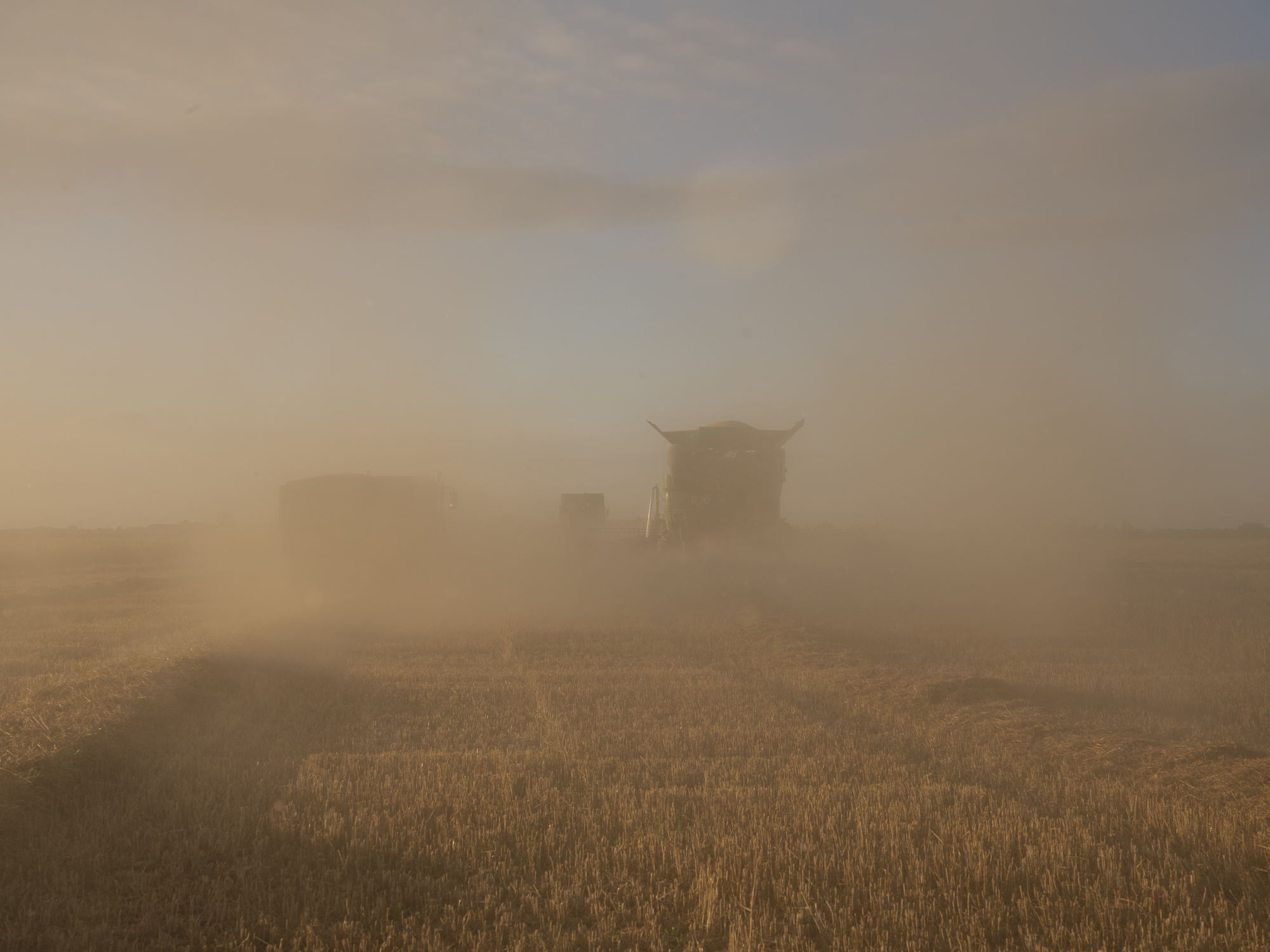01 01 2022
OUR PEOPLE, OUR PLACES
*This publication is now sold out.
The Our People, Our Places publication is part of a project led by Appetite and GRAIN Projects who invited people to take part in a collaborative photography project about life in Stoke-on-Trent and Newcastle-under-Lyme.
Some of the participants were new to photography, some returning to photography and some wanted to explore photography in new ways.
Within the publication there are a wide range of projects that tackle subjects such as family life, history and memories of places and people, landscape, wellbeing, access rights for disabled people and portraiture.
Each of the participants provides a new view and imaginative reflection on the community, people and places that are important to them in their lives. The multiple views shown are a collective vision revealing the broad life experienced within North Staffordshire.
Participating Photographers; Abi Winkle / Andie Dale / Ashley Pretorius / Carol Gallagher / Deb Shenton / Donna Aubrey / Ellie Comber-Davies / Francesca Wheeler / Jo Wade / Judith Pearce / Kaz Hare / Sophia Khalid / Stephen Malkin / Tony Smith.
The publication includes an interview by artist, writer, and academic Anthony Luvera with GRAIN Project Producer Stephen Burke and two of the project participants Andie Dale and Carol Gallagher.
Participants took part in online and in person workshops that took place during 2021 – 2022, led by artists and photographers; Anneka French, Clare Hewitt, Nilupa Yasmin, Dan Burwood, Chris Neophytou, David Bethell, Niall McDiarmid, Stephen Burke and facilitated by Sammy Bishop, Appetite’s Community Participation Co-ordinator, the participants explored a variety of techniques and approaches to photography.
They experimented and made creative work on themes and subjects that were new, meaningful and personal to them, trying out Lumen Printing, Photo Weaving, Landscape, Portraiture, Still Life and Tableau, 5×4 film cameras and printing in the Dark Room.
Key to the project was the participants developing their own photographic and artistic voice, implementing the various techniques learnt, to tell stories that were important to them.
The publication includes an interview by artist, writer, and academic Anthony Luvera with GRAIN Project Producer Stephen Burke and two of the project participants Andie Dale and Carol Gallagher.
Desgin by Chris Neophytou, Out of Place Books.
The project was funded by Appetite as part of Arts Council England’s Creative People and Places National Programme.
*This publication is now sold out.

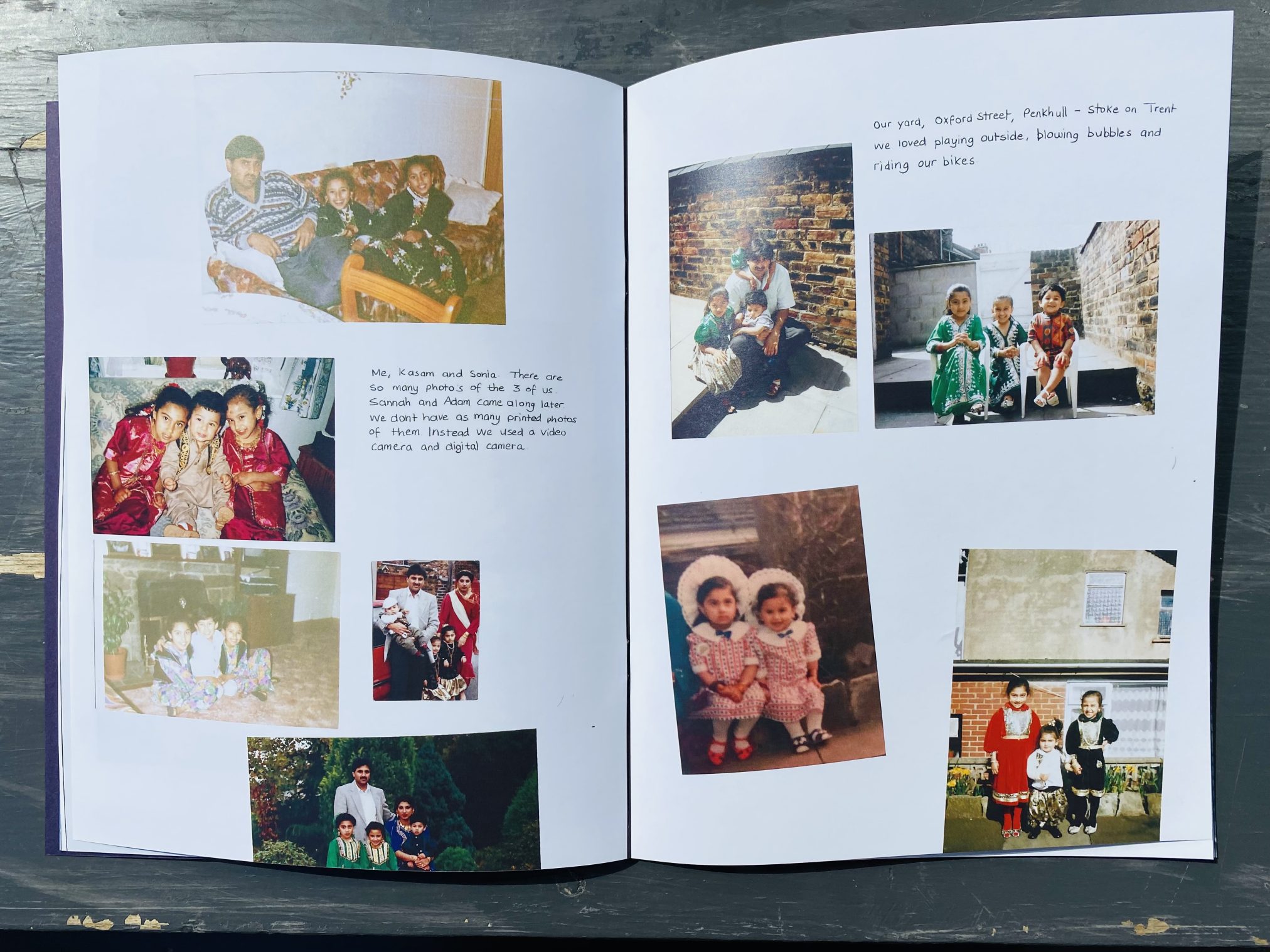
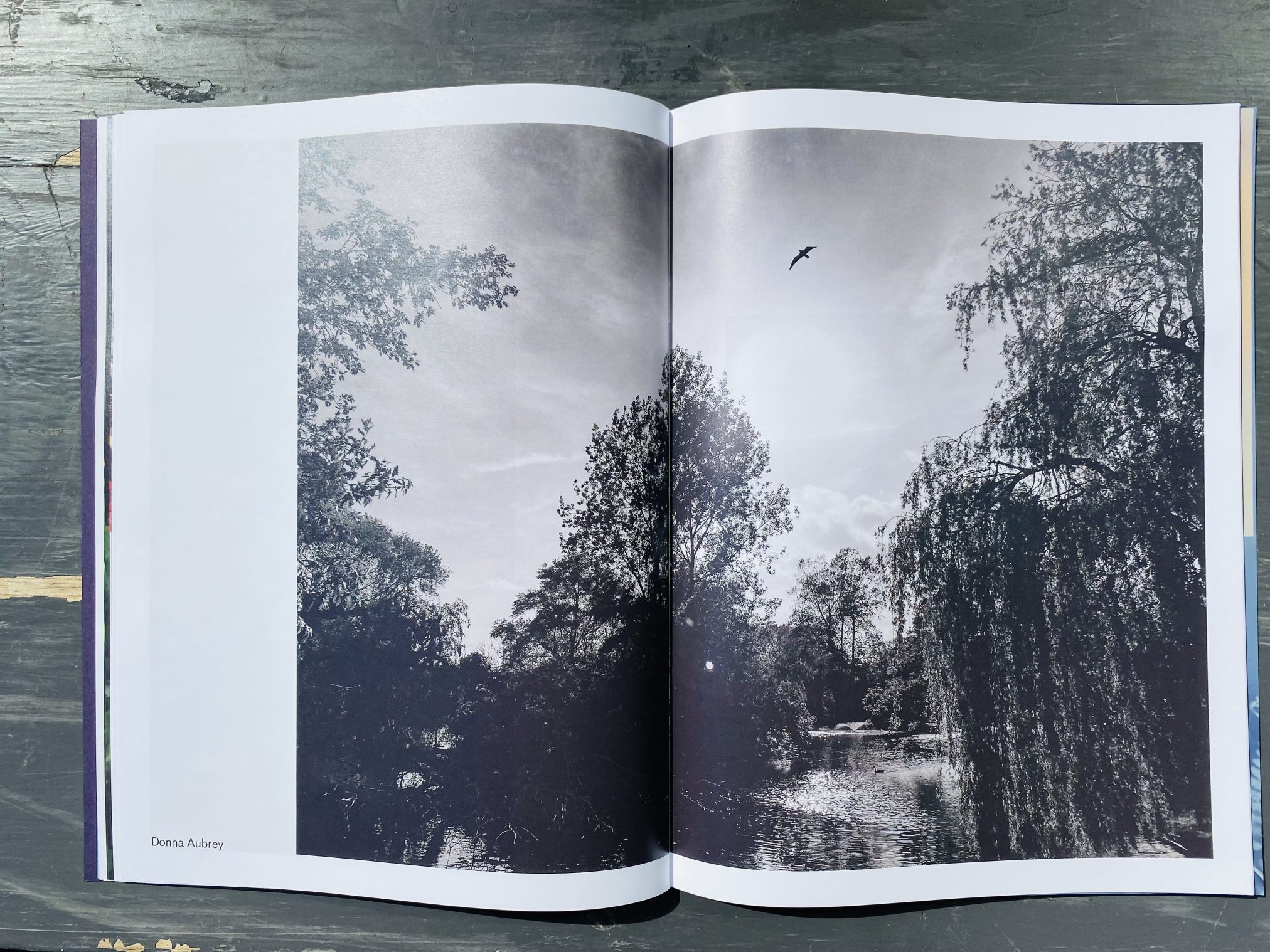
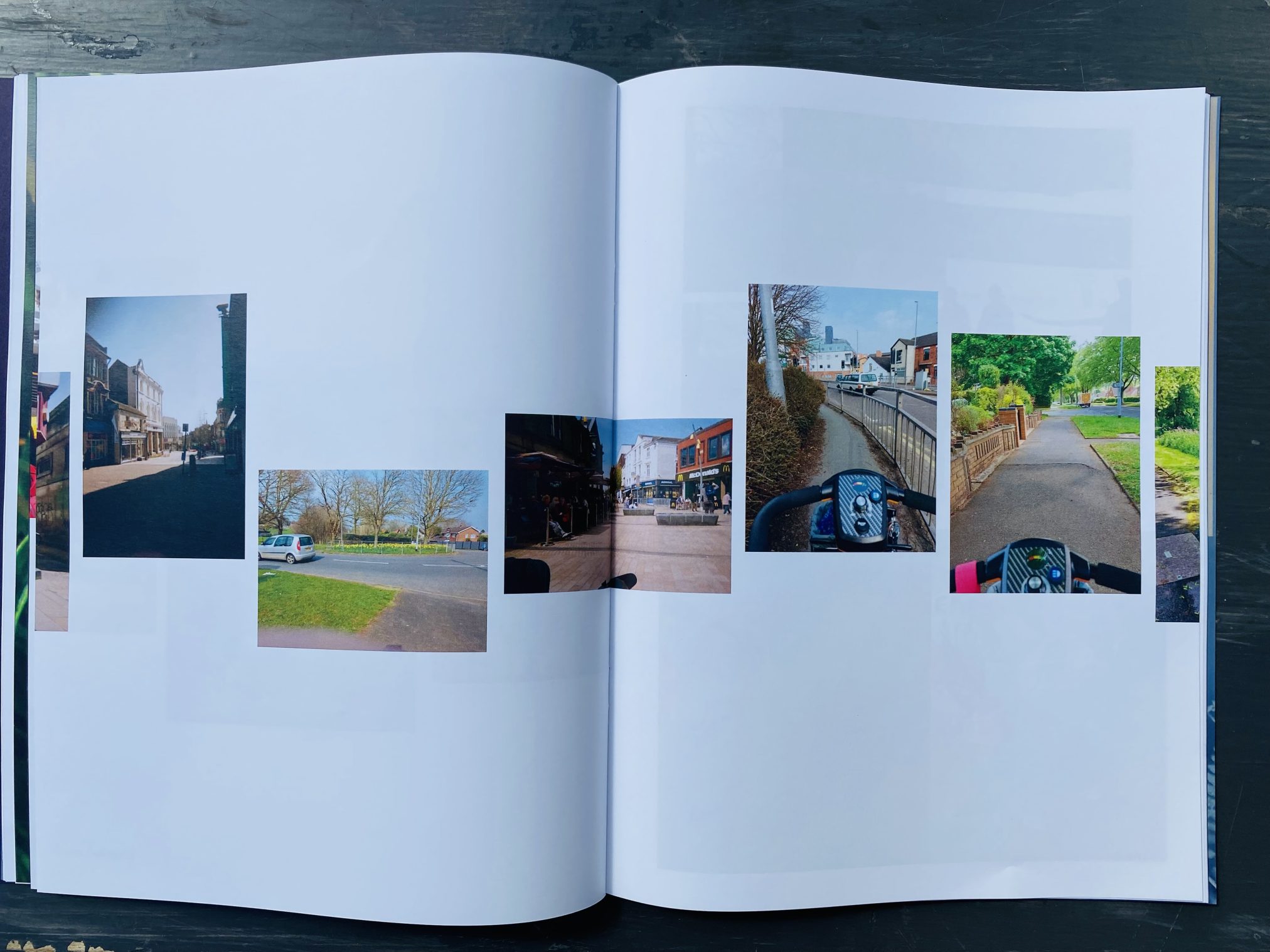
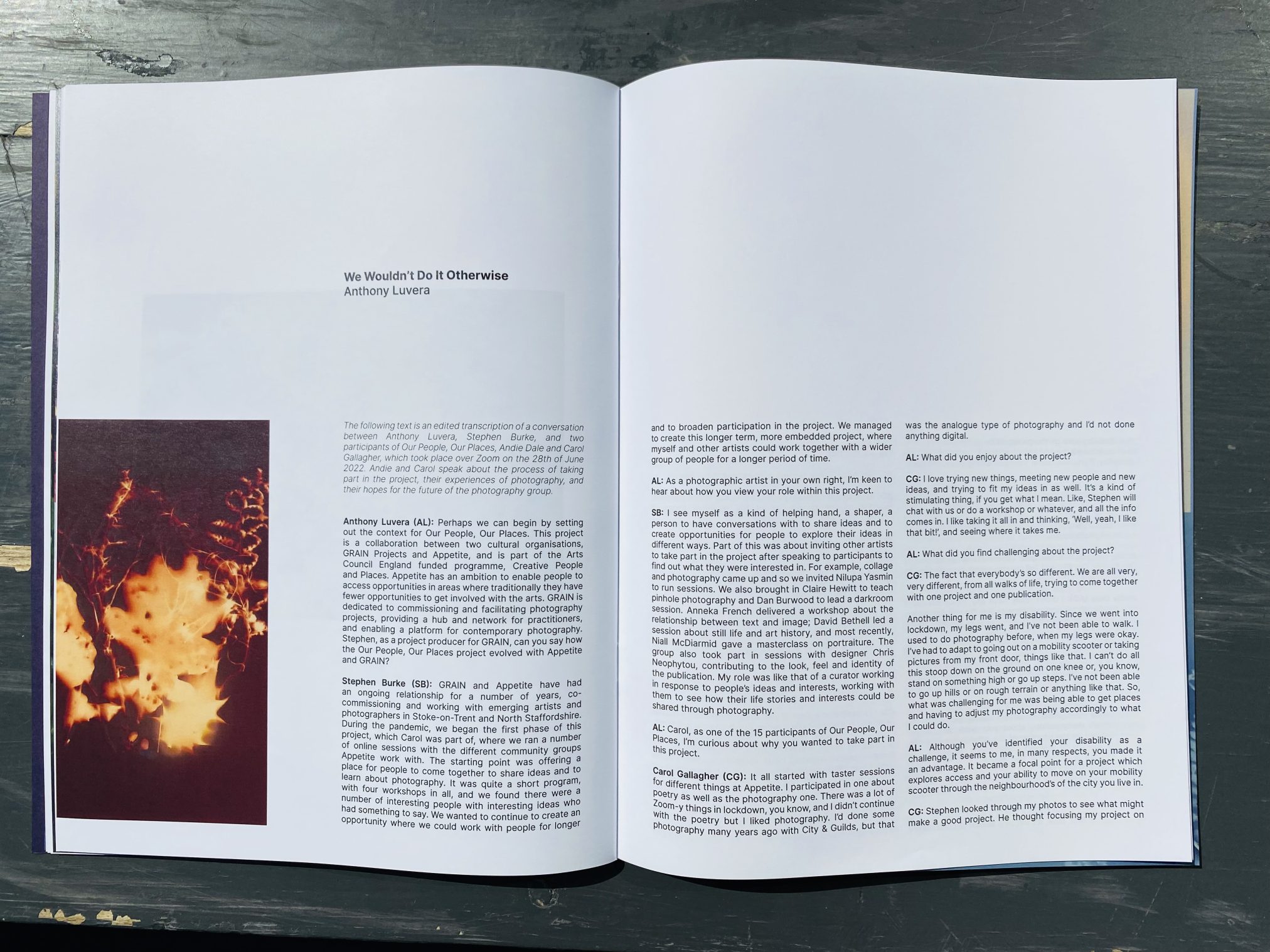
19 12 2021
Photo Play
Photo Play is a book of pictures and photography activities for children and young people focusing on play.
In the summer of 2021 GRAIN and Appetite led a series of workshops with children, young people and families in Chesterton, Cobridge, Cross Heath, Kidsgrove and Middleport, in Stoke-on-Trent and Newcastle-under-Lyme.
The images that feature in this book were made by the children and young people who took part in the workshops using disposable cameras, undertaking tasks like the ones you will find in this zine.
We would like to say an enormous thank you to everyone that made photographs with us and took part across the five locations and to thank the artists who led the workshops -Natalie Willatt, David Bethel and Stephen Burke.
The publication will be distributed for free to young people in Stoke-on-Trent and Newcastle-under-Lyme.
Design by Chris Neophytou
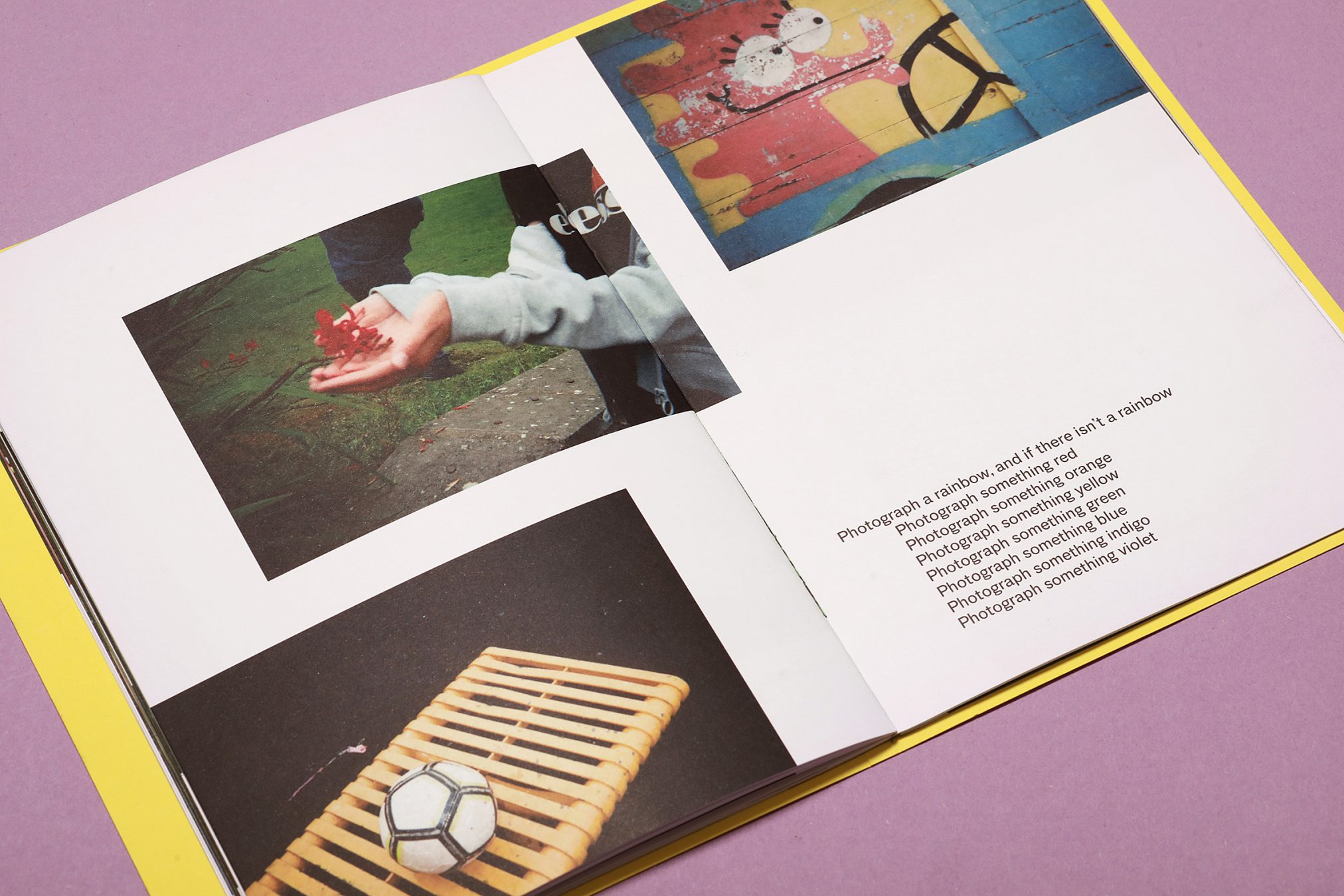
21 09 2021
Agency by Anthony Luvera
Agency is a new body of work commissioned for Coventry UK City of Culture which extends Anthony Luvera’s ongoing work made with people experiencing homelessness in towns and cities across the United Kingdom over the past 20 years. Throughout 2021, Luvera invited participants to use disposable cameras to document their experiences and places in the city that are significant to them. Participants were also invited to use digital medium format camera equipment in order to work on the production of a self portrait for the artist’s ongoing series Assisted Self-Portraits. The final images will be exhibited along Warwick Row, a road containing many estate agents that leads into the city centre from Coventry Train Station, throughout the duration of the HOME festival and featured in a community newspaper distributed freely across the city.
Supported by GRAIN Projects
The exhibition will take place from Fri 08 Oct – Thu 28 Oct 2021 on Warwick Row, Coventry
Image Credit: Ruby Nixon
08 06 2021
Coventry; Visual Stories
Coventry; Visual Stories is by Asia, Aya, Daleen and Mohsin who are service users of the Coventry Refugee and Migrant Centre.
The photographs were created as part of a series of online photography workshops that took place during lockdown 2021. the participants learnt about creativity and expression through photography, about technique, photographic history, and they created photographs in response to their new lives in Coventry.
The participants have created a photographic response to their lives in the city, revealing a snap shot of the place and their relationship to it.
About the Coventry Refugee and Migrant Centre (CRMC):
Coventry Refugee and Migrant Centre (CRMC) welcomes and empowers asylum seekers, refugees and other migrants in Coventry to rebuild their lives and achieve their potential.
Forming from humble beginnings in the back of a local laundrette, the charity has grown exponentially during the past two decades and now assists over 4,000 people each year. This includes destitute families, victims of trafficking, modern slavery, unaccompanied children and those escaping conflict zones from around the world.
This project is part of a Coventry partnership which assists and empowers newly arrived individuals and families so that they can rebuild their lives in their new home. Set up in Coventry in 2014, it started out by supporting Afghan interpreters and their families who used to work with the British Army in Afghanistan.
The UK government then launched the Vulnerable Persons Resettlement Scheme (VPRS) and Vulnerable Children’s Resettlement Scheme (RVC), which resettle vulnerable families and children from countries such as Jordan, Lebanon, Iraq, Egypt and Turkey.
It is formed of local organisations Coventry City Council, Coventry Refugee and Migrant Centre, Coventry Law Centre, Coventry Citizens Advice, Positive Youth Foundation, Foleshill Women’s Training and St Francis Church of Assisi.
Currently, Coventry has welcomed over 600 refugees on the programme, one of the best responses of any local authority in the country.
The workshops were led Sam Ivin, Jaskirt Boora, Liz Hingley and Stephen Burke.
The zines & window vinyl were designed by Lotte Norris
This project has been supported by Coventry City Council, Coventry City of Culture and Arts Council England .
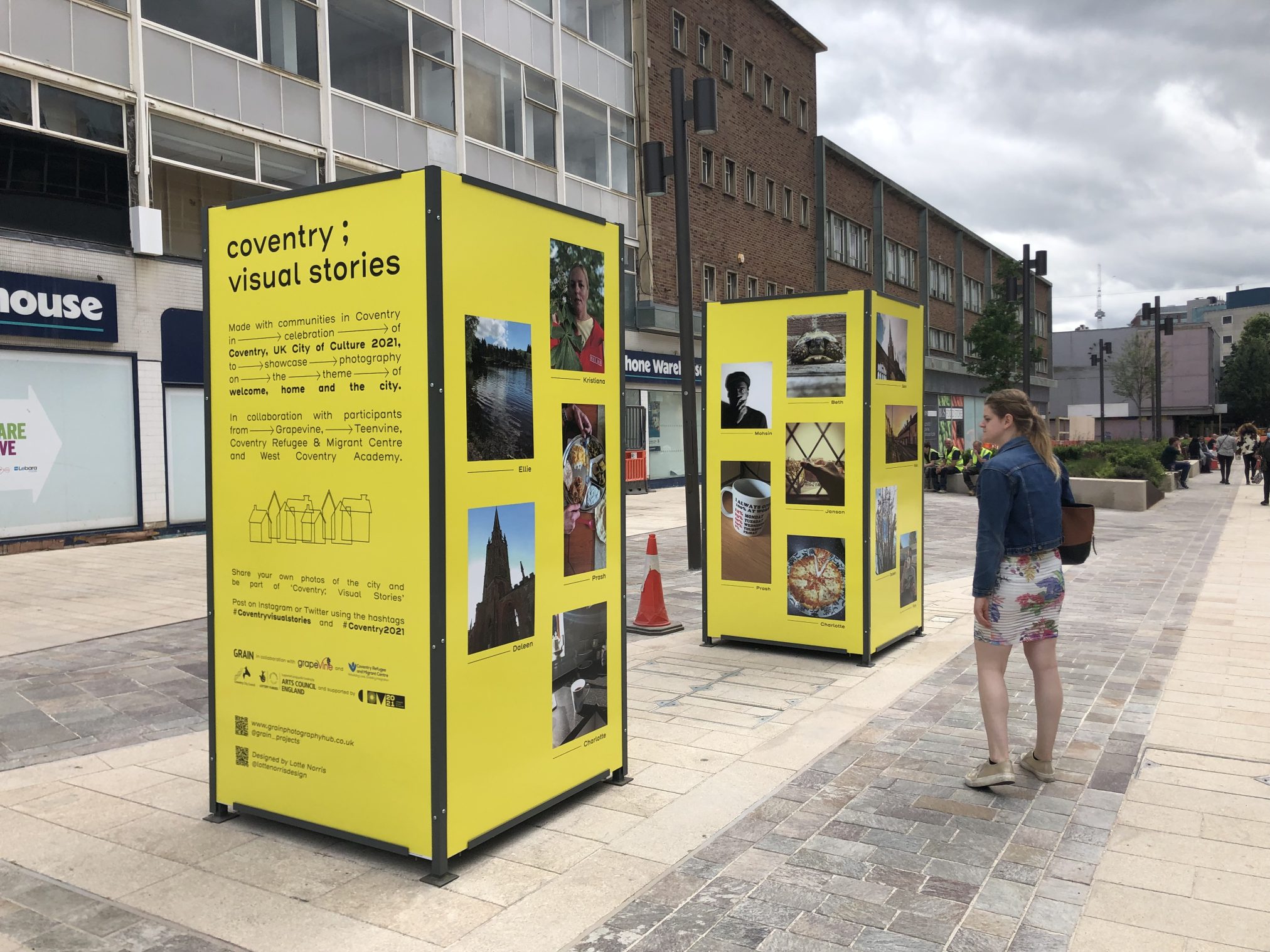
08 06 2021
Coventry; Visual Stories
Coventry; Visual Stories is by Charlotte, Ellie, Jamie, Janson, Prash and Thomas who are all members of Teenvine Plus, a development programme run by Grapevine for young people with autism or learning disabilities.
The photographs were created as part of a series of online photography workshops that took place during lockdown in 2021. The participants learnt about different photographic techniques, used different types of cameras and it was also a space for conversation & friendship where their thoughts, feelings and life experiences of Coventry were shared and discussed.
The young people have created a photographic response to their lives in the city, revealing a snapshot of the place and their relationship to it.
About Grapevine:
Grapevine is an organisation that helps all kinds of people experiencing isolation, poverty and disadvantage in Coventry and Warwickshire. They are a pioneering example of how to help people work together to solve their problems for good. They strengthen people, spark action and shift power across services. They empower local citizens with the skills and confidence to act on what they care about; connecting through their shared humanity, taking power into their own hands and regenerating their communities.
One of their many projects working towards this is Teenvine Plus, an intensive development programme for teens with autism or learning disabilities in Coventry. They help learning disabled youngsters to get the friendships, confidence and skills they need in order to mature into independent young adults able to achieve their ambitions. They strengthen people by uncovering their talents and passions, then use these to create natural networks of community support. Networks that strengthen, bring opportunity and help them take charge of their lives.
The workshops were led Ayesha Jones, Jaskirt Boora and Stephen Burke.
The zines & window vinyl were designed by Lotte Norris
This project has been supported by Coventry City Council, Coventry City of Culture and Arts Council England .
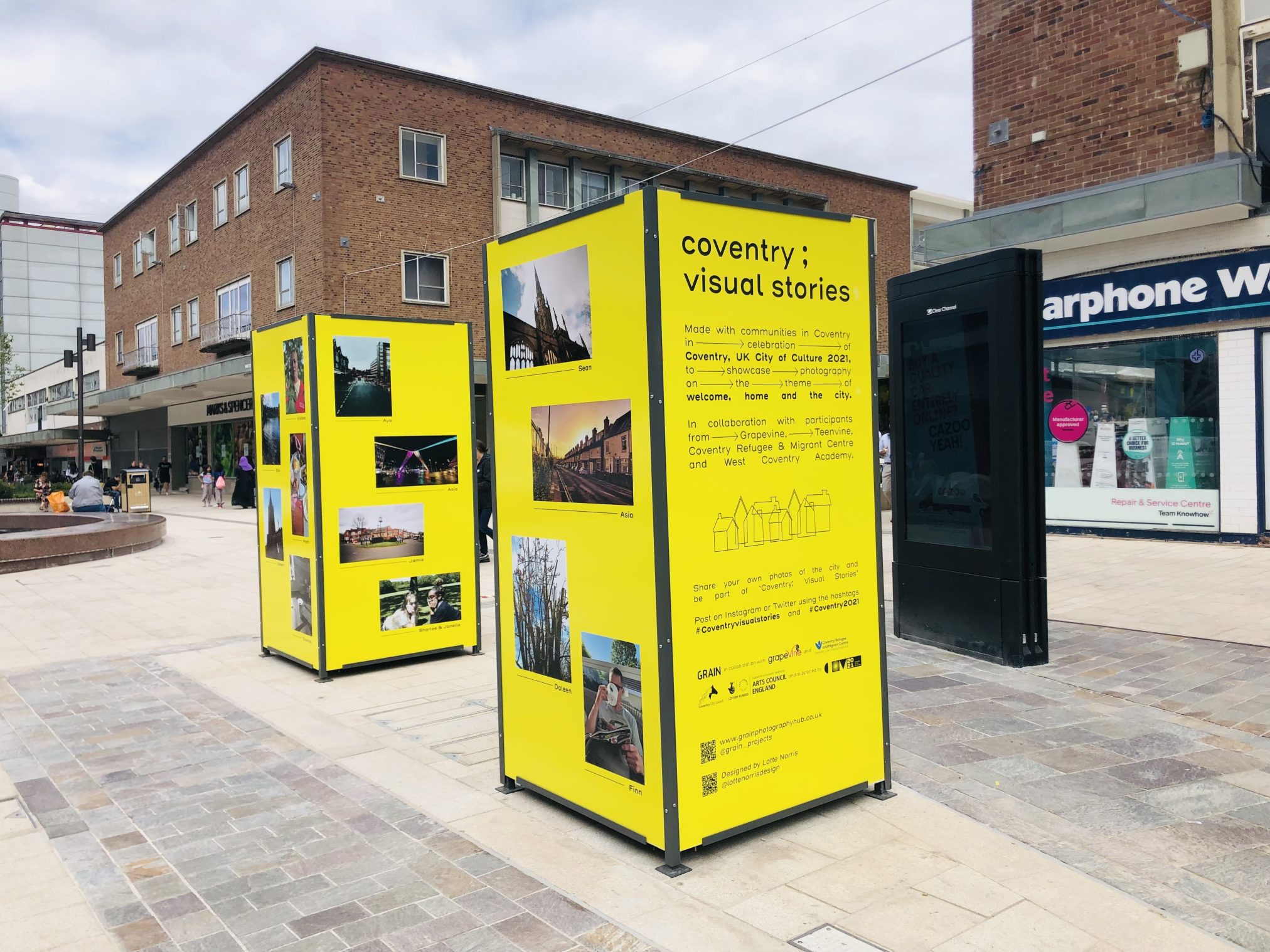
12 04 2021
The Rural Gaze
In 2019 GRAIN awarded eleven new commissions to photographers to make new work in rural communities across the Midlands. Using a range of approaches the photographers and artists explored aspects of rural life, culture and community at a time of emergency. Post Brexit agriculture, migration, climate emergency, land ownership and rights, identity and health and wellbeing were amongst the themes explored through documentary and conceptual photography.
Alannah Cooper, Emily Graham, Guy Martin, Leah Gordon, Marco Kesseler, Matthew Broadhead, Murray Ballard, Navi Kaur, Oliver Udy and Colin Robins, Polly Braden and Sam Laughlin.
The projects culminated in a publication and a symposium which disseminate the poetic, documentary, conceptual and archival approaches to photography about the rural that is not dominated by the picturesque, pastoral or romantic but by important new voices that show the complexities, connections and diversity of the rural landscape.
The symposium took place online, hosted by GRAIN and facilitated by academics Camilla Brown and Mark Durden
The Rural Gaze publication is available here.
The Rural Gaze Symposium, Recording – £5.00 , purchase via the Paypal button below:
Image Credit: Around the Stump (c) Murray Ballard
How To Apply?
The residency is a major new opportunity for a Photographer as part of the national Photographer-in-Residence Programme ‘Picturing England’s High Streets’. The opportunity in Coventry is developed by GRAIN Projects in collaboration with the Coventry High Street Heritage Action Zone Board and in the context of a wider programme of High Streets Heritage Action Zone activities.
The residency will contribute to the key local High Street Heritage Action Zone aims including, restoring and regenerating a forgotten part of Coventry’s historic townscape, boosting the local economy and celebrating the city’s rich heritage. The Burges area is the focus and forms a key element of Coventry’s surviving historic townscape. The Coventry High Street Heritage Action Zone project will help reverse decline by enhancing the special character of the conservation area, attracting more business and visitors and raising awareness of the area’s heritage within the local community.
The Photographer-in-Residence will connect with the communities in this distinct area and contribute to the cultural activities that are planned in the lead up to the development of a new heritage square and public space.
Coventry; The Burges, Coventry High Street Heritage Action Zone | Historic England
About the national photographer-in-residence programme
Picturing England’s High Street is a three-year project which includes six photographer-in-residence programmes at six high street locations across England. For more information see Open Call: Historic England, Picturing England’s High Streets – Photoworks.
England’s high streets have a long history and have always been at the heart of our communities. They are our landmarks, points of reference and meeting places. Across centuries people have gathered together on high streets, from market days to turning on the Christmas lights; coffee dates to national jubilees.
Every high street in England, whether it is in a medieval market town or a post-war city centre, has a unique and distinctive history that creates identity and a sense of place. Despite this, high streets are struggling, and need to adapt to survive. This commission will help people reconnect with their high streets, seeing them as places that can thrive and are of relevance to them and their lives.
The photographer-in-residence programmes are a key part of this Picturing England’s High Streets. The six photographers-in residence will work with local communities to reimagine the high street, producing images which will become part of the Historic England archive.
High street users and the community are at the heart of this project and we are looking for photographers whose practice is socially engaged. We are proposing a way of working rather than a thematic or visual approach.
The project starts with a simple provocation; ‘Your high street: Investigate before, picture now and imagine the future……’
We will use this provocation as a creative springboard for a socially engaged, diverse, community led commissioning for the 6 photographer-in-residence programmes.
What are we expecting?
We are looking for a photographer who has an interest in Coventry HSHAZ and whose practice embraces the opportunity to collaborate with the local community. We would welcome applications from socially engaged photographers with a connection to Coventry – although this is not essential.
The Socially Engaged Photographers role will include working closely with local partners to develop relationships with communities to develop visual narratives that are meaningful to them. The photographer will support participants to create photographic stories themselves, through a process of dialogue and collaboration.
Artist Fee – £4,000 over 1 year.
Key dates and timeline
Open call deadline: May 26th 2021
Short list contacted: June 4th 2021
Interviews: June 10th 2021 (TBC)
Start date: Summer 2021 HSHAZ residency begins
End date: End Summer 2023
How to apply
For more information and to apply download the Brief here.
Download Equal Opportunities Form here.
11 03 2021
Covid 19; A Year Lived
During 2020 GRAIN Projects awarded commissions and bursaries to 22 new bodies of work responding to Covid 19 as part of a national programme. Photographers, artists and writers created series, text and imagery responding to and documenting unprecedented times.
Work by eight artists from this programme feature in the exhibition for FORMAT21. They show us the impact on the individual, family and communities, on our health and wellbeing, the inequalities of the pandemic, new ways of working and new closer connections with nature and each other.
Their work focuses on the private, the overlooked and the unfamiliar tropes and imagery of Covid. This is a significant record of life during Covid and the major changes to our way of living and working. Reflecting on and responding to these times as the familiar became unfamiliar the work is an important document of a year lived as never before.
See the online exhibition here.
Andrea G Artz: Pandemia to Pandemia. Artz’s commissioned work features sculptural forms made from her photographs, created as moving image works. The artist travelled on public transport throughout the pandemic to make photographs and interview people capturing their emotions and vulnerabilities.
Barnaby Kent: All People Are Like Grass. Kent’s work looks at the experience of Covid and the onset of lockdown coincided with the start of spring. Throughout the pandemic we witness the annual seasonal cycle and become aware of the essential need for access to nature.
Chris Hoare: Street Cleaners. Hoare photographed the undervalued workforce that helped keep our society going, choosing to photograph street cleaners who kept our environments, cities and streets clean during the pandemic.
Chris Neophytou: The Planting of a Fig Tree. Neophytou made work with the Greek Cypriot community in north Birmingham focusing on how the challenges of Covid-19 affected this community as people adapted to the challenges of practicing their faiths and at the distance felt between the UK and family and heritage in Cyprus.
Jaskirt Boora: Birmingham Lockdown Stories. Boora is a British Indian photographer, her work documents the community around her focusing on how people have come together to offer support and care for each other. Her motivation was to extend the feeling of good will and togetherness she experienced.
Jemima Yong: Field. Yong’s work was made in lockdown in London as she photographed the view from her bedroom window, witnessing how the same public space was being used and shared throughout 2020. Social distancing, face covering, exercise, team sports and family events feature in a typology of 76 black and white photographs exhibited as a performative work.
Lydia Goldblatt: Fugue. In Goldblatt’s series Fugue, intimacy and distance are key. The works meander, moving back and forth through the signs of routine, love and care that bear witness to family life. Chronological time, normally linear and clear, is suspended merging with emotional duration.
Shaista Chishty: Playing Their Part. Chishty looks at mainstream representations of people of colour during Covid, exploring the visual culture and tropes and the racialised press and media coverage, drawing comparisons with the propaganda of the British Empire and World War II.

In 2016 GRAIN commissioned artist Edgar Martins to respond to HMP Birmingham, the site and community. Over a number of years Martins created a significant, multifaceted body of work developed from many visits with prisoners, staff and their families.
HMP Birmingham, on starting the project, was the largest privately run, category B prison in the UK. During the duration of the project, and in response to various crises, the government took back control of the prison. Using the social context of incarceration as a starting point, Martins explored the philosophical concept of absence and addressed a broader consideration of the status of the photograph when questions of visibility, ethics, aesthetics and documentation intersect.
From a humanist perspective the work seeks to reflect on how one deals with the absence of a loved one, brought on by enforced separation. From an ontological perspective it seeks answers to the following questions: how does one represent a subject that eludes visualisation, that is absent or hidden from view? And what does it mean for photography, in an epistemological, ontological, aesthetic and ethical sense, if it does not identify with the photographic subject but the absence of it’s subject?
The work shifts between image and information, between fiction and evidence, strategically deploying visual and textual details in tandem so that the viewer becomes aware of what exists outside the confines of the frame.
Across this complex and radical body of work, Martins worked with archives from renowned European institutions, leading Portuguese physicist João Seixas, inmates and their families connected to HMP Birmingham as well as a variety of other individual and organisations such as colleges, community centres, charities, fire departments and young people’s groups.
The work was exhibited during Covid at The Herbert Museum & Art Gallery, during UK City of Culture, at FORMAT International Photography Festival and has toured to numerous major galleries in Europe as well as being shown in the context of art fairs, including Photo London and Paris Photo.
The work has featured in numerous events and symposia hosted by GRAIN, Birmingham City University and the University of South Wales.
The project was published as a photobook by The Moth House and is available here.
Artist exhibition tour:
See the online version of the exhibition here .
Photograph by Garry Jones
Picturing England’s High Street is a three year project which will deliver six photographer-in-residence programmes at six high street locations across England, as well as artist mentoring and a digital nationwide mass participation project.
The photographer-in-residence programmes are a key part of this project. The six photographers-in-residence will work with local communities to reimagine the high street, producing images which will become part of the Historic England archive. High street users and the community are at the heart of this project and we are looking for photographers whose practice is socially engaged.
The six photographers-in-residence will be selected via open calls beginning in March 2021. Working closely with Photoworks, Open Eye Gallery, Photofusion and QUAD/Format we will select six photographers via an open call to be part of the six photographer-in-residence programmes working closely with local communities in Coventry and Stoke-on-Trent (GRAIN Projects), Prescot and Chester (Open Eye Gallery), in London (Photofusion) and in Leicester (QUAD/ FORMAT).
The photographer-in-residence programmes will also include mentoring support delivered by Impressions Gallery, PARC (Photography and the Archive Research Centre), Redeye The Photography Network, ReFramed and The Photographers’ Gallery.
Picturing England’s High Street will also include a digital mass participation project due to launch in 2022. More news on this will be announced soon.
How to apply
The Open Calls for Coventry, Stoke-on-Trent, Prescot and Chester will launch in March 2021. Followed by Leicester and London, which will launch in Spring 2021. Please sign up to register your interest and to be notified when each open call goes live.
Register your interest via
Open Calls: Historic England, Picturing England’s High Streets – Photoworks
The residencies will take place at different high street Heritage Action Zone across England. The locations are:
Coventry – working with GRAIN Projects
Coventry is a city with a rich history dating back to the Middle Ages. Now a diverse and young city, and UK City of Culture 2021. Coventry’s buildings tell the story of a proud, innovative past built on peace and reconciliation. Today Coventry is a city of sanctuary, diverse cultures and communities. We are looking to select one artist to work as photographer-in-residence in Coventry. This residency will be led by GRAIN Projects and will draw on their regional expertise and existing connections in the local community. The open call for the Coventry photographer-in-residence will go live in March 2021. Find out more about this opportunity and our partner GRAIN Projects here.
Stoke-on-Trent – working with GRAIN Projects
Stoke-on-Trent is a city in Staffordshire formed by the federation of six towns. Since the 17th century the area has been the home of the pottery industry in England. The six towns are tight knit communities, all distinct with a rich and unique heritage. We are looking to select one artist to work as photographer-in-residence in Stoke-on-Trent. This residency will be led by GRAIN Projects and will draw on their regional expertise and existing connections in the local community. The open call for the Stoke-on-Trent photographer-in-residence will go live in March 2021. Find out more about this opportunity and our partner GRAIN Projects here.
Prescot – working with Open Eye Gallery
Prescot was a market town known as ‘a town of workshops’ because of its diverse commercial activities that included all stages of watchmaking, pottery, coal mining and tool making. The photographer-in-residence programme in Prescot will coincide with the opening of The Shakespeare North Playhouse which is currently under construction in the town and Knowsley’s role in Liverpool’s Borough of Culture status for 2022. We are looking to select one artist to work as photographer-in-residence in Prescot. This residency will be led by Open Eye Gallery and will draw on their existing connections in the local community. The open call for the Prescot photographer-in-residence will go live in March 2021. Find out more about our partner Open Eye Gallery here.
Chester – working with Open Eye Gallery
Chester’s regeneration plan and the High Street Heritage Action Zone is focused around the Chester Rows and surrounding area. We are looking to select one artist to work as photographer-in-residence in Chester. This residency will be led by Open Eye Gallery and will draw on their regional expertise and existing connections in the local community. The open call for the Chester photographer-in-residence will go live in March 2021. Find out more about our partner Open Eye Gallery here.
London – working with Photofusion
We are looking to select one artist to work as photographer-in-residence in London. This residency will be led by Photofusion and will draw on their expertise and existing connections in the local community. More information about this opportunity and details about the open call for the London photographer-in-residence will be released in Spring 2021. Find out more about our partner Photofusion here.
Leicester – working with QUAD/ FORMAT
We are looking to select one artist to work as photographer-in-residence in Leicester. This residency will be led by QUAD/FORMAT and will draw on their expertise and existing connections in the local community. More information about this opportunity and details about the open call for the Leicester photographer-in-residence will go live in Spring 2021. Find out more about our partner QUAD/FORMAT here.
15 12 2020
Familiar Faces by Adina Lawrence
Familiar Faces by Adina Lawrence, is an exhibition in and about Newcastle-under-Lyme. GRAIN partnered with Appetite and Newcastle-under-Lyme BID.
The exhibition captures the familiar faces and the unique welcome of Newcastle town centre through the power of photography. Running from Friday 29 January until Sunday 1 August, the exhibition of portraits will be seen across three sites in Newcastle-under-Lyme; on Ironmarket, High Street – next to the war memorial – and High Street – near to Poundland.
Photographer Adina Lawrence captured the portraits of Newcastle workers in the Town Centre during December 2020; to highlight local retailers, shops and businesses and celebrate the historic town centre as it is now. The images shine a light on the diversity, strong offers, culture and heritage of the town and the businesses’ resilience during the most challenging of times.
The exhibition includes portraits that capture the wide range of businesses across the town centre, from business owners and staff to new businesses starting out, thriving market stalls to established shops who have been operating in the town for up to 500 years, independent unique outlets to international chains.
Access and Useful Info
- Please support us by adhering to our COVID-Safe measures whilst enjoying Familiar Faces: Hands / Face / Space
- Please adhere to the lockdown guidelines by visiting Familiar Faces whilst doing your essential shop or during daily exercise
About Adina Lawrence:
Adina Lawrence is a Black British portrait photographer who makes portraits of people that show character, personality, strength and diversity. Her pictures are compelling contemporary portraits that tell a story. She is based in Stoke-on-Trent and has BA Hons degree in Photojournalism from Staffordshire University.
Instagram – @adinamya
The project is a collaboration with Appetite, Creative People & Places and is supported by New Vic Theatre, Partners in Creative Learning (PiCL), 6Towns Radio, Staffordshire University, Newcastle-under-Lyme BID, Go Kidsgrove, Keele University and Arts Council England.
Exhibition photograph by Andrew Billington
11 12 2020
A TIME OF UNCERTAINTY
Tristan Poyser
Participatory Talk
Tues 29 December at 7pm – The eve of Brexit…
GRAIN are pleased to be collaborating with photographer Tristan Poyser and Art Link, Inishowen, Co. Donegal, Northern Ireland for this participatory event in association with the exhibition at Art Link.
A Time of Uncertainty brings together two significant series of work by Poyser, ‘The Invisible Inbetween’ and ‘Masked’.
Poyser has been making socially engaged work in Ireland, particularly focussing on the border, since the referendum. His work is not traditional documentary but participatory, based on conversations with over 700 individuals and communities over 5 years. For ‘The Invisible Inbetween’ he travelled the Irish border he recorded the landscape reflecting on the effect of Brexit on a land rich with turmoil and history. He explains, ‘Borders are intrinsically peripheries, a third space and projections of the state. The Irish border is both an administrative and political division, an imaginary boundary, with little evidence of the existence to signify a physical border.’
‘Masked’ is a piece that aligns still life, performative portraiture and documentary photography in another idiosyncratic form. 64 masks from his shifts for the online conglomerate Amazon appear bound together. This is a meditation upon an unprecedented era of hardship. ‘Whilst fortunate to be in a position to earn an income, there was a palpable tension brought on by the restrictions of the pandemic, the lockdown and employment. Clocking in, clocking out, timed breaks, compounded by the uncomfortable but necessary safety measures,’ he elaborates.
On Tuesday 29 December you are invited to participate in a Talk that Poyser will be facilitating. The first 50 participants that register before 16th December will receive a pack in the post which will enable them to contribute to this ongoing project link to The Invisible In Between.
Poyser invites the public to consider the referendum vote, their individual vote and how this will impact on those living on the Irish border and their future.
In addition to the first 50 registering you are able to register for the Talk and join in the Q&A and chat.
Each project engages with people and communities and remarks on a crucial time that affects us all. Each is a narrative of opinions, complemented by the artist’s reflection on two dominant issues of our time.
Tristan Poyser is a photographer, a board member of the Arts Council England’s Sector Support Organisation Redeye – The Photography Network, a Tutor for the British Academy of Photography, guest lecturer on Professional Practice, and delivers participatory workshops. He has also judged for the RIBA awards.
To Book | For further information on the associated exhibitions
Thank you to Luke Das who contributed to the text on these projects, interviewing Tristan Poyser for Loupe Magazine.

02 12 2020
Laura Dicken International Bursary
In 2020 Laura Dicken was awarded by GRAIN and New Art West Midlands the International Bursary Award, in partnership with Galleri Image and Aarhus Billedkunstcenter.
Laura has created ‘You Are Another Me’ an inclusive, socially engaged arts project which explores the experiences of women (and female identifying individuals) from a variety of backgrounds who have, for different reasons, migrated alone.
She took an extended amount of time for research and development over the Summer of 2020 to radically adjust her practice so that she can still co-author and co-create with participants in a meaningful way under the new remote circumstances brought on by Covid restrictions. This has been achieved by embracing platforms such as Zoom, Skype, email and WhatsApp.
Working closely with the Aarhus Billedkunstcenter Project Manager, the artist has made connections with local organisations in Aarhus who support migrant women and has invited potential participants to take part in the project. Laura will still collaborate with participants through conversations, shared images and storytelling, but will now do so digitally rather than through in person workshops.
Laura will be delivering an artists talk at Galleri Image and Aarhus Billedkunstcenter remotely in 2021

For this writing commission Lewis Bush looked at the way in which Covid-19 reveals several very significant limitations in the way most photographers think about the medium and what it can and should do. One of these being the idea that proximity produces insight and also the notion that showing something goes any way towards explaining its causes and consequences.
His new writing looks at the visual tropes emerging in the converge of the pandemic and these ideas and highlights what we can and should learn from this crisis as photographers.
Invisible Chains: Photography’s Ingrained Assumptions
by Lewis Bush
In his allegory of the cave, Plato describes a group of prisoners living their entire lives chained in the darkness. Shadowy outlines play on rocky walls, providing the prisoners with their only sense of reality, and they remain entirely unaware of the world outside which created these flickering forms. For Plato, a philosopher was someone who broke their chains and departed from the cave forever.
Whenever photography has been a witness to a prolonged and major news event, it has tended to generate a set of visual motifs specific to that story. The global ‘war on terror’ for example gave us the ever-repeating tropes of the aftermaths of terrorist attacks, soldiers enshrouded in clouds of sand and dust, hooded figures kneeling in orange, flag draped coffins, and so on. The creation of these tropes was evidently the result of many factors, choices and filters,[1] but two were particularly important amongst them. One was the specific visual aspects of that conflict, for example it’s locales, belligerents and tactics, and the other one was the particular possibilities for photography in the context of the event, possibilities partly dictated by specific practices like the military system of journalistic embedding and the intentional targeting of journalists by insurgent groups. The images that define the ‘war on terror’ were, in other words, as much a representation of what was photographically possible, as they were the a matter of the best way of visually representing, much less explaining, the subject that was being recorded.
The coronavirus pandemic has been no different in its generation of a set of specific visual tropes, motifs or clichés. I do not doubt that you have already seen many of its examples; People photographed behind their windows and socially distanced on their doorsteps. Photographs of normally bustling landmarks reduced to emptiness. Portrait sessions and other interactions conducted over videoconferencing software. The compressive properties of telephoto lenses manipulated to suggest packs of people crowded dangerously together. Medical staff made anonymous and threatening by layers of personal protective equipment. The list could go on, and on. These image types have been repeated endlessly over the last six months, forming an insidious after image in our collective mind’s eye. They have become an indelible memory of the strange times we have been living through, whether or not it is instructive to remember in these ways. Why, I often ask myself, have few more nuanced responses emerged?
The emergence of such tropes is a clearly a problem with any major news event, but with coronavirus the lack of variety in its representation, and the lack of insight that many of these approaches offer, seems more pronounced than ever. This despite the crisis forcing many of us to spend far more time reflecting on things than we would perhaps have liked, ample time one would imagine for photographers to come up with more nuanced visual strategies. One of the explanations I think is that these images, as much as being a reasoned way of visualising the pandemic, of showing the essential ‘reality’ of it, are also very definite product of the unique limitations that the pandemic places on photography and photographers. In particular and most noticeably the proscriptions in many places on free movement and close contact with other people, two things that photographers rely on more than many of those employing many other means of recording contemporary life.[2] In other words, the photographs that have emerged from the pandemic are again often far from an answer to the question of how best to represent and explain this event and its consequences, and they are much more than usual an answer to the question of what it is possible to photograph under these circumstances.
These visual motifs and tropes are for the most part lacking the perceptiveness they often claim. They provide little or no new insight either into the specific epidemiological profile of the virus, the remedial efforts being put in place by governments and health authorities around the world to stem it, or the personal, social and economic consequences that have resulted from these efforts. We might assume this is because these things are simply beyond photography’s technical capacity to show, but in reality, I suspect it is more difficult than that. The truth I feel, is that these things are actually beyond our imagination to show because we are at every turn constrained and restricted by deep rooted and narrow beliefs about how we should best use photography to explore an event like this one, and all the more constrained because we are for the most part unaware of these constraints. Recognising this could however be an interesting opportunity, because by reflecting on the prevalent clichés in the visual record of coronavirus we might be able to identify the outlines of a few of the hidden ideas that silently shape the creative choices we imagine to be entirely our own.
All human practices are underpinned by certain axiomatic truths, beliefs and assumptions that reflect both the perceived nature of the world we live in, and the imagined nature of the world that we desire to live in.[3] These beliefs are not self-evident, eternal or immutable, they are a product of cultural circumstances, and like all beliefs they ebb and flow with time. They are frequently unrecognised and unspoken, and thus seldom subjected to scrutiny, usually becoming matters of discussion only when something reveals a failure or contradiction within one of them, or when two of them come into direct conflict with each other. Amongst the axioms that underpin medicine, for example, are the beliefs that it is desirable to extend human life, and to alleviate suffering, two assumptions which are usually only subject to significant debate when one of these two aims cannot be achieved without severely compromising the other.[4]
In its own right, photography, and in particularly those genres of photography primarily focused on events in the world, is underpinned its own set of apparently self-evident truths. Many of these concern ideas about the correct way to use photography, in other words what it should be able to do that the other representational tools we have available to us cannot.[5] This is significantly a little different from the often-discussed medium specificity of photography, in that these beliefs do not necessarily need to have a direct relationship to the actual technical qualities of photography (indeed sometimes they ignore these qualities altogether), but in many cases originate elsewhere in society and culture, often in ideas which significantly predate photography’s invention. The problem with these beliefs, and the value in exploring them, is that they shape and direct the ways we use cameras and photographs in ways which sometimes prevent us using photography as dynamically as we might, and as a result undermine rather than strengthen the goals we seek. For this reason, if no other, we should try to draw them out and assess quite how useful they are.
Photographers generally show little willingness or ability to even acknowledge that such beliefs exist,[6] but the global coronavirus pandemic has, quite unintentionally, brought many of these axiomatic truths to the fore, by revealing some of the contradictions and inadequacies within them. Perhaps the most important of these underlying assumptions, are beliefs about the way we derive knowledge from the world, something which we might call the Axiom of Sight. With the gradual emergence of empiricism in Europe between the twelfth and eighteenth centuries, direct sensory experience came increasingly to be viewed as the primary source of information about the world. But of the senses, sight quickly came to occupy a place as the first among equals. Visual technologies like photography helpfully extended what human sight could perceive, cementing it’s pre-eminence, but they also created a paradox. These technologies which were often conceptualised in terms of biological optics, also made it increasingly impossible (for scientists at least) to ignore the vicissitudes and shortcomings of human vision. This recognition seems to have penetrated far less into wider culture, and we have inherited an awkward cultural legacy from these foundations, which still invariably equates seeing with knowing.
The vast majority of photographers are still trained in a tradition rooted in the idea that a photograph of something explains to a viewer why that thing exists, how it functions, why it matters to their life, why and how they should do something about it. But very few photographs are capable of even accomplishing a single one of these tasks, and most of those that do exist in the realm of highly functional, technical images (for example medical x-rays, satellite images, surveillance footage) which very few of us spend much time looking at or thinking about.[7] The majority of art and journalistic photography relies on the strategy of either depicting something aesthetically pleasing or morally troubling to engage audiences with an issue, and it is usually believed that in doing so viewers are motivated to action. In practice such images are just as likely to dull viewers into a sense of apathy or paralysis, less because of the dubious phenomena of photographic ‘compassion fatigue’ but often more because such images seldom offer viewers clear means of recourse or action, and given no outlet any sense of outrage or motivation these images might generate is more likely to slowly stale away inside of them.
Photographic coverage of the coronavirus pandemic reveals this most acutely, in that most of it transmits very little information about the virus or its consequences, beyond the things that we largely already know. Arguably this redundancy is made all the more extreme because of the truly global nature of the crisis, and the fact that many of visual tropes to which most photographers have retreated depict situations that many of us have direct personal experience of. This state of affairs suggests at a second foundational belief closely related to the first, which we might call the Axiom of Effects. This is the emphasis on photographing the highly visible consequences of news events and social phenomena, more often than not these consequences being the ‘victims’ of these things, rather than attempting to reveal the root causes or perpetrators of societal problems and ills. Like the previous axiom, this one has a long lineage, running back to and beyond the emergence of prose journalism and its role in the creation of an informed and engaged citizenry, able to participate in the discursive space that Jürgen Habermas dubbed the public sphere.[8] In this space, a citizenry armed with knowledge derived from journalism would engage in informed debate about the issues of the day, reaching decisions which would allow them to shape the political direction of their communities.
The emergence of photography as a news and documentary medium built to a large degree on this existing understanding of journalism’s purpose. We can see it particularly evidently in the use of photography by early visual advocates for human rights and social reform, like Jacob Riis, Alice Seeley Harris and Lewis Hine, who forged the template that many still follow. Yet what we often forget when citing these examples is that their images formed only one part of their battery of communicative techniques, often depending on extensive narrative context in the form of firebrand speeches and extended texts in order to shape their meaning. The effectiveness of photography for these campaigners lay again largely in its ability to bear witness, to shock, and more troublingly in some cases to excite and thrill. It did not lie in its ability to explain, a fact that we seem today to have become curiously impervious to recognising. Even the most successful photo-essays of photojournalism’s golden age, so often held up as exemplars of purely ‘visual’ communication, relied on their pairing with extensive texts, which provided the explanation of the subject matter that the images never could not. Photography shows only a fragment of an event, and even then, usually only those events that lend themselves to the spectacular or the easily visualised. A photography cannot readily show badly formulated public health policies come into existence, nor can it help us understand why government corruption or ineptitude, at best it might manage to show it.[9]
A third and for now final belief we could dub the Axiom of Transparency, the still prevalent idea that the camera is a transparent window on the world. This idea again is one with roots beyond photography, pre-dating at least the industrial revolution, and exists today as a widely held instrumentalist belief that technologies are essentially neutral tools, that stand apart from social, political, or even aesthetic concerns, but somehow untouched by them. Proponents of this belief (which in truth is almost all of us) view technologies as rational embodiments of principles that are held to be universal, like the desirability of greater speed or efficiency, and the assumed universality of these principles is assumed to also make these technologies universal across time and space. The reality, as thinkers including Lewis Mumford and Donna Harraway have shown these technologies embody the knowledge that makes them possible, and embody specific cultural beliefs and assumptions about the world. Photography for example employs single point perspective in a way which emphasises the primacy of a viewer’s perspective, a ‘god’s eye view’ as many observers have described it, and segments and interiorises that view into the space of a four sided frame. This is not a natural or accidental design, it a choice with roots in western ideas about vision and art.
It is true that most people today would regard the idea ‘that the camera never lies’ to be utterly naïve, and many would also recognise that it does not a pure and unmediated relationship to the things that it depicts. But what is the curious that the same people who would profess these views, in their interactions with photograph and cameras, express exactly this belief unspeakingly through their actions. The camera is still instinctively regarded as a transparent window on the world, we invariably take its images at face value, and it takes active engagement to consider and recognise its well-known capacities for deception and its ability to influence the situations it depicts,[10] much less the subtler ways that embodies specific ideas about the world. Put simply we have been programmed to take the camera’s images at face value, and that programming takes enormous effort to overcome. We can see this again in the abuse of the compressive properties of telephoto lenses by unscrupulous photographers, to suggest crowds where clearly none exist.
This text has not intended to create an exhaustive list of these axioms, or even offer a comprehensive discussion of the few that I have speculatively attempted to identify and name. Nor is it in itself an attempt to challenge or change them, because as has hopefully become clear these underlying assumptions are far too deeply rooted in the history of photography, and the broader history of western thought to be dislodged by a single, short text. Even once aware of them, they still remain the well-worn furrows to which an unguarded mind readily returns. Like ruts in a road, they are too magnetically familiar and too easily travelled, for us to simply forget or dismiss them. They will remain our default mode of thinking for an indefinite future, until new ways of thinking emerge which dislodge them, just as they in turn dislodged earlier pre-modern ideas rooted in beliefs about the spirit world and the divine.
I think however that is worth noting that that these previous intellectual revolutions were invariably fomented by wider social stresses, like mass outbreaks of disease, religious reformations and internecine wars. I do not believe that the current epidemic will be the trigger for a wholesale revolution in the way we think about the world, but it might be one factor amongst many that start us on a process of reassessing the usefulness of the beliefs that have shaped our societies for centuries. While we wait for new alternatives to hint at themselves, we each at least address the deficiencies of our current beliefs by forcing ourselves to engage more actively and thoughtfully whenever we make, use and see photographs. We can each choose to consciously recognise the ways that photography is underpinned by a set of beliefs about the world, and we can recognise the fact that these are culturally formed ways of thinking, not incontrovertible and universal truths, even if it we still struggle to imagine alternative ways of thinking.
In doing this, like the prisoners of Plato’s cave, we force ourselves to the knowledge that there are other ways of being outside of the narrow world which we can actually perceive, even if we cannot yet break our chains, and depart our cave in search of them.
[1] For a detailed study of the filters and concerns that shape the selection of images in photojournalism see Zeynep Gursel’s 2016 Image Brokers, an anthropological study of key sites and actors the industry.
[2] Although it’s worth noting that at least some of the photographers have produced these stereotypical projects appear to have broken UK law to create them. During lockdown there was a short and unambiguous list of acceptable reasons for leaving home. Conducting work as an accredited journalist was one of them, but pursuing independent creative projects was not.
[3] For this piece I focus primarily on very ‘western’ examples of these axiomatic beliefs, in part because these are the ideas that I am most able to identify, but also because photography as we understand it today emerged from a milieu formed by these beliefs.
[4] The tensions between these two goals often publicly emerge in High Court cases, particularly highly emotive cases revolving around the care of seriously ill children. See for example the 2017 High Court case over Charlie Gard, and the 2018 case of Alfie Evans.
[5] It’s worth noting again that this argument comes from a heavily western perspective. While not denying the existence of distinct modes of thinking about photography in other parts of the world
[6] A few photography critics and theorists have however. Jonathan Crary’s Techniques of the Observer is a good example exploring the relationship between the emergence of photography and cultural attitudes towards sight. Lorraine Daston and Peter Galison’s 2007 book Objectivity also includes interesting reflections on this.
[7] This fact also gives emphasis to the untruth, still routinely perpetuated by many people who should know better, that photography is a ‘universal’ or ‘democratic’ visual language. At best it is a constellation of languages and their dialects, some bearing a limited relationship to one another, others about as related as Chinese is to French. To understand the interpret the meaning of an orthographic satellite image requires an understanding of very different visual codes and technical principles than interpreting a photojournalistic photo.
[8] Jurgen Habermas, The Structural Transformation of the Public Sphere: An Inquiry into a Category of Bourgeois Society (1962)
[9] See the work of Alex Navaly, the recently poisoned Russian opposition politician and anti-corruption campaigner for a rare example of photography used very much on its own terms to assemble compelling evidence of systemic corruption in Vladimir Putin’s United Russia party.
[10] The use of telephoto lenses to misrepresent the proximity of groups at publication locations is an example of this, which has taken in many including even quite experienced photographers.
About the Writer
Lewis Bush works across media and platforms to visualise the activities of powerful agents, organisations, and practices. Since 2012 his practice has explored issues ranging from the aggressive redevelopment of London, to the systemic inequalities of the art world. Recent works include Shadows of the State, which examines the democratic deficit of intelligence gathering, and Wv.B which examines the dark histories of space exploration. Bush has written extensively on photography, and since 2011 he has run the Disphotic blog. He has curated a number of exhibitions and is course leader of MA documentary photography at London College of Communication.
Image Credit: Saving the World in 1944 / Saving the World in 2020
For this writing commission Jamila Prowse asks the question – In these isolating, politically rife times how can photography and moving image be used as a source of hope, as a way of collectivising Black communities, as a way to hold each other digitally and create space for both each other and ourselves? Her new essay analyses theories around the rifeness of images of Anti-black violence, situating the creation of images of Black joy and abundance within this context as a way to question how Black artists envision and imagine new potentialities for a world in which Black lives are not only valued but celebrated.
Moving towards rupture, resistance, and refusal in Black moving image works
by Jamila Prowse
On 25th May 2020 a forty-six year-old man by the name of George Floyd was murdered by a police officer in Minneapolis. The graphic video showing the moment Floyd’s life was taken from him was subsequently shared online, sparking a resurgence in public support for the Black Lives Matter movement. What the video reveals is something that is maddening and heartbreaking, but unsurprising to Black communities the world over: what Tina Campt terms the ‘statistical probability of Black death’. The viral quality of the video documenting George Floyd’s murder exposes that Black people are not afforded sanctity in life nor in death. For many, the denial and avoidance of the positioning of Black people throughout the world was brought to a head. Here, along with the racially motivated killings of Breonna Taylor, Ahmaud Arbery, Tony McDade, Dominique “Rem’mie” Fells, Riah Milton and countless others during 2020 and beyond, provided stark and undeniable evidence of the devaluing and disposability of Black life. Yet, this is a lived reality which cannot be denied, buried or avoided for Black communities.
Christina Sharpe, creates a ‘conceptual framework for living blackness in the diaspora in the still unfolding aftermaths of Atlantic chattel slavery’ through her theory of “the wake”. “The wake” holds multiple meanings, but is an overarching acknowledgement that slavery continues to shape and dictate the structuring of contemporary society. Living through this wake as a Black person, means to ‘live near death’, always aware of its looming threat. Thus, in the viral sharing of the loss of another Black life at the hands of the state, the inescapability of premature Black death was once again made visible. As a mixed-race, light skinned person, who is racially ambiguous, living through “the wake” does not mean staring death in the face in the same way as it did for my father or his ancestors. My light skin affords me the privilege of moving through the world without the continual probability of violence enacted against me. Still, as I sat glued to my screen at the end of May, I became overwhelmed and debilitated by the complex trauma of seeing daily visual reminders of the close proximity of my ancestry to death. For my father this proximity was a lived daily reality, with many of his close family losing their lives prematurely as a result of violence, poverty and sickness.
The pain and anger that my father carried with him throughout his life may well have been a contributing factor to his death in 1998 at the age of forty-four. I was three when my father passed away, I am now twenty-five, and reckoning with how little has changed in the world since I lost him dad twenty-two years ago, how much of the atrocities that broke his heart still exist, is a painful knowledge that is by no means unique to me. How do we reckon with this pain, that was carried by our ancestors and continues to live unrelentingly on in the world? In Sharpe’s words: ‘What does it mean to defend the dead? To tend to the Black dead and dying: to tend to the Black person, to Black people, always living in the push towards our death?’ It is this question that guides the following essay. If we are to reckon with, to live through, ‘the contemporary conditions of Black life as it is lived near death’, we have to have routes and methodologies of collective resistance. I am interested in what Sharpe calls the ‘possibilities for rupture’ which exist within the resistance of Black communities living expansively, fully and unapologetically. Of the daily resistances and ruptures which are inherent parts of Black life.
Towards the end of May my good friend Calum Jacobs suggested that a way to process, to honour, the collective trauma we were experiencing, would be to surround ourselves with the writing, thought and art of Black thinkers, artists and academics. I have always been interested in art as a mode of resistance. Art as a sphere of imagining alternative worlds, of envisioning possible futures. I am drawn to moving image and artist filmmaking as a site for the imaginings and limitless potentialities for Black life. No less, in 2020, when moving image presented itself as a resolve of lingering solace. Underpinning the following thinking, is a consideration of the moving of image: the tense in which it is viewed, the tense in which it is located. Informed by the thinking of Tina Campt, who notes ‘To me it is crucial to think about futurity through a notion of “tense.” What is the “tense” of black feminist future?’ Simultaneously, I am preoccupied with Christina Sharpe’s answer to her own question outlined above: ‘What does it mean to defend the dead?’ ‘It means work. It is work: hard emotional, physical, and intellectual work that demands vigilant attendance to the needs of the dying, to ease their way, and also to the needs of the living.’
What follows are a series of encounters I had with Black moving image works between May and August 2020. I had these encounters at home, via the 11-inch screen of my laptop, a tiny portal which cannot contain the expansiveness of the artworks I came into contact with. What are these moving image works moving towards? How is moving image situated in relation to futurity? How does it think us out, away from, and beyond the present moment?
Some notes on location before I begin… (after Jemma Desai)
I attempted to transfix this research and essay in slowness. For me, slowness offers a potential resistance to the oppressive and restrictive structures of capitalism. I think of the words of Anne Boyer, cited by Lola Olufemi in episode 94 of the Surviving Society podcast: when asked what the biggest impediment was to writing, Boyer responded capitalism. We must recognise that capitalism places us in a position of continual precarity, of a need to survive, and thus instrumentalise our thinking and creativity in order to do so. When approaching my writing bursary with GRAIN, I was given a fairly open ended and flexible term within which to research and produce a work, yet the continual instability of being a freelancer means that I must position conflicting projects within rigid timelines so as to make ends meet. If I were to let myself, slowness would be my natural state of existing, as due to my mental illness fast-paced and continuous productivity is not available to me. Still, it is difficult to unlearn the pace of capitalism which has conditioned us to whir at 100 miles an hour. This essay then, did not entirely honour slowness in the way I might hope, but certainly sat at an adjunct to slow and gradual learning and thinking, with many of the roots and threads being located over a period of lockdown between March to August 2020.
The following writing is informed by, read through and indebted to the work of Black feminist scholars: namely Tina Campt, Christina Sharpe, Audre Lorde, Saidiya Hartman, Lola Olufemi, Gail Lewis, Rabz Lansiquot and Imani Robinson. Their continually expansive, resistant thinking paves the way for so many of us to better know ourselves and the world around us. I must acknowledge, too, that as a white passing/racially ambiguous mixed-race person my understanding will only ever reach so far. My vision and my perspective is shrouded in the privilege colourism and coming from a predominantly white background affords me. In relation to location, my position as an art curator and writer has been made possible in part due to the relative ease my light-skin brings when working within institutional spaces. If I am obedient, if I am quiet, I am leveraged a greater mobility within white institutional spaces than if my blackness were more explicitly readable. It is important to acknowledge this perspective and privilege as a pretext to an essay which considers and locates an exploration of Black multiplicity, possibility and futurity. Yet, it is also not enough to acknowledge or admit to one’s privilege, we must put in the continual work to dismantle the privilege which enables us to move through the world with greater ease. I am not interested in being passive, quiet or palpable for a white institutional setting, and I will continue to vocalise my resistance to the oppressive forces which structure our sector.
This essay is written in dialogue with, and largely because of Calum Jacobs, through both conversations we’ve shared, research he’s made me aware of, and the support he has extended to me. Thank you Calum for your friendship and generous spirit, I understand myself more fully through speaking with you.
*******
Through May and June 2020 Instagram became galvanised with resource and knowledge sharing around the Black Lives Matter movement. Across my feed, people posted fundraisers, reading lists, useful information around knowing your rights when protesting. Then on June 2nd the whole of the social media platform went dark, as droves of people posted black squares in order to demonstrate their alliance and support of Black lives. The Black Lives Matter hashtag became swamped with these black squares, obscuring useful and at times life saving information (particularly for those out in the streets protesting across the globe). A sea of black squares became a simple and ineffectual way for people to signal their politics; obscuring their daily actions in one fell swoop of performance. Within this, many of us watched as people we had grown up with, who at their best had never before vocalised a condemnation of racism, and at their worst had perpetuated racist and oppressive actions, were compelled to post a black square or be publicly deemed a racist. Simultaneously, institutions and businesses across the world with track records of underrepresentation, marginalisation and oppression took the opportunity to obscure their internal structures with this meaningless performative act.
Blackout Tuesday, as it came to be known, was catalysed by two black women Jamila Thomas and Brianna Agyemang through #TheShowMustBePaused, an initiative to ask the music industry to stop their work for a day to recognise how much they are indebted to and built off the backs of Black artists. For Jamila and Brianna, both of whom work in the music industry, the day also acknowledged the need for Black workers to be able to take time with their families and communities, to rest, to grieve, away from the relentless demands of their jobs. At the same time, non-Black members could take the time to reflect on their position and culpability in the racist structuring of the industry, educate themselves and strategise ways to support the movement. Somewhere along the way the meaning and intention of this became obscured, as did the roots of the day being founded by Jamila and Brianna, in an act which reveals the dangers of social media in simplifying the context of wider movements.
I have always been sceptical of the mechanisms of social media. There has been well documented condemnation of Facebook following the Cambridge Analytica scandal of 2018, in which millions of Facebook users’ personal data was leaked and harvested without their consent, predominantly to be used for political advertising. Instagram, meanwhile, has remained somewhat unscathed despite being bought by Facebook back in 2012. The commodification of people’s lives, with a shift from marketing objects to branding and selling lifestyles, has only been intensified through social media. This shift is perhaps most apparent on Instagram where branded posts and content can lead to “influencers” making an income directly from what they choose to post day to day. On such an explicitly commercial platform, it becomes convoluted to argue for the radical and political organising aspects of social media. Yet, it cannot be denied that Instagram has simultaneously provided a site for people to come together around shared issues, galvanise support for movements, and build meaningful, wide-reaching communities. The platform has also given agency and sources of income generation to people and communities who might otherwise have less access to stability. Creative paths, which have historically been largely dominated by people from privileged backgrounds with financial safety nets, are opened up to people from a range of backgrounds who have a tool at their fingertips through which to generate a lucrative income to support their art. Either way, we are no longer at a point where we can deny the influence and power of an app which as of 2020 has 26.9 million users worldwide. Acknowledging this influence, as well as the integral part the platform has played in organising around the Black Lives Matter movement, what possibilities exist to rupture its commercial and marketable foundations?
Kai Isaiah Jamal is one such person who is toeing the line between utilising the benefits of social media to fuel their creativity and positioning the app as a force for activism and social change. A poet, writer and model, Kai’s Instagram feed combines activism, poetry, performance and fashion shoots, often fusing all these modes together to catalyse one collective goal of ensuring their voice is heard. On 27th May 2020, two days after the murder of George Floyd, Kai shared a visual poem on their feed entitled ‘TAKE UR FOOT OFF MY NECK’ as response to Floyd’s death. Centre screen, braids long down their chest, Kai sits framed by powerful visual references of Black culture and resistance. A photograph of Colin Kaepernick taking a knee, the NFL quarterback who famously refused to stand for the national anthem in 2016 in protest of racism and police brutality. Initially sitting during the anthem, Kaepernick and his teammates later took to kneeling, viewing this as a respectful gesture and form of peaceful protest. Liz Johnson Artur’s 1991 photograph of a church in Elephant and Castle, a black and white image depicting the congregation in holy attire, knelt in prayer. Boris Gardiner’s 1974 hit Every N*gger Is a Star, plays over the video. A clip from Kahlil Joseph’s 2012 short film Until the Quiet Comes (made for Flying Lotus’ fourth studio album of the same name), which depicts a young Black man who is shot dead but in an act of blissful resurrection continues to dance down the street in slow motion, with passersby framed in still. Images that are ubiquitous in the Black cultural oeuvre, images of explicit resistance and refusal of the extrajudicial murder of Black people, images not of marginality or apology, but that denote the unrelenting power and unmoving agency of Black communities.
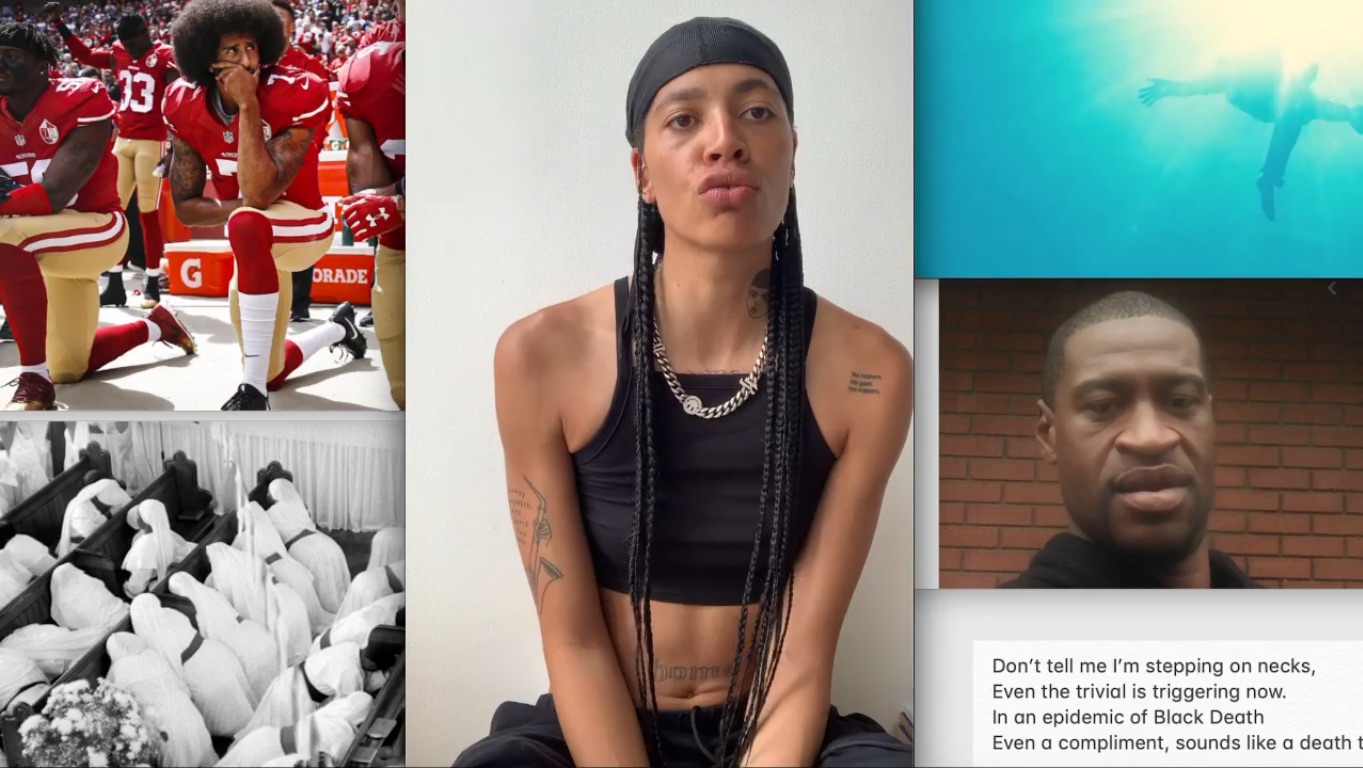
‘TAKE UR FOOT OFF MY NECK’, video (still) by Kai Isaiah Jamal, 2020
Beginning with a small pause, Kai then launches into a three and a half minute poem, building up from that first image of Colin Kaepernick taking a knee. Gaining speed and velocity as the poem progresses, Kai embodies and channels the anger and grief of their community, of the grief of another Black life lost and the impossibility in knowing just how devalued your life is to society. There is a relentlessness as Kai lists the unchallenged actions of the police: “They just pull up on a blue badge/They just pull up/They just pull up and pull out and fire and stomp and step on necks/ And turn off body cams/And search bodies that are already dead” as Kai builds pace, demonstrating the unrelenting violence and abuses of power Black people are subject to. Different visual references and contexts of a knee are drawn out, from Colin Kaepernick’s knee of defiance and resistance, to an officer’s knee as a weapon and the question of whether this is the same knee that the white man prays from, through to the shrouding contemplation of “I wonder what it is to be big enough of a God to kneel”. A knee expands into multiple meanings, a visual signifier for violence, resistance, prayer and power, but always coming back to this consideration of the antithetical difference between a Black man kneeling in peaceful and honourable protest, compared to a white man kneeling as an abuse of power, subjugation and wilful dismissal of a Black man’s right to life. In a symbolic act of taking their own knee, in words as opposed to actions, Kai kneels in eulogy, holding commune and space to honour the dead, while simultaneously building protest and resistance into that honour.
What does it mean, then, to come across a visual and aural poem such as Kai’s when scrolling aimlessly through a social media feed? What did it mean to come across this post two days after George Floyd’s murder, when social media was flooded with graphic images of his death? Though Kai alludes to and references the violence and death enacted against Black communities, they do not explicitly or graphically show or depict this violence. I often return to Christina Sharpe’s question, of ‘What does it mean to defend the dead?’ Does it mean to circulate images of their death, in an act of galvanising awareness? No. The very act of sharing the moment when a Black person loses their life, once again signifies how little sanctity and respect is afforded to Black people in life or death. Kai’s poem contributes a visual musing on the collective mourning a community finds themselves in, without further negating the sanctity of Black life. This visualisation, which does not refuse or deny Black death, instead finds other languages and visual cues through which to defend the dead.
Kai’s poem begins with a listing of some of the comments that appear under their Instagram photos: “Someone writes under my Instagram photo, take your foot off my neck/Someone else says, you are stepping on our necks/Somebody else says our necks are breaking, fire emoji, fire emoji.” And it is this rendering of violence and death as casual that Kai ultimately refuses, indicating that these allusions and references to violent acts which appear indifferently on our digital platforms are not casual at all. For as Kai muses “I wonder if there is ever a beautiful Black body that is not disposable.” ‘TAKE UR FOOT OFF MY NECK’ builds rupture into the casual stream of images and allusions to Black death, and refuses this reality as normalised or everyday, in doing so Kai provides a language and methodology for protesting and rupturing the positioning of their life as expendable.
Rhea Dillon, in her 2019 film The Name I Call Myself, comes to images of Black resistance through the modality of celebration (when in situ, the work exists as a dual screen installation which includes a scent in the space). A depiction and celebration of the LGBTQ+ Black community in the UK, with cameos of familiar artistic pioneers (including Kai and Evan Ifekoya, whom I will come to shortly), the film sits as Rhea’s love letter to QTBIPOC. Opening on a slowed frame of a child’s legs running (which is returned to and re-interpreted through different framed perspectives throughout the film) positions the movement of the work into a forward motion, moving into new
expansive spaces and potentials for envisioning queerness and Blackness on screen. That same scene seems to act as a marker throughout the film, signalling a clear spacing out or splitting of the film into several chapters, each creating a paralleled and interlinked consideration of Black Queer life.

The Name I Call Myself, video (still) by Rhea Dillon, 2019
In the first chapter, we come on to a dual screen, of what appears to be a funeral scene. People dressed in black and held in collective mourning (or celebration) of a life. Two figures, paused in movement, close to the ground, proceed to shift and turn into motion while the camera pans ethereally round them as if floating from above. The figures are akin to spirits, and as they move in slowed motion the scene recalls the resurrection of Kahlil Joseph’s Until the Quiet Comes (which, as mentioned earlier, appears in Kai’s visual essay). For Rhea, this opening scene is a recognition of the death of a former self, while also acknowledging all the siblings whose lives have been lost as a result of gender-based violence (notably, with the average death of a trans Black person being 30-35 both in the States and the UK). Rhea finds a language through which to honour the dead, to celebrate the lives of members of the LGBTQ+ community which have been lost, while also indicating the continual transformation which comes when one embraces the entirety of themselves. A mourning and a coming home all at once — or in the word of Rhea ‘A death to the multitude of deaths one has to do to “come out” to oneself and to others.’


The Name I Call Myself, video (still) by Rhea Dillon, 2019
Next, we move through everyday moments of holding commune and ritual: a parent and child doing yoga, meditating, resting, connected in clasped hands, friends sat around talking, laughing and smoking, playing music and dancing together, looking through polaroid photos of a shared life. Cross generational and imbued with a contemplative light, the everyday is sifted through the lens of the extraordinary. Considerations of how we come together are extended in the third section, in which we move from a couple in the back of a cab, tenderly holding hands, with lingering glances at each other’s faces, to a person in the mirror getting dressed, drawing outlines of abs on their torso and a moustache, close-ups to their tattoos with declarations of resistance ACAB andYour Silence Will Not Protect You. Hymns books clasped in hands during a church service sit adjacent to a club night with dancers vogueing. Two formations of places of worship are held in parallel, as we consider where we come to worship and where our faith lies: be that in God, in partnership, in community, in faith in ourselves or in love.


The Name I Call Myself, video (still) by Rhea Dillon, 2019
The final scene appears as a beauty pageant, a single chair situated in the centre of a stage, red velvet curtains and a spotlight framing a central figure. Successively people take centre stage, dressed in celebration and pride, all unified under a white satin sash reading Zami. Zami, as with other references throughout the film (such as Your Silence Will Not Protect You) is an allusion to Black feminist writer, poet and activist Audre Lorde, and their Autobiography Zami: A New Spelling of My Name in which Lorde writes that “Zami” is “a Carriacou name for women who work together as friends and lovers”. Collectivity, friendship and love, tie the people in Rhea’s film together, and collectively they exist in joy and expansiveness. I want to return to the scene between the beauty pageant, and scenes of worship and faith, in which we open on a London escalator. A figure cascades down the escalator, with the camera focused in on their crown of braids, before walking on to a platform and finally on to a tube. There is an instant familiarity of this scene for anyone who’s made London their home, the everydayness of a repeated journey, and the uniformity of the tunnels threading the city together underground. Here, the meaning of Rhea’s film seems to become clear, an underpinning recognition of the city as home. There is a conflict when thinking about how to take ownership and comfort in a locality which is so harsh, which ejects us and questions our belonging at every turn. The Name I Call Myself refuses to give weight or even acknowledgement to the question of whether we belong. It doesn’t validate the question of Where are you from? with an answer. Instead, Rhea’s film refuses to debate or call into question the validity of the lives of the people it honours: it is pure celebration, pure joy and pure elation, of a community that resists by loving, living and sharing expansively and freely without restriction or inhibition.

The Name I Call Myself, video (still) by Rhea Dillon, 2019
If Rhea’s The Name I Call Myself celebrates the everyday, Evan Ifekoya’s 2019 contoured thoughts hones in on one everyday ritual in particular: rest. Thinking through rest as a methodology for resistance is well versed in Black feminist thought. I think of Audre Lorde’s declaration that Self Care is Self Preservation. Yet, in a sociopolitical context which has depoliticised rest and self-care, rebranding it as a capitalist, wealthy and white beauty industry of face masks and expensive beauty products, it is all the more necessary to attend to the radical underpinnings of rest. Evan feels out these radical underpinnings slowly and attentively. Evan’s arm, their hand and wrist visible, submerged in water, facing downwards and focused in on closely by the camera, but with space around in which you can see ripples of water spreading outwards. A triptych, Evan’s arm central, with different perspectives of the water and surrounding natural space of rocks and plants visible. In the next shot, Evan’s hands and the natural scene have swapped sides, now both arms are visible and instead of being fully submerged, float slightly on top of the water. We get a sense of being held and carried by water and nature. Then we come on to a wider shot of Evan’s neck and head above the water, their shoulders submerged, eyes closed and head tilted back in meditation or rest. The scene is imposed on a wider shot of the water, in a collaged effect.

contoured thoughts, video (still) by Evan Ifekoya, 2019
Across the four minute and 40 second film, these cyclical visual motifs recur, repeated scenes with slight shifts in perspective and framing. Each shot is left for an extended time, expanding out, space to breathe. As the viewer, time slows, we are held statically in a vacuum of time stretching out Ad Infinitum. Halfway through the film there is a shift: Evan is submerged in water once again, but now their eyes are fixed, wide open, staring straight into the camera. Only their head is visible above the water. Colourful flowers are arranged behind Evan’s head, vibrant light blues, purples and reds. The directness of Evan’s gaze and the sharp blast of colour in the natural scene, creates a stark disruption within the overriding stillness of the film. Evan’s gaze contains a heightened awareness, a vision. They are awake. They are acknowledging our presence. They are claiming their agency within this contemplative space. The music shifts, too, from a meditative repeating gong sound, to a repetitive bass creeping in, taking up increased aural space. We come on to a scene of flowing waterfalls, calm, and yet the juxtaposition to the previous stillness creates a rupture within the scene. After such still, the change is palpable, it is an activating, a rebirth, a reawakening.
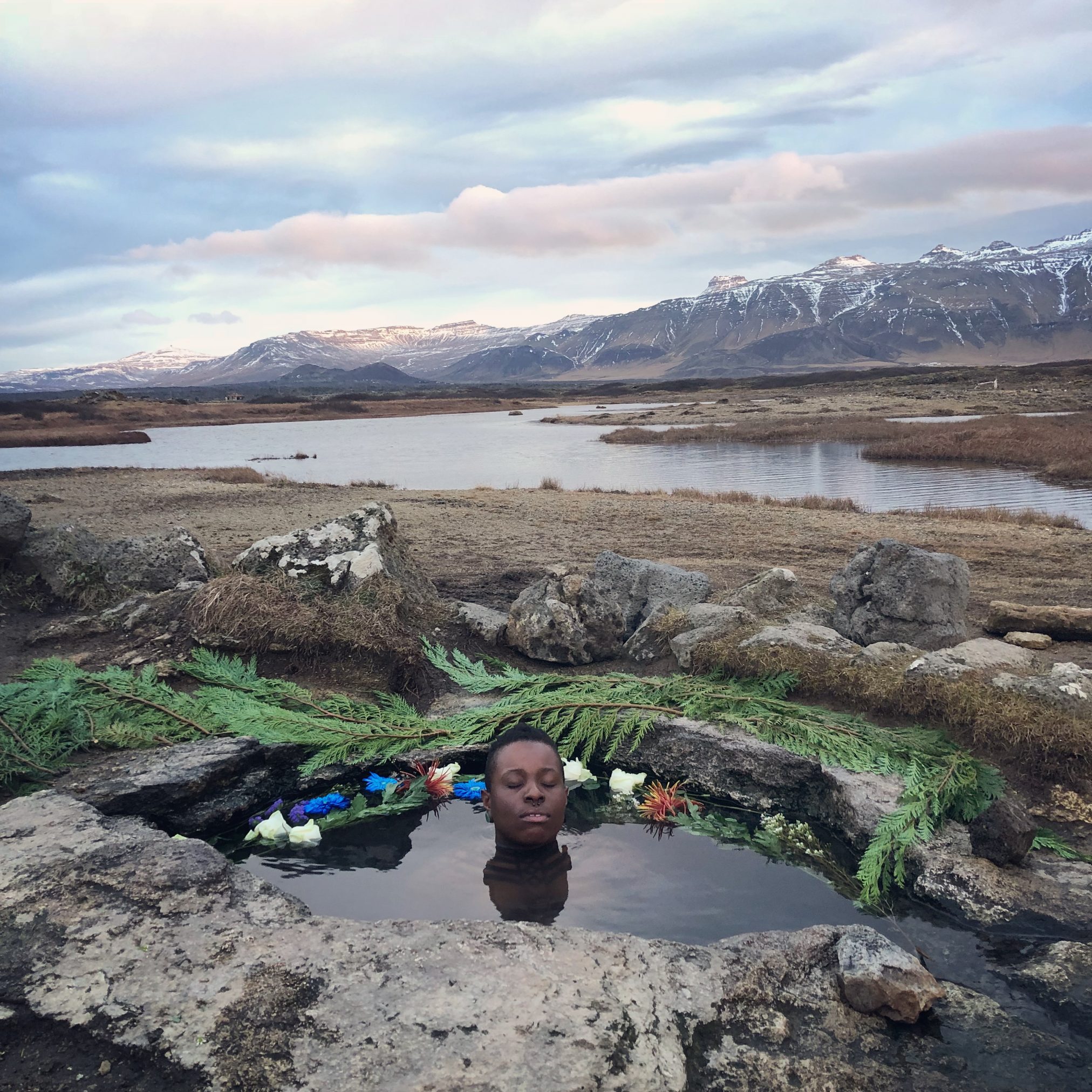
contoured thoughts, video (still) by Evan Ifekoya, 2019
Watching Evan’s film, I became aware of how much of a rarity it is to sit at a screen, and not be moving at an accelerated pace, clicking through, always consuming more. contoured thoughts acknowledges the sanctity of rest, how radical it is to take a moment to pause, to be still, in a world that demands you are continually switched on, constantly moving. Rest as a radical act becomes more intensified when it is situated in relation to Blackness, for being Black can translate into a need to always be aware, to always be hyper vigilant, in a world that deems you disposable. It is this attendance to rest, as a radical Black methodology, which has become obscured in contemporary society, and it is this which Evan compels us to get back to. Slowing down in this way ruptures capitalist time, which necessitates our value as the level of productive labour we enact as bodies. To rest, to stop, is to resist the oppressive forces which render an “unproductive” body invaluable, and which necessitate the inevitability of premature Black death. Rest resists the devaluing of the Black body, by pausing to care for it, to look after it, to invest in its longevity and capacity for life.
Rupture, then, can also be the opening out of new temporalities. Temporalities which do not attend to the linear moving of time between past/present/future. In Languid Hand’s 2019 film Towards A Black Testimony: Prayer/Protest/Peace, these temporal distinctions are exploded. The film combines a performative speech written and performed by Imani Robinson, with archival footage edited by Rabz Lansiquot (both of whom make up Languid Hands) and a sound mix by Felix Taylor, remixing jazz drummer and composer Max Roach’s song Prayer, Protest, Peace, which features jazz vocalist Abbey Lincoln. Time is undefined, and moves seamlessly between the contemporary and the historical, such as in scenes which interlace archival footage from the March on Washington (1963) and Ferguson unrest (2014). In this exploding of temporal distinctions, Languid Hands attend to how little has changed between these sociopolitical contexts. How the urgent need to get into the streets, to protest and resist the positioning of Black life as expendable, is still as necessary today as it was half a century ago. But this recognition is not defeatist, rather there is an acknowledgement of the many manifestations of intergenerational resistance which exist in the world. From church congregations, to weddings, to marching in the streets, Black communities unify in refusal of the expendability of Black life.
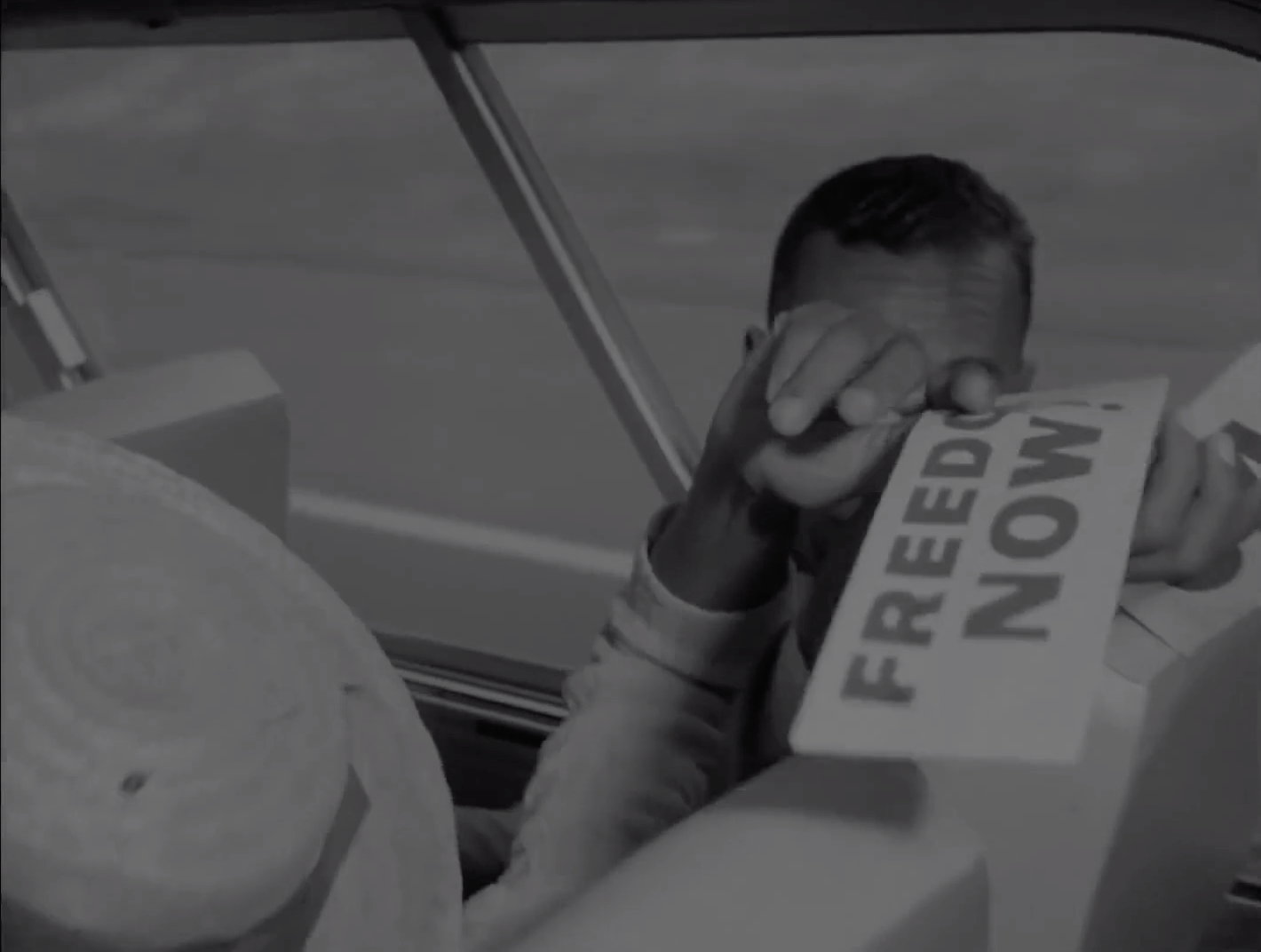
Towards A Black Testimony: Prayer/Protest/Peace, video (still), by Languid Hands, 2019
The text, spoken by Imani, seamlessly combines the words of Black people transposing between past/present/future. Exploring dying declarations, many of the words were spoken by Black people who either anticipated their own deaths or died soon after speaking them. What does it mean then, to have these words live on, taking on new meaning when spoken through Imani? Certainly, there is an acknowledgement of the push and pull of living through “the wake” continually aware of one’s proximity to death. Yet, in another, stronger sense, there is the eternality of these words, which exist outside of time, speaking to multiple generations simultaneously. The Black Chorus, as evoked by writers such as Saidiya Hartman, and by Imani here, immortalises Black voices in collective resistance. Languid Hands engage in mourning, while honouring the resistance of these Black testimonies which reverberate into the past, present and future all at once, refusing to be forgotten.
If we are to understand the discursive, visual and aural practice that Languid Hand’s film is engaged in, we must think through the interplay between speech, sound and image. As Imani speaks the words of Fred Hampton “I believe I’m going to be able to die high off the people” a shot is framed from within a car looking outwards, at what seems to be a police official shining a flashlight across the scene. The light takes over and fills the entire shot, lingering as this passing through and over of light. As Fred Hampton continues through Imani, “I believe that I will be able to die a revolutionary in the international revolutionary proletarian struggle and I hope that each one of you will be able to die in the international proletarian revolutionary struggle or you’ll be able to live in it.” The light subsides, and the wider picture comes back into view, the camera pans out and around to people stood by a car with headlights blazing on, their arms raised in surrender. For a moment the sound drops out altogether, as the camera pans further round to see protestors walking, before a drums comes in distorted and gradual. The collective testimony carries the images, or do the images carry the words, or does Abbey Lincoln’s distorted scream/singing carry both, or do indeed, all three carry us, the viewer, the listener? We are so used to these linear/ straight/eurocentric storytelling practices which distinguish isolated elements to make up a whole, but here they are whole and moving through and forward and backwards and sideways, all at once. We are in the past/present/future simultaneously and nothing is linear or straight. All is cyclical. All moves in waves and reverberations and echoes sliding in and out and through it all at once and on forever.
Languid Hands film takes all the anger, pain and grief, felt by Black communities, and re-situates it as a tool for dismantling the positioning of Blackness as marginal or subjugated. Expansive scenes of a wedding, of people dancing in the streets, held in commune, at church services and baptisms,
while Imani draws upon Audre Lorde’s words on the potentialities of anger. “I have suckled at the wolves’ nip of anger and I have used it for illumination, laughter, protection, fire in places where there was no light.” Towards A Black Testimony: Prayer/Protest/Peace takes this light and makes it universal, translates into the homes of people across the world, and opens out a new radical imagining of a future which is within reach. Where time folds in on itself, this expanding of light touches the present, past and future simultaneously. For we are not separated by generations, our worlds are not so distinct and linear, and as we walk in our resistance we walk alongside our ancestors in their resistance as well.
Let me return again, to attend to slowness once more, because in some ways it seems to linger, to unify each of these works. There is a slowness in Kai’s opening pause as they take a breath before speaking, in the repeated running of three Black children across Rhea’s screen, in Evan’s elapsed, slowed and paused frames, in Languid Hands repeated, ruptured, glitches of archival footage. Towards the end of Towards A Black Testimony: Prayer/Protest/Peace Abbey Lincoln’s scream singing drops out. The silence is palpable after the reverberating echoes of her screams. The screen turns black, Imani’s voice is no longer audible, and all we hear are the faint undertones of the archival audio of Muhlaysia Booker addressing a crowd of supporters. The Black chorus continues on, extending across time and generations. But we are held, as with each film, in a moment of deep reflection and pause. For Tina Campt, slowness isn’t simply an indication of a change in temporality, slowness is attentiveness. Campt writes, ‘Quiet registers sonically, as a level of intensity that requires focused attention.’ Here, in this slowness, in this quiet, is the site where the true potential for rupture sits. Slowness, as Campt marks it, as ‘an ethics of care’, as a methodology ‘to take care of what is overlooked’. Campt compels us to use slowness as ‘a framework for understanding Black life’, as ‘slowing down Blackness’, for it is in this slowing down that we can find the possibility for disturbing the fast-paced, careless positioning of Black life as expendable. It is here that we can understand that Blackness does not sit in close proximity to death, it exists beyond our linear understanding of time, as eternal, as always moving, shifting between past, present and future.
What these works speak to, are not concerns around representational politics. Representation is not enough, for all it does is invites the underrepresented into environments which will only serve to oppress and marginalise them further. More representation does not dismantle the oppressive forces that exist. Instead, these moving image artworks devise a language and methodology of rupture: breaking the restrictions that attempt to hold them statically. None of these works are representational. They do not attempt to reform the mould, they disregard the mould altogether. They build anew from the ground up, an ecosystem which is a sanctum, is refuge, is outside and beyond the mould that restricts us, that attempts to hold and bind us in place, that necessitates our death. Finally, I return to the words of Campt once again and her consideration of tense. If moving image is moving, what is it moving towards? Campt proposes a grammar of Black feminist futurity which ‘moves beyond a simple definition of the future tense as what will be in the future’. ‘Black feminist futurity is a performance of a future that hasn’t yet happened but must’ and here is where these moving image works sit, what they are moving towards — the envisioning and enacting of a future that hasn’t yet happened but must. A future in which the inevitability of Black death has been dismantled, not just in contemporary life, but throughout time. For the future that these artists speak to is now, as it is past and present. Linear time is exploded, and the radical imagining of a future in which we are all free, in which our ancestors are free, our descendants are free and we are free simultaneously. Because as Lola Olufemi reminds us, in our radical imaginings we must ‘ask for everything’ and in their artistic radical imaginings, this is exactly what Kai, Rhea, Evan and Languid Hands do.
Works Cited
Campt, Tina, Listening to Images (Duke University Press, 2017)
Campt, Tina, The Slow Lives of Still Moving Images [Lecture], (Nottingham Contemporary, 2020), https://www.youtube.com/watch?v=JdKWocqaub4&feature=youtu.be [Accessed 7th October 2020]
Olufemi, Lola, Feminism Interrupted: Disrupting Power, (Pluto Press, 2020)
Olufemi, Lola E094 The Surviving Society Alternative to Woman’s Hour: Lola Olufemi [Podcast], (Surviving Society, July 28 2020)
Sharpe, Christina, In the Wake: On Blackness and Being, (Durham and London: Duke University Press, 2016)
About the Writer
Jamila Prowse seeks to interrogate and dismantle the colonialist, racist and ableist structuring of the art sector through filmmaking, curation, writing, and collective organising. Her practice is engaged in collaborating with art workers, as an antithetical method to the alienation of being a BIPOC working within, alongside and adjacent to white institutional settings. Presently, her ongoing research Can We Surv[thr]ive Here? considers the potentials and limitations of institutional work for Black, non-black People of Colour, and disabled artists and art workers, and is informed by Jamila’s own experiences of being a mixed-race curator with lifelong mental illness. As a member of the working group Hypericum: A Code of Practice, initiated by Obsidian Coast, Jamila will contribute to a collectively produced, ever evolving code of practice for feminist, antiracist, anticolonial and environmentally sustainable arts organising.
In 2020 Jamila is the recipient of the GRAIN writing bursary, is Guest Editor of Photoworks Annual 26 and is curating and hosting an upcoming podcast series for Lighthouse. Jamila has curated exhibitions for Peckham 24 (London), 1-1 (Basel), Lighthouse (Brighton) and Brighton Photo Fringe, hosted public programmes for Fabrica Gallery (Brighton), Photofusion (London), Deptford X (London), University of Brighton and Brighton Photo Fringe and written for Dazed, Art Work Magazine and Photoworks. For more information on upcoming work and past projects visit her website.
Photo Credit: ‘TAKE UR FOOT OFF MY NECK’ video (still) by Kai Isaiah Jamal
19 10 2020
I am reaching out to you
For this writing commission Anneka French has used the phrase ‘I am reaching out to you’ as its title and starting point . The text is a blend of critical reflection, and creative fictional and autobiographical writing. The critical element of her text analyses photographic works by Carrie Mae Weems and Elinor Carucci and reflects on a selection of intimate and domestic from Weems’ ‘Family Pictures and Stories’ (1981-2) and ‘The Kitchen Table Series’ (1990), alongside Carucci’s ‘Closer’ (1990s-2000s) series.
The research and text resonates during the Covid crisis as it is a multi layered meditation on the pandemic period as the writer has experienced it, from an acknowledged place of personal privilege, from home and through photographs. The text is interwoven with memories, new poems and diary- like entries and is a commentary on isolation, intimacy, parenthood, domesticity and family.
About the writer
Anneka’s wider practice also includes independent curatorial work and art journalism for publications such as Art Quarterly, Photomonitor and a-n news. Anneka currently holds the roles of Editorial Manager at contemporary art magazine ‘this is tomorrow’ and Co-ordinator at regional visual arts network New Art West Midlands.
www.annekafrench.wordpress.com
Image Credit: I am reaching out to you, Anneka French
13 10 2020
Photosynthesis
For this writing commission, Anna Souter produced a new piece of creative fiction which explores the relationship between light and dark in photography and the lives of plants. It follows a photographer who turns to her garden for inspiration during quarantine.
Photosynthesis
by Anna Souter
Ayra wakes to another day of shielding. It’s hot even though it’s still early. She gets up to pour herself a glass of water and the morning sunlight gleams on the dirty glass. She talks to herself as she puts in her contact lenses. She’s not sure why she doesn’t just wear her glasses when there’s no one there to see her.
Here we go again, she says.
Her reflection stares back at her, its shadowed contours made unfamiliar by the harsh shaving light above the mirror. There are no windows in the bathroom, so she’s turned it into a makeshift darkroom, swapping out the old yellow lightbulb for a red one. There’s a roll of masking tape on top of the toilet cistern for sealing the door later. She takes one small white pill from the packet under the sink. The foil is labelled with the days of the week, an edible diary.
She walks through the living room and picks up her camera from the sofa, where she left it yesterday. She thinks she should take better care of her things. It’s a thought she often has, but only after she’s acted negligently. She worries about this. The camera is black with an expensive leather strap. The camera was expensive too, like the film she uses, which she is sometimes afraid of wasting.
She goes outside into the small garden. She has been spending a lot of time out here recently. She doesn’t know much about gardening, but the neglected borders are full of plants. She isn’t sure what they are, but she suspects most gardeners would call them weeds. She lets them grow. She knows the adage about a weed being a plant out of place.
Spring came in a rush this year. When she began shielding, the borders were almost bare. She has been photographing their progression from bare soil to green flourishing.
There is slight dip in the lawn in front of the flowerbed and her body fits perfectly into the low groove. The grass is a little longer here and a different texture – thicker, with a slightly waxy surface. It prickles her stomach when she lies down on it, but it’s not uncomfortable. She presses her elbows into the grass to find the two small indentations her body has made over the last few weeks. With her elbows positioned and the camera held up to her raised face, she can keep the lens in almost exactly the same spot every time. She watches the plants through the viewfinder. There is a breeze this morning making them sway, and she is waiting for a still moment. Some days this takes a long time. She doesn’t mind. It’s not like she’s going anywhere.
There are at least twenty different species in front of her, almost certainly more. She recognises dandelions – flat leaves hugging the ground in a star formation, a bright yellow close-petalled flower rising on a stiff stem. She knows cow parsley, too – clouds of white flowers on tough stalks grown so tall they no longer fit within the frame of her shot. And the daisies – little white and pink-tinged petals around a yellow nub.
The breeze is dropping now, so Ayra adjusts the aperture and shutter speed in preparation, focusing on a strange woody-stemmed plant in the middle which she hasn’t noticed before. It has somehow grown clear of the delicate plants around it without attracting her attention. She tells herself to stay tripod-still and locks her elbows. She presses the shutter and the tiny backyard ecosystem imprints itself onto the light sensitive film and an image bursts into being. The film whirrs as it is wound back into its casing.
Being alone is hard, actually. But it’s also kind of freeing.
All around, the plants grow and light turned to sugar writes patterns of green against the dark soil.
—
At lunchtime she translates a document about health insurance for a client in Dubai. She doesn’t know a lot of the words and has to look them up in Google Translate. She suspects the company is a bit dodgy, but she resists the urge to investigate. They pay isn’t bad and she needs the money now the rest of her freelance work has dried up.
The trackpad of her laptop feels hot under the tips of her fingers.
In the afternoon she logs off and goes into the bathroom, where she has been storing sheets of cyanotype paper in the medicine cabinet. She made the chemical solution a few days ago, holding glass beakers from her childhood chemistry set up to the red bathroom light to check the measurements. She hung the coated paper up on a washing line above the bath to dry.
Now she checks her pack of pills and remembers she’s already taken one today. She puts a sheet of paper in a wooden box and takes it out into the garden. The cherry tree grows imperceptibly above her head as she drops to her knees and pulls a large dandelion out of the ground. She prises it slowly from the soil with her fingernails. The head has just gone to seed and a few thin downy sprigs float away. She opens the wooden box and arranges the stem, leaves, roots and seeds before squashing them flat with a piece of glass from an old picture frame. She thinks of Anna Atkins, imagines her in silhouette, a woman in crinoline skirts and pinned-up hair holding her bold blue pages up to the light.
Ayra leaves the cyanotype to develop and lies beside the wooden box on the lawn. She spreads her fingers and catches blades of grass between them. She feels sad and happy simultaneously when she does this, like something is repeatedly breaking up and settling again within her. She lies there for a long time and she imagines the grass growing around her, coming up through her hair and around her spread arms.
She is very aware of the opacity of her body.
She thinks about how, if she lay there for long enough, the grass under her torso and legs and head and arms would become pale from lack of sunlight. If she lay there for long enough, she would leave a vivid imprint of her body on the green lawn. A photosynthetic cyanotype. An image of her body written with light.
She imagines herself disappearing, bleached into nothingness by the sun that greens the grass around her.
—
Later, she washes the dandelion print and hangs it up to dry. The paper has become an intense blue. The form of the plant is sharply delineated, except for the seed head which looks soft and ghostly as if it’s glowing from within. She’s pleased with it. She’ll make another tomorrow.
There’s something comforting in repetitive tasks.
She’s finding it hard to sleep at the moment, even though she’s often tired during the day. In the early hours of the morning she decides to start developing the film from her camera in the disorienting red light of the bathroom. It’s dark outside, but she still uses the masking tape to seal the edges of the door.
She pulls the cord on the extractor fan and it makes an unexpectedly loud whirring noise she’s never noticed during the day. The night gives her vision a different clarity, as if she’s tried to sharpen up a grainy photograph. She’s aware, somehow, that there’s a new moon tonight and somewhere above her the skies are bright with stars.
She wonders whether there is grass in her hair and thinks she’d like to have a shower or better still to stand outside in the rain. But it’s not raining and the bath is still hung with drying cyanotypes. This is a downside of using the bathroom as a darkroom.
She’s already prepared the chemicals, so she begins the process of putting the film in the tank, adding developer and agitating it. It requires intense concentration, even though she’s done it many times before. An ongoing meditation on darkness and light.
She imagines herself disappearing again, not bleached by the sun but absorbed by the rushing dark of the night and the absent moon. Her physical identity seeping into the film turning in the tank she has balanced on the closed seat of the toilet, draining her dry.
And inside the dark liquidity, an ecosystem emerges into view like a seed that puts out a tentative root into the shadowy soil, germinating with quiet magic.
When the process is over and the images are fixed and rinsed and she has clipped the finished series of tiny images to the washing line above the bath, she suddenly feels overwhelmed by fatigue. She pours the used chemicals down the sink and turns off the red light, before lying down on the bathmat and falling asleep with her head by the under-sink cupboard.
—
It’s late when she wakes the next morning, and the weather has broken. She peels the masking tape from the door and rolls it into a sticky ball. Outside, water drips from the leaves and a solitary bumble bee flies slowly round the garden searching for shelter.
Ayra puts another roll of film in the camera and goes out through the living room. She settles herself in her dip in the lawn and feels the rain immediately soak through her t-shirt and jeans to her skin. She digs her elbows into the soft ground and raises the camera to her face.
She takes a photograph of the glistening border, which looks impossibly beautiful in the damp light.
Then she turns the camera round so that she can see her own reflection in the lens.
She presses the shutter.
About the Writer
Anna Souter is an independent writer, researcher and curator based in London. She is interested in the intersections between contemporary art and ecology, and has published criticism, essays and fiction. Anna’s texts draw on tropes from academia, memoir, poetry and science writing, and are often inspired by encounters or collaborations with human and nonhuman others. She has also worked as a curator on exhibitions about rewilding and urban encounters with nature.
Image Credit: Quarantine Herbarium, Alice Mahoney
09 09 2020
Covid-19 Responses
From March to October 2020 GRAIN commissioned and supported artists, writers and photographers to make new work in response to the Covid- 19 pandemic, lockdown and new laws around social distancing. The commissioning and bursary programme was a national response supported by Arts Council England and National Lottery Players.
12 photographers, writers and artists made new work responding to the unprecedented, uncertain and disturbing time of the pandemic, the affects of lockdown in the public realm and the personal and private space.
We are excited to be sharing work by; Andrea G Artz, Lydia Goldblatt, Chris Hoare, Daniel Dale, Freddy Griffiths, Jemima Yong, Ngadi Smart, Shaista Chishty, Anneka French, Anna Souter, Jamila Prowse and Lewis Bush.
Find our more about each of the Photographers, Writers and Artists here.
Image Credit: Pandemia to Pandemia, Andrea G Artz

09 09 2020
Covid-19 Responses, Birmingham
From March to October 2020 GRAIN commissioned and supported photographers to make new work in response to the Covid- 19 pandemic, lockdown and new laws around social distancing. The commissioning and bursary programme was supported by Arts Council England and National Lottery Players and Birmingham City Council.
7 photographers made new work in Birmingham responding to the unprecedented, uncertain and disturbing time of the pandemic, the affects of lockdown on communities and individuals at work and at home.
We are excited to share the work of; Jaskirt Boora, Andrew Roberts, Barnaby Kent, Chris Neophytou, Joanna Fursman, Olivier Jamin and Yas Lime.
Find our more about each of the Photographers and Artists here. here.
Image Credit: All People Are Like Grass, Barnaby Kent

09 09 2020
Covid-19 Responses, Stoke-on-Trent
From March to October 2020 GRAIN commissioned and supported photographers to make new work in response to the Covid- 19 pandemic, lockdown and new laws around social distancing. The bursary programme was supported by Arts Council England and National Lottery Players and Appetite; Creative People & Places.
3 photographers made new work in Stoke on Trent responding to the unprecedented, uncertain and disturbing time of the pandemic, the affects of lockdown on communities and individuals at work and at home.
We are excited to share the work of; Robyn Clark, Sarah Peart and Holly Johnson.
Appetite is a Creative People and Places programme supported by funding from Arts Council England and led by the New Vic Theatre in partnership with Partners in Creative Learning, 6Towns Radio, Staffordshire University, Newcastle Business Improvement District (BID), Go Kidsgrove and Keele University.
Find our more about each of the Photographers and Artists here.
Image Credit: Sarah Peart

13 07 2020
Pandemia to Pandemia
Andrea G Artz is an artist that pushes the boundaries of photography into sculptural forms and moving image. Her commissioned work focusses on travel after Covid, those who need to travel by public transport for their work and families, and the situations they find themselves in emotionally and environmentally as they attempt to travel safely. Andrea makes sculptural forms from her photographs of people, collects audio and uses sound and animation to invite the viewer to understand the photographic image in a contemporary setting such as virtual realities.
Pandemia to Pandemia
by Andrea G Artz
Project Statement
Pandemia to Pandemia is a surreal journey that reflects on the trauma of modern transitory life and how travel has changed during Covid 19. Actual travellers were photographed and interviewed at different moments during the Covid epidemic and in short audio statements reflect about their feelings during travel.
All travellers are safely enclosed in giant colourful bubbles. They are taken by the velocity of speed; they come and go and ride in an endless loupe just like a toy train does. Bubbles collide, and strangers meet each other for a moment before they move on.
The word “bubble” has gained a new connotation during Covid times, but more so I was inspired by a seaside fun fair where people were wheeling in giant bubbles like hamsters. I was suddenly overcome by the fearful vision that the fun seekers got blown out into the dangerous open sea.
Travelling signifies the freedom to experience other cultures, gain enlightenment & overcome fears. At this moment in history people are afraid of being close to others or/and get infected, but also afraid to lose the freedom to roam freely in this world.
Throughout the years, I have photographed people caught on mass transit during significant historical time: Russians riding the escalator after Perestroika (Metropoliten, 1993), New Yorkers travelling the Staten Island ferry shortly after 9/11 (Passengers, 2001), and commuters glued to their electronic devices in our digital world (In Transit, 2015).
Finally, when the journey is over and all travellers have gathered, they suddenly in a precisely synchronized move disperse, tumble & vanish into all directions and the far distance. An unknow ending and “really shocking for not saying anything precise about their vanishing”.
The project is animated with the gaming software Unity and can be experienced as a virtual reality experience using Oculus Rift. The digital models of the travellers are created in Blender and are originally based on cut- out photographic prints playfully folded into three – dimensional sculptures that exaggerate the physique and posture of the characters. A virtual reality experience with more immersive and interactive features is in the making.
About the artist
Andrea G Artz has an MFA from the University of Leeds and is based in London. She is best known for her large-scale sculptural installations for galleries, museums and residencies. She has won various international awards including Arts Council England Lottery Funding for her virtual reality project Ghost Weight Experience, the Mac Dowell Fellowship & residency, the European Centre for Creative Economy (ECCE) grant and the Fuji Euro Press Award. Recent exhibitions include School of Design/University of Leeds, Royal Academy of Arts, Towner Eastbourne, Charles Dickens Museum, APT Gallery, Kunsthaus Hamburg, Palais des Art Marseille. An upcoming (postponed) solo show will take place at Coleman Project Space in 2021.
Much of her work is on the theme of travel. Travelling signifies the freedom to experience other cultures, gain enlightenment and overcome fears. She has previously photographed people caught on mass transit during significant historical times: Russians riding the escalator after Perestroika (Metropoliten, 1993), New Yorkers travelling the Staten Island ferry shortly after 9/11 (Passengers, 2001), and commuters glued to their electronic devices in our digital world (In Transit, 2015).
Image Credit: Andrea G Artz
13 07 2020
Fugue
Lydia Goldblatt considers themes of origins, transience and emotional experience. Her quietly powerful and beautifully crafted prints creatively fuse the approaches of both documentary and constructed photography. Tenderly observed portraits and details of the human form are combined with enigmatic still lifes and abstract constructions suggestive of elemental forces. Her work for this commission entitled Fugue, made during and post lockdown, focuses on the family, private and close public spaces and intimacy as she looks at questions of mothering, community, love, loss and time. The work is made in the family home, the community of nearby streets and shot on film. The work shown is an extract from a larger body of work.
Fugue
by Lydia Goldblatt
Project Statement
A week before lockdown we scattered my mother’s ashes. These pictures begin Fugue, prefacing a body of work in which mothering runs as a central theme. Before my children were born, I made Instar (2016), a project that explored transitional states and creativity, both natural and man-made. A private sub-text to this was the possibility, the hope, that I would become a mother. Before that, I made Still Here (2012), about, primarily, my parents’ ageing and my father’s death.
In the 3 years since my children were born, I have not made a creative response to the metamorphoses occasioned by their arrival. Ideas, words, notes have been written down, a few pictures made, but somehow it was so much that it was too much.
This year the entire world experienced a monumental metamorphosis. We have radically changed our ways of living. We have all borne witness to this change, reflected upon it, documented it. We have lived in our personal spheres, each small world becoming something bigger, a bit like the immersion of new motherhood.
In making work about this time, I draw on my own small sphere, a radius of about 50 metres, 4 people, and a handful of streets. I am incredibly privileged to be able to do so. My home and my camera have both offered places of refuge and safety. The uncertainty and anxiety of Covid, the staggering loss it has brought, are set against the personal grief of losing my mother, coming to terms with being a mother myself, and the struggle to understand what that means.
The pictures in Fugue meander, moving back and forth through the universal signs of routine, love and care that bear witness to family life. Chronological time, normally linear and clear, is suspended. It merges with emotional duration, more scattered, circular in nature. The work mirrors the non-linear evergreen of a three year old’s consciousness, present in every tense.
Intimacy and distance are key. Photographs made at home are offset with photographs made outside at night, tapping into the dissonance between domestic tranquillity and a sense of invisible unease. Confronted with so much that is explicitly out of bounds – people, touch, movement, the ‘normality’ of everyday life – another, more shrouded exile, is exposed. In such close, sometimes blissful, sometimes painful proximity to my children, I am aware of all that remains unknown between us. We are fused and separate, present and absent, elusive. I work on film, so the process too is blind and unknown – like the context, an invisible virus, marked by inaccessibility and intangibility.
The longing to be part of other lives, when physical touch has been forbidden, serves as catalyst, so that the act of photographing outside provides moments of connection. The perfect spring blossoms, the windows, the empty playgrounds articulate a psychological suspension in which both joy and fear oscillate. Photography’s ability to hold what is significant – darkness and light, void and presence – weaves kinship through the enforced distance.
About the artist
Lydia Goldblatt considers themes of origins, transience and emotional experience through a lyrical harnessing of photography’s primary characteristics of light, time and surface. Her quietly powerful and beautifully crafted prints creatively fuse the approaches of both documentary and constructed photography. Tenderly observed portraits and details of the human form are combined with enigmatic still lifes and abstract constructions suggestive of elemental forces. Together, the images examine the impulse for existence paralleled with the act of artistic creation. While complete in themselves, each photograph can be understood as part of a larger whole: an absorbing puzzle reflecting upon the capacity of photography as poetic expression and simultaneously exploring emblems of the cycle of life.
Goldblatt’s series Still Here was published as an artist monograph by Hatje Cantz, and is held in the collection of the Victoria and Albert Museum National Art Library. Her work has been exhibited internationally, including at the Felix Nussbaum Museum, Germany, Somerset House, London, the GoEun Museum of Photography, South Korea and the National Museum, Gdansk. She was awarded the Grand Prix at 2014’s Tokyo International Photography Festival, and in 2016 undertook a year’s artist residency at the Florence Trust in London, where she developed her series Instar.
www.lydiagoldblatt.com
Image Credit: Lydia Goldblatt
13 07 2020
Birmingham Lockdown Stories
Jaskirt Boora is a British Indian photographer based in Birmingham. She is interested in the
representation of gender, ethnicity and place. She has made work documenting her family life and
community during Covid 19 focusing on themes of togetherness and how communities have come
together to offer support and Care. The work includes audio and text and is shot on film.
Birmingham Lockdown Stories
by Jaskirt Boora
Read More
13 07 2020
Street Cleaners
Chris Hoare photographed the undervalued workforces that kept our society going, not those that were applauded from doorsteps, but those that went unnoticed focusing on the street cleaners. Through the act of photographing, this body of work sets out to shine a rare spotlight on this overlooked workforce, in the hope that those who view the work will adjust the value they place upon these unsung heroes, those that wear PPE and high vis and keep our cities and streets clean during a pandemic.
Street Cleaners
by Chris Hoare
Project Statement
On March 16th this year, the UK was brought to a standstill due to the fast spreading Covid-19 virus. It was at this time in the pandemic that many key occupations were thrust into the spotlight. The often undervalued workforces that keep our society going were applauded from doorsteps and signs were put up in windows to show the British public’s appreciation for these key workers. The NHS staff at the frontline were understandably celebrated loudest for their frontline efforts, and headlines mentioned those working in supermarkets, transport, education, social care and police.
But some remained unnoticed, particularly Britain’s street cleaners who never stopped collecting our rubbish and tidying up our mess, despite the rest of us being told to stay safe at home. This fluorescent clad army helps keep the streets clean day in day out, a job which is often physical, tedious and thankless. Although illuminated by their high visibility clothing, they are often all the more invisible because of it.
It’s easy to overlook these men working around us as we go about our day to day business, but it is clear that the work they do is invaluable. Every urban environment would be a mess without them and so why do we not value them more? Are they respected enough for what they do? Is the importance of their role understood? Arguably not, at least not by those who leave parks and green spaces covered in rubbish after long summer evenings (This outdoor littering was made worse as lockdown began to ease up and people were allowed to socialise outside).
Through the act of photographing, this body of work sets out to shine a rare spotlight on this overlooked workforce, in the hope that those who view the work will adjust the value they place upon these unsung heroes. There is an added emphasis on showing the variety of ways in which the streets are kept clean, through the number of tools needed to tackle the never ending uncleanliness of an urban environment, at a time when cleanliness couldn’t be more pertinent.
About the artist
Chris Hoare is a photographer based in Bristol. He recently completed an MA in Photography at University West of England. Within his personal work he is interested in areas of society that he feels are overlooked, interested in exploring themes of identity and place. He is increasingly drawn to ‘speculative documentary’, excited by the possibilities that come with telling visual stories in a loose metaphorical way. His work has been published in The Guardian, Fisheye, British Journal of Photography, SEASON, HUCK, The Wire, Soccerbible, Les Inrockuptibles, Lufthansa Magazine, Timeout, The Commuter Journal, B24/7, Bristol Magazine, HUCK, Loupe Magazine and Photoworks and he has won numerous awards including Palm* Photo Prize – Finalist, Source Magazine MA Graduate – Selected (Micheal Mack), Carte Blanche (Paris Photo), Taylor Wessing Portrait Prize – Finalist.
www.chrishoare.org
Image Credit: Chris Hoare.
13 07 2020
HAPPINESS
Daniel Dale is an artist and publisher based in Bristol. Much of his work is made on the theme of ‘happiness’. During and post lockdown Daniel created HAPPINESS’ as an online project that explores individual happiness through a publicly sourced photo collection. He invited people to upload images that represent their idea of happiness testing if happiness may have changed and if we found more importance in the smaller things during the crisis. The collection of photographs may not explicitly answer these questions but invites us to consider and re-evaluate to understand what makes us happy.
HAPPINESS
by Dan Dale
Artist Statement
‘HAPPINESS’ is an online project that explores individual happiness through a publicly sourced photography collection. As the photographs are removed of identity, and the meaning behind the selection is only known to the person submitting, we see an ambiguous, diverse, and often absurd set off images that share one thing – happiness.
Showing a single photograph, the website randomises each time it is refreshed choosing from all the images that are currently part of the project. This randomising creates a journey that will change and grow if you re-visit or continue to refresh the page. The photographs in the collection are sourced through a submission process that is open to everyone. People were invited to consider an image, or multiple images, that encapsulates their individual idea of what happiness is. Each submission is kept anonymous with no details shared via the project, allowing the freedom to interpret what happiness is.
Produced during the Covid 19 lockdown and immediately following the project considers how happiness may have changed. Have we found more importance in the smaller things in life or do we have a better understanding of what happiness is because of what we are prevented from doing? The collection of photographs may not explicitly answer these questions but invites us to consider more closely how we might see and understand what makes us happy.
About the artist
Daniel Dale is an artist and publisher currently based in Bristol, UK. He graduated with an MA in photography with the University of the West of England in 2020. Using photography and print as his chosen medium he scrutinises the everyday and questions how status changes when the everyday is photographed and viewed. This scrutiny is transferred into physical print as Daniel developed his publishing venture, ‘Nonsense Books’. All his work is fed by his fascination with philosophy and literature, often marrying the two in the study of surrealism and nonsense.
13 07 2020
A Slippery Slope
Freddy Griffiths is an artist working with and around photography, using the photographic image to further non-hierarchical methodologies in contemporary art and everyday scenarios. His ongoing exploration has resulted in the formation of a photographic archive. For this opportunity Freddy made a short film using still images from his archive. The film deals with the economic fallout of Covid-19, focussing on perceived notions of a populous ‘addicted to furlough’, as coined by a leak from Whitehall to The Times.
A Slippery Slope
by Freddy Griffiths
Project Statement
This film is an exploration of what it means to be ‘at work’. Specifically, what we consider to be gainful employment, versus work in service of our own personal endeavours. This dichotomy has been sharply thrown into focus during the Coronavirus pandemic. The Coronavirus Job Retention Scheme has resulted in many employees being furloughed from their jobs. This previously unimaginable reality has produced diverse responses across the political spectrum. The idea of workers being paid to stay at home and ‘do nothing’ causes particular consternation in sections of the right-wing press.
Almost predictably in May of 2020 during the UK wide lockdown, anonymous government sources floated the concept of a public ‘addicted to furlough’. Although these statements were publicly refuted by the Chancellor Rishi Sunak, it did fuel a sense that workers should feel tacitly guilty about their furloughed status.
The narrative presented throughout this film contains a multiplicity of realities. It is based on interviews conducted with furloughed workers during the summer of 2020. Many are rightly worried that they will be made redundant when the scheme ends on October 31st. A few were actively concerned that speaking to me would affect their future prospects of continued employment.
I should also add, that of all those I interviewed, I was struck by their desire to be involved in constructive work of some kind during their time spent on furlough. Whether that involved self-directed study or simply self-care manifested through the completion of a creative task. Almost nobody described hours on the sofa, at least not out of choice. Many sought out creativity often lacking during their day to day employment, but also experienced a subtle anxiety during lockdown difficult to fully throw off.
Our narrator makes reference to ‘that big photographic art project’, which presumably he has been working on in the recent past. But then remarks that during his time on furlough: ‘I found myself increasingly unable to think creatively about almost anything’. Perhaps we are giving to much credence too the most mundane of factors within the equation of creativity? Possessing free time alone isn’t enough.
With these factors in mind I invite you to consider the voice you hear throughout this film as representative of a plurality of experience. But also, a voice that provides anonymity to those that I have spoken to.
Film Transcript
Today my employer called to inform me that I wouldn’t be needed at work for the coming months. Apparently due to the Coronavirus pandemic it was possible for me to stay at home and for the UK government to pay my salary.
Whilst I expected to be possibly made redundant sometime in the future, I didn’t expect that the government would offer any financial support to workers such as myself. I’d been led to believe that the Conservative party was ideologically opposed to this type of assistance, believing it to be a slippery slope toward further state intervention.
I feel safe in telling you that I found my job manifestly miserable almost entirely. I’d managed to cultivate a thin vale of pleasantness at work, mainly so as to save my colleagues from being subjected to my frequent bouts of nihilistic bleakness.
I’ve survived the last few years by consistently feigning busyness, combined with hours of essentially hiding from my colleagues. Luckily the labyrinthine layout of my workplace has secured the success of this strategy. There are a number of remote desks where I can work on my personal endeavours in peace.
I always make sure that I compete a small number of tasks and present them with great fanfare so as to demonstrate my competency amongst my colleagues. I pride myself on managing to avoid taking on any extra duties despite my reputation as a diligent worker.
I’ve been wondering if my recent furloughing represents an end to my finely constructed existence at work.
I live in a small bedsit flat with no outdoor space. Although, since February of this year I’ve had access to an allotment not far from my flat. As far as I can tell I’m permitted to tend to the allotment during lockdown. I spent an hour reading the guidelines on gov.co.uk but couldn’t really come up with a definitive answer.
I began to substitute wage labour for rigorous toil in the service of weed removal. I hoped it might be possible to cultivate a reliable food source from the allotment and also banish thoughts of my latent employment to the far reaches of my mind.
My ultimate aim was to avoid returning work at all. To make this happen, I would need a source of food.
I am however an inexperienced gardener.
After a few weeks I started to get regular phone calls from my employer. I tried to answer these calls as infrequently as possible. Although I did deduce that not all the company’s employees were furloughed. In fact, it seemed as though my job was being completed by one of my colleagues.
Throughout my incessant weeding I frequently unearthed buried objects. I began to arrange these around the allotment. I wondered if these objects might have been used as an alternative fertilizer by a previous resident.
One day a friend telephoned and remarked that my being furloughed was a “wonderful opportunity to finally get on and finish that big photographic art project you’ve been working on”.
Whilst I didn’t necessarily disagree with this sentiment, I found myself increasingly unable to think creatively about almost anything. Indeed, the only activity that could with any reliability distract from the bleakness of my flat was weeding at the allotment.
I unearthed increasing quantities of mainly photographic ephemera from the ground of the allotment. I arranged these items haphazardly around the allotment and subsequently my flat.
I saw hardly any relationship between these found objects.
On the 1st of September my employed called and informed me that I would be made redundant in one month’s time. I was told that “the market was looking increasingly dire for our industry”.
I decided to collate my buried haul around my newly planted raised beds. I thought perhaps that these items could act as devotional objects for my newly planted seeds.
I used the remaining days of my furlough to catalogue these objects together with the progress of the growing seeds. Luckily a few days previously I had unearthed a fairly modern camera in a particularly brambled corner of the allotment.
My employer called again towards the end of October. I was offered a few days freelance work essentially performing the tasks from my old job.
I was advised that the tasks required of me could be done “working from home”. This sounded agreeable to me, so I set up a workstation in another corner of the allotment.
Since these freelance hours would not be sufficient to pay my rent, I gave notice on my flat.
I began construction of a shed on the allotment that I thought would provide ample shelter. It would have the added benefit of a small window, allowing me to observe the progress of my seeds more consistently in the future.
I’ve felt a certain relief at seeing the first seedlings poking through the soil. It’s taken my mind off a growing sense of guiltiness on my part.
Although I know that my guilt is somewhat manufactured by my sadistic interest in the right-wing print media. I can’t help but wonder if people are judging me when I exchange fleeting eye contact with passing drivers on my daily walk to the allotment.
About the artist
Freddy Griffiths is an artist based in Nottingham. He works with and around photography, using the photographic image to further non-hierarchical methodologies in contemporary art and everyday scenarios. His ongoing exploration has resulted in the formation of a photographic archive.
Recent international investigations in the last two years have centred around questions of photographic materiality and the finite nature of natural resources. Walking or cycling as a primary mode of transport has defined the making of photographs during these excursions. Griffiths is keen to embrace contradictory and ambiguous ways of working for future presentations of his archive. Democratising the editing process through audience participation is something of particular concern currently.
www.freddygriffiths.com
Image Credit: Freddy Griffiths
13 07 2020
Field
Photographer and performance maker Jemima Yong makes carefully observed and poetic works. Whilst in lockdown and isolation in London and continuing in the months following, Jemima photographed the view from her bedroom window, witnessing how the same public space was being used, shared and how this changed through the months of 2020. Social distancing, face covering, exercise, team sports and family events feature in an intimate typology of 76 black and white photographs exhibited as a performative work.
Field
by Jemima Yong
Project Statement
“Over the lockdown, I have spent most of my days at the desk by the big window. From here I can see a small green surrounded by multi-story buildings like mine… I begin to notice the range of activities now taking place on the green… As I made more photographs, a visual pattern began to emerge of people alone together, energetic and active because of or – in spite of – their solitude.” – Jemima Yong
Field is a series of 150 black & white portraits of a single public outdoor space during the 2020 Covid 19 lockdown in London. Taken from indoor isolation, the vastness of the green and the dynamism of the people on it is acutely contrasted with the storyteller’s restricted and static point of view. In this time-based iteration of Field, made specially for GRAIN, the photographs are presented in parallel with performed text adapted from a variety of sources including news articles, national timelines and personal reflection. This 19 minute film is an attempt to expose and encounter moments of connection and dissonance between the national, local and personal narratives of this time. Somewhere between poetry and chronicle, Field attempts to capture the atmosphere of a specific historical moment and the heightened performativity of being outdoors.
About the artist
Jemima Yong makes performance and photographs. Collaboration, experimentation and time are central to her processes. Typically she photographs artists and performance; outside of the theatre this way of seeing is turned out onto performativity in everyday life. Her recent work includes Marathon with JAMS (Oxford Samuel Beckett Theatre Trust Award 2018): a performance about fiction, memory and the hysteria of crowds, and ROOM: an improvised storytelling experience that takes place in the imagination of the audience. She is a member of Documentation Action Research Collective, an associate of Forest Fringe and an alumni of The Curious School of Puppetry.
www.jemimayong.format.com
Image Credit: Image detail from Field, 2020 by Jemima Yong
13 07 2020
Metamorphosis
Ngadi Smart is an artist and photographer who focuses on documenting cultures, subcultures and intimacy. Her work looks at how people self-identify and choose to present themselves in front of the lens. For this opportunity she has created a series of self-portraits as photo collages that are about self-identity and intimacy. Her photo collage series on the topic of loss and grief is deeply personal. They are about the challenges that remain post cancer treatment during lockdown, and revolve around themes of femininity, sexuality and body ownership as a black woman and cancer survivor.
Metamorphosis
by Ngadi Smart
Project Statement
“Metamorphosis” is a photo collage series on the topic of loss and grief. it is a very personal series to my life. Many experience or have experienced loss daily, and have found themselves faced with the reality and fleetingness of life, especially during this trying year. For me, one of my biggest experience with loss happened in my late twenties, when I was diagnosed with an oestrogen positive breast cancer. Cancer cells with type of positive receptors depend on oestrogen and related hormones, such as progesterone, to grow. My breast cancer diagnosis hit my family and I like a ton of bricks.
We were not prepared, but we were familiar with the disease, with my beloved Grandma having had the same disease before. Statistically, black women are more likely to be diagnosed with breast cancer at younger ages compared to White women: In women younger than 40-45 years old, the population-based incidence rates of breast cancer are higher for Black women compared to White women, and about 30% of all newly diagnosed Black breast cancer patients are younger than 50 years old, compared to only 20% of White patients. Black women are also more likely to be diagnosed with a more advanced-stage breast cancer compared to White women. Researchers speculate that there are genetic factors, as well as cultural factors and beliefs involved in these alarming numbers.
Just as cancer cells can grow and reproduce uncontrollably, invading your body and healthy cells, so can a cancer diagnosis also take over and affect your family members, your relationships and friendships detrimentally. It irrevocably changed my aspect on life. Mine also changed my relationship with my body: Oestrogen and progesterone influence many hormonal functions in women, such as sexual development, pregnancy, childbirth, and menopause.
Due the treatment and long term oestrogen blockers I have to take post active treatment to (hopefully) keep the cancer from coming back, my chances of natural fertilisation are greatly reduced, making me menopausal in my thirties.
This series of semi-nude self-portraits, juxtaposed in collage form with dated photos of early twentieth century African women, the silhouettes resembling African artefacts, are contrasted with stereotypical Western symbolisms of fertility such as the Venus of Willendorf, the Marian blue associated with the virgin Mary, and flowers: Flowers are heavily present in this series, as they are a symbolism of loss, but are also a representative of life and celebration.
Through my “Metamorphosis” series, I explore the death and rebirth I experienced through loss of my pre cancer life, and fertility. I am no longer the same person, but I celebrate all it took to get through this. I pull from and rejoice in the strength of ancestral ties such as my late Grandmother who succumbed to the same disease, and of those of the African women assimilated here with me, their stories never told from their own mouth. Their images, taken in the early 20th century, were catered to prevailing Eurocentric male fantasies about the ‘primitive’ sexuality of African women, “the Other”. With their photos collaged along with photos of my own body and face, I look to change that narrative on our bodies to one of ours, one where it is not policed by the white patriarchy.
In the end, loss has enabled me with strength I did not know I possessed, taught me the value of life, and completely restructured me, physically and internally. A metamorphosis.
*1 in 2 people will develop some form of cancer during their lifetime. For more information on cancer, visit https://www.cancerresearchuk.org, and https://breastcancernow.org/ for breast cancer research.
About the Artist
Ngadi Smart is a Sierra Leonean photographer based in London, who focuses on documenting cultures, subcultures and intimacy. Her work looks at how people self-identify and choose to present themselves in front of the lens. Recently, she has been interested in documenting Black sensuality and culture from an African point of view. She aims to show as many representations of African people, and what it means to be African as she can. Her work has been published on CNN, British Journal of Photography, Atmos Magazine, and Design Indaba.
www.ngadismart.com
Image Credit: Ngadi Smart
13 07 2020
Playing Their Part
Shaista Chishty is a documentary photographer and visual artist who explores identity, representation and notions of the ‘other’. She utilises a research led practice to look at mainstream representations of people of colour which often serve to de-humanise, simplify and reinforce a stereotype. For her new work Shai explored the visual culture and tropes surrounding COVID19 and the racialised press and media coverage drawing comparisons with the propaganda of the British Empire and World War 2 recruitment poster campaigns.
Playing Their Part
by Shaista Chishty
Project Statement
Playing Their Part is based loosely on the Central Office of Information’s WWII publication of the same name and Mass-Observation, a social research organisation founded in 1937 with the aim of creating an ‘anthropology of ourselves’. The series brings together observations about COVID throughout 2020 and juxtaposes those artefacts with observations from WWII.
As COVID-19 began to dominate our lives and headlines, so too did the use of war-like images, language and metaphor as political rhetoric. From the Queen referencing the WWII song “we will meet again” and Boris Johnson “enlisting” the Great British public, to NHS staff being renamed the ‘New Frontline’, Coronavirus very quickly became a battleground.
Overnight, news front pages went from publishing images ‘whitewashing’ the NHS to the promotion of one truly diverse NHS and a united Britain. This celebration of diversity is reminiscent of wartime propaganda deployed by Britain.
The Ministry of Information created posters aimed to unite the Empire and reassure the British public they were not alone in the fight for good. Posters presented a more ‘intimate face of the colonial subject’ ready to step up and help.
Whereas images from the colonies had previously been dehumanising, focusing on difference, curiosity and the servitude of nameless ‘subjects’ posing with exaggerated props; wartime posters showed a closer cultural proximity and newfound individuality, refinement and skill.
In Decolonising the Camera, Mark Sealy explains this was driven by a recruitment need and national survival rather than redressing racist imagery which had dominated western visual culture. In his analysis of the posters, he highlights the sense of honour and the degree of parity afforded to the ‘colonial subject’ in these images.
Today’s images depicting the ‘good immigrant’ serving the nation at a time of Corona-crisis should be viewed with a critical lens. Until recently, national media actively ‘Othered’ those who today are labelled as heroes. Playing Their Part brings together these contradictions.
About the Artist
Shaista is a documentary photographer and visual artist exploring identity, representation and notions of ‘otherness’, particularly of Muslims in Britain. Shai uses news and mainstream media along with humour to challenge narratives which often serve to de-humanise, over simplify and reinforce a ‘them and us’ in society.
At the heart of Shaista’s practice is seeking to understand the ways in which mainstream representations of Muslims in Britain contribute to the rise in hate crime and Islamophobia. Shaista began her career working as a photojournalist on humanitarian projects with global organisations including UN Women, Christian Aid, CARE International and Islamic Relief. Shaista has been developing her conceptual practice since embarking on an MA in Documentary Photography at the University of the Arts- London.
www.shaistachishty.com
Image Credit: Shaista Chishty
13 07 2020
What would you say
Andrew Roberts is a documentary photographer based in Birmingham. Supported by a bursary award Andrew told the story of his elderly neighbours most of whom were shielding and felt isolated during lockdown and Covid. The themes of community and togetherness are strong in his work.
What would you say
by Andrew Roberts
Project Statement
Documenting the neighbours he visited during Covid lockdown and 2020 Andrew created thoughtful and engaging images that give you an insight into their lives and lifestyles. Faces of the older generation say so much about lives lived, experiences had and places occupied. The world can feel like a very scary and alienating place, all heightened by the pandemic. Andrew’s work highlights that its easy to forget people who are alone and who are living isolated lives as they shelter for safety.
His photographs are a reminder of the people and places that we walk past but do not engage with, the faces we consider less and the locations we neglect because of unassuming familiarity.
About the Artist
Andrew Roberts is a photographer based in Birmingham. He is interested in social documentary and in giving a voice to those who are over looked or not heard.
www.andrew-roberts-photo.co.uk
Image Credit: Andrew Roberts
13 07 2020
All People Are Like Grass
Barnaby Kent’s work looks at the experience of the COVID-19 pandemic as marked by the coinciding of ‘lockdown’ with spring. Throughout the pandemic we witnessed the annual seasonal cycle and were more aware than ever of the essential need for access to nature. Barnaby’s work focusses on the intrinsic relationship between nature’s health and our wellbeing.
All People Are Like Grass
by Barnaby Kent
Project Statement
“Horticulture is what happens when two creative energies meet, human creativity and nature’s creativity.” (Stuart-Smith, n.d.)
This dichotomy encompasses “the emotional, physical, social, vocational and spiritual aspects of life”(Stuart-Smith, n.d.). Horticulture also familiarises us to the impermanence of life – to witness that change is inevitable. And it offers an opportunity to nurture life, from seed to fruit and back to seed. As humans we have an inherent affinity with other natural organisms so by harmonizing with nature’s cycle we share in an ancient therapeutic legacy, that through the soil we simultaneously transcend time and acknowledge its boundaries.
The initial experience of the COVID-19 pandemic was marked by the coinciding of ‘lockdown’ with spring. We witnessed the annual seasonal cycle as the mornings become lighter and the evenings longer but, given the backdrop of a global pandemic, the blossom seemed brighter and the birdsong louder. As the economy fell into recession daily global CO2 emissions fell, conventional working hours stopped, daily routines were replaced by daily death tolls, life as we knew it paused, and spring bore a richer focus as a stabilising source of certainty found in the renewing of nature.
The pandemic has made us aware of the essential need for access to nature and has highlighted the socio economic inequalities of readily-available green space. There is an intrinsic relationship between nature’s health and our wellbeing and we have discovered that a patch of grass, although desirable, is not as enriching and restorative of health as a more biodiverse garden.
‘All People Are Like Grass’ is a response to this relationship between humans and nature, seen through horticulture during lockdown when nature offered a fundamental companionship to humans. It explores the meeting of human and nature’s creativity by capturing isolated domestic interactions. This series of photographs manifest as an allegorical expression of personal experience, and a reflection on the solace individuals have found in horticulture during COVID-19.
Stuart-Smith, S., n.d. The Well Gardened Mind. 1st ed. William Collins, p.Audiobook Chapter 1.
About the Artist
Barnaby Kent is a photographer based in Birmingham. He has an MA and BA in Photography from Birmingham City University and Brighton University respectively. Barnaby has had work published in The Guardian, It’s Nice That, Intern Magazine, Paper Magazine and Resource Magazine. His work is award winning including the Magnum Photos' Graduate Photographers Award, VSCO ‘Best of 2014’, and Finalist for Magnum Photos’ & Ideas Tap’s ‘Save The Children campaign’.
Image Credit: All People Are Like Grass, Barnaby Kent
13 07 2020
The Planting of a Fig Tree
Chris Neophytou is a photographer and publisher based in Birmingham. His ‘Out of Place’ books is a platform developed to publish photobooks and to promote photography as a way of exploring and learning about people and places. His project ‘The Planting of a Fig Tree’ was made with the Greek Cypriot community in north Birmingham during Covid and 2020. He focuses on how the challenges of Covid-19 and measures such as lockdown and social distancing have affected this community. How families are isolating together and apart, how communities are finding new ways to connect, and how the myriad of business owners are reacting to the changes in working conditions. The work looks at how the community is adapting to and coping with the challenges of practicing their faiths, at what unites and what divides through this time and at the distance felt between Birmingham in the UK and family and heritage in Cyprus.
The Planting of a Fig Tree
by Chris Neophytou
Project Statement
About the Artist
Chris Neophytou is a photographer and publisher based in Birmingham. In his own work
and through his publishing at ‘Out of Place’ books he is interested in closely exploring and
learning about people and places.
Image Credit: Notes On My Family, Chris Neophytou
13 07 2020
from two metres
Joanna Fursman is a Birmingham based artist, academic and educator. Her research combines the distinct fields of the photographic image, art practice and pedagogy to examine contemporary appearances of school. Collaborating with schools and students in Birmingham on the days they returned to the class room in 2020 she makes the experiences of young people in school more visible and explores how returning to education in a landscape newly shaped by the pandemic looks and feels.
from two metres
by Joanna Fursman
Project Statement
This year, the suspension and re-opening of school has been debated and argued in parliament, across radio and televised news media. But for teachers and managers, teaching assistants, caretakers and administrators, the covid-19 pandemic has seen an extraordinary re-thinking about how school can happen. Adapting school on the outside and inside, well-known spaces have had to be re-negotiated in new ways.
Before their reopening, I photographed how schools in Birmingham had adapted to the pandemic. Signs addressed to pupils, parents and visitors were visible in car parks, stuck to doors, tied to fences and gates. While each school’s guidance on the outside depended on its context; arrows, yellow strips, red and white tape produced a new space of emergency. Exploring what the reopening of school looked and felt like, my workshops placed the telling of this story into the hands of the students. They direct their own images, exploring how their responses might explain what it feels like to be back at school.
Both schools I worked with have visitor restrictions, so my workshops happened online. At home, I stand at my desk, working with the teachers to guide and direct how students might explore with the camera. I can hear the tight clicks of shutter releases and see the students peering into the camera screens, studying and discussing the images they take. Telling their story, the images are quick observations of how they think and feel. The camera, the hands and the eye gradually define what’s in-between two metres. School is the same but different; images demonstrate a distinct familiarity with the sites, but also a developing familiarity with new objects, spaces, directions and their negotiation. Made with thanks and in collaboration with students and staff at James Brindley School and Cockshut Hill School, Birmingham.
Read More
13 07 2020
Covid Mirror
Olivier Jamin is a photographer and artist based in Birmingham. In making photographs he works with a DSLR camera as well as utilising his iPhone, iPad and tablets. His proposal and the resulting work focused on his interest in creating this project and challenge, sharing his experience through the eyes of a Deaf artist. His photographs focus on navigating a city centre in the context of the changes that Covid and lockdown have made.
Covid Mirror
by Olivier Jamin
Project Statement
This project took me to the streets of Birmingham to capture the social and behavioural effects of the Covid-19 pandemic. With just the use of my iPhone 7, I took photographs around the city of people, labels, directions and posters and then edited these to show the confusion within the city.
During the last few months, Coronavirus has created a very strange world for us to get used to. It’s left us confused and uncertain, and it’s this confusion and uncertainty I’ve tried to replicate in my photography work. Rather than seeing a familiar sight in Birmingham through my photography, I wanted people to have to look very closely at the abstract image to work out what’s going on. This has also encouraged a great discussion in the comments section of my Instagram followers as ones try to figure out just where the photos have been taken.
The photographs are an expression of my deep inner consciousness, images I recall from my youth of the Sci-Fi I would watch, and the colours associated with those types of films and shows.
About the Artist
Olivier Jamin is a photographer and artist, an award winning Deaf practitioner and winner of awards including IPSE’s Freelance Project of the Year 2019 and shortlisted for European Diversity Awards & Coca Cola: Hero of the Year 2019. He is interested in photographing his city and the communities within it and in documenting his experiences.
Image Credit: Olivier Jamin
13 07 2020
Yas Lime
Yas Lime is an early career artist-curator. They have begun to carve out a space in the DIY art scenes of Brighton and Birmingham and are currently working as an artist-curator at Eastside Projects, Birmingham. In the work made In response to the Covid 19 pandemic and lockdown they focussed on their homelife and relationships made against a backdrop of chaos, rushing and adjustment to a new job and new home.
A response from Yas Lime for the Life in Lockdown Project
Artist Statement [read more] I have always been a chaotic person – my mums favourite phrase to tell me is “don’t rush!” These past few months I have been rushing. This time has been hectic; a house move, starting a new job, acquiring a new studio – all in the middle of a pandemic.
I made polaroid photographs of people and a failed, burnt polaroid. These capture people’s personalities on film. I have felt it easier to create art on my phone during this period and have photographed my partner and made self-portraits. There is a self-portrait after I had done my makeup – taken from my bed, a photo of my hand holding a spoon for some birthday cake, and a photograph of text collage (made by me) which reads “I feel so useless.”
[/read]
Read more about the artist [read more]
Yas Lime is an early career artist-curator. Their emerging CV includes; Online Workshop Facilitator – Making History @ Queer Youth Project London, Artist in Residence – Recipes for Resistence, Ort Gallery, Making History – Workshop faciliator, Gap Arts. They have curated It can be like this at Flat 8 Gallery Birmingham, a collection of ephemera including artwork, exhibition guides and found objects. They are a founding member of SAAC – South Asian Arts Collective – based in the West Midlands and curated SAAC’s first show where poets, mixed media artists and photographers were represented. They first exhibited at Guzel Sannat, Jubilee Library Brighton, showcasing four young and upcoming artists in the windows of Jubilee Library. They are a Southside Producer at Beatfreeks and previously were a Public Programmes Intern at Tate Modern and Tate Britain, 2018.
[/read]
www.yasmynart.wixsite.com/work
Image Credit: Yas Lime

13 07 2020
The Chronicles of Lockdown
Robyn Clark is a digital artist from Stoke-on-Trent, she engages still photography and moving image to amplify themes around identity, anthropology and social commentary.
Influenced by her childhood growing up with performing artist parents, she employs DIY methods to her works by creating her own set, props and costumes.
The Chronicles of lockdown focuses on the toxicity of a social media echo-chamber, Robyn has devised three hyperbolic characters which represent a connotation of lockdown through the lens of social media.
The Chronicles of Lockdown
by Robyn Clark
Project Statement
During lockdown I wanted to maintain a balanced composure and state of mind and became aware of the challenges of Covid 19 on our health and wellbeing. I created a series of photographs which reflect on my journey throughout lockdown and which many will relate to. The experience is told through three extreme characters that I have created and performed for the camera. One relates to body image and the pressure of social media perfection, another to the extreme viewpoints of individuals and increased divisive polarisation of politics and the third to consumer culture and the need for retail to improve individual status as well as its impact on health and wellbeing.
About the Artist
Robyn Clark is an emerging artist who graduated with a BA Hons in Fashion Photography
from Falmouth University. She makes photographic and digital artworks and is inspired by
her background in performance art and contemporary theatre. Through film and
photography she amplifies the themes around identity, anthropology and social commentary.
She is interested in class and employs DIY methods to emulate high fashion productions
and to perform for the camera.
www.robynclark.co.uk
Image Credit: Robyn Clark
13 07 2020
Aftermath
Sarah Peart is a photographer based in Stoke on Trent. In her work she photographed the effects that Covid and lockdown have had on her city combining street photography with portraiture. Her work shows a city that has been hit hard by the pandemic as well as a community that has been resilient, have come together and who have found time to be with family and friends as they wait for the crisis to be over. In her engagement with individuals and communities she recorded audio with those she photographed encapsulating people’s views and opinions on the pandemic and their strength in continuing their way of life as best they can.
Aftermath
by Sarah Peart
Project Statement
The year started like any other for me. Then the virus changed everything.
Our city of Stoke-On-Trent was one of the many places to come to a standstill in order to ‘flatten the curve’. It was 12 weeks later, when lock-down finally and slowly lifted. This is when I noticed a change in the city. Everywhere I looked seemed to be unfamiliar, almost abandoned. It felt like a film set without a crew. The streets haven’t been maintained, shops have vanished, our little city suddenly felt empty. This unfortunately is the reality of what happens when the city stops, we’re put on furlough or made redundant. Despite this new, slightly dysfunctional environment however, people have made the most of being in lock down, whether it’s focusing on health or family. Now with a bit of care and cautious optimism we can start to rebuild, we can start to carry out long awaited plans and slowly adjust to the new unpredictable way of life.
About the Artist
Sarah Peart is a photographer based in Stoke on Trent. In her work she photographed the effects that Covid and lockdown have had on her city combining street photography with portraiture. She is interested in social documentary, in recording the city and in supporting artists to exhibit and document their work locally.
www.s-ephotos.com
13 07 2020
Life Behind The Front Line
Holly Johnson is an artist and photographer based in Stoke on Trent. She is a portrait and event photographer who specialises in studio work and colourful, vibrant portraits. Since the onset of the pandemic, Holly has became particularly interested in highlighting the work and lives of local key workers and in her project she documents three individuals through a series of intimate photographs and interviews.
Life Behind The Front Line
by Holly Johnson
The current pandemic has forced our attention to members of society working on the frontline, protecting those who are directly affected and most vulnerable. We thank those in uniform, we clap for the NHS, we put rainbows in our windows. But what if we as a society valued our key-workers the way we value celebrities? What if we showed the same interest in nurses, care workers, police officers and teachers as we show in actors, singers, reality TV stars and, for some reason, the Kardashians?
Life Behind the Front Line is a series of photos shining a spotlight on 3 local key workers from Stoke-on Trent working frontline roles, imitating the styles of magazine and journalist photography. These images present a vision of a hypothetical world where the interest of the public is focused on those who never stopped working, protecting and caring for us.
As someone who was furloughed and had a very isolated lockdown, it’s easy to be consumed by our only means to social interaction, TV and social media. It’s easy to forget about the people who kept on working and the struggles others have faced. Through this work I hope to highlight and celebrate the efforts of our local key-workers while simultaneously examining the way in which our society corrals and commodifies its most valued members – whoever they may be.
To accompany the portraits I recorded the subject’s audio to offer a deeper insight into their roles.
About the Artist
Holly Johnson is a self-taught professional photographer from Stoke-on-Trent. She has been working as a photographer for 7 years and currently works both freelance and in a studio. She is also creative director of a mixed-arts events organisation and runs a hat-making company.
Holly began her career photographing UK soundsystem events, which grew into a passion for expressive and colourful portraits inspired by nightlife, art, music and youth culture. Since the onset of the pandemic, Holly has become particularly interested in highlighting the work and lives of local key workers and will be documenting these through a series of intimate photos and interviews.
Image Credit: Holly Johnson
20 03 2020
Andy Pilsbury, GRAIN Photobook Bursary
Photographer Andy Pilsbury was awarded a Photobook bursary to support the development, creation and production of a new photobook dummy. The bursary includes professional feedback and guidance through a number of portfolio reviews with industry professionals.
Titled The Flesh & the Fantasy, the book dummy presents five stories connected by the export of American culture and its manifestation by outsiders in the UK. Interwoven with dreams and reality, or flesh and fantasy, Andy presents a multi layered narrative of symbolism, ideology and culture that journey through different genres and iconic subcultures commenting on both historic and contemporary themes.
With the American Dream becoming toxic and corroded in the USA, there still is an allure to Europeans who seek to transcend the monotony of life at home through embracing American narratives and clichés.
The timing of this work is extremely notable with the run up to the American elections, Trumpism and its political impact and the UK’s so-called special relationship with the US, alongside our positioning in Europe post Brexit.
Andy used long time friends and collaborators, Wild Ilk to design the book, and it was printed by Team Impression in Leeds. Hardback 200 x 250mm, perfect bind, 107 pages.
As part of the bursary, Andy was able to attend the FORMAT International Photography Festival portfolio reviews to present the book dummy to a range of industry leaders including figures from galleries, agencies, magazines, media, photography festivals and publishing. Throughout the day the work was received very positively with plenty of feedback to move the project forward.
Andy Pilsbury is a photographer whose particular interest is the presentation of American culture within the UK. Drawn to communities, individuals and subcultures he forms wider narratives based on his own experience and notable historic and contemporary themes.
Alongside personal and commissioned projects he works as a Senior Photography Technician at Birmingham City University, educating students in the craft. He is commercially represented by Lisa Pritchard Agency, London.
www.andypilsbury.com

Alannah Cooper made work focussing on the village customs, folklore and traditions of the Staffordshire Moorlands and Peak District. Having researched communities, rituals and annual customs that are particular to villages like Endon, Ipstones and Froghall she then found them all cancelled during the Covid 19 pandemic and so became reliant on her research and reconstructions.
In the work AND IF THE DAY HAD OTHER THINGS TO SHOW, THEY ARE FORGOTTEN NOW she asks ‘What can be determined about a place by the stories lucky enough to be written down and the clues found in archive images?’ Endon’s Well Dressing, which dates back to 1845, is celebrated and blessed annually with a May Queen, May Pole, Scarecrow competitions and a host of activities. Dressing the well with cut flowers is used to celebrate nature and fertility, now arranged into images of man’s footprint – buildings, boats, bridges and flags. Alannah’s research looks into the possible pagan origins of well dressings and their existence as a celebration of clean water following the pandemic of the Black Death. She stages the predominant rituals and customs that draw our attention to their existence and truth.
Alannah is a photographer inspired by capturing the wildness of tradition and the nature of craft. Photographer, writer, interviewer, and craftswoman herself, her portfolio has been built on her insatiable need to explore. As a fashion photographer, she dedicates her time to projects that bring her to people and places where fashion exists in different ways.
Originally from the Orkney islands, Scotland, her ideas alive from the materials of rural land and the lore she grew up around. It is not uncommon for her work to feature family members, home towns, and the small patterns and details that can remind the viewer of their own. Today, she continues to search for new interpretations of rural surroundings that enchant the everyday life of craftsmanship, explore the accessibility of creativity, and promote the sustainability of fashion.
Alannah Cooper has an MA in Fashion Communication from Central Saint Martins and before that she spent four years at Heriot-Watt University in the Scottish Borders. She was the first-ever recipient of the New Fashion Image Prize at Central Saint Martins, 2018 selected by Lou Stoppard and Simon Chilvers.
Image Credit: by Alannah Cooper
11 02 2020
DIRFT
Emily Graham revisited a plot of unmanaged land on the edge of the Midlands town where she grew up attempting to reconcile memory, visual impressions, and the relationship between land and personal mythologies.
DIRFT is an attempt to recall these formative spaces encountered in her youth. The work seeks to piece together the visual impressions that impact on one's psychological attachment to place – the physical, sensorial aspects of environment – and the contradictions within such spaces – both familiar and strange; protective and hazardous in their secrecy; freeing and enclosed; unseen and visible. Emily is interested in the relationships between place and possibility, between sight and story, between photograph, narrative, and memory.
Emily is a photographer based in London. She gained her BA (Hons) in Photography at the University of Brighton, and has recently completed her MA in Photography at the University of West England. She was one of the recipients of the Magenta Foundation Flash Forward award 2017, selected as a Commended winner of the Genesis Imaging Postgraduate Award 2018, shortlisted for the Brighton Photo Fringe Open Solo 18, awarded third prize in the British Journal of Photography’s International Photography Award 2019, and most recently, shortlisted for the Images Vevey Book Award. Her work has been exhibited nationally & internationally, including at Format Festival 2019 as part of their thematic Forever/Now, and most recently at Pingyao International Photography Festival, China and in Profound Movement group exhibit at Houston Centre for Photography.
Image Credit: Emily Graham
11 02 2020
COUNTY LINES
COUNTY LINES refers to a crime where drug gangs exploit children and vulnerable adults to have them courier drugs and money across the country. The practice severely affects rural towns and villages, including across the Midlands, linking the villages to the city gangs in a way that is often invisible. The “county line” itself is a phone line, controlled by dealers, who arrange the deliveries.
Guy explored rural communities where gangs are hiring vulnerable young people and adults using them as mules as they are unassuming enough to avoid suspicion and detection and where county lines have had a devastating impact on the most defenceless and exposed individuals in rural communities. His work was made against a backdrop of an estimated 2000 county lines drugs routes from large cities into the countryside, in a business worth over £3 million each day.
Guy Martin (b.1983) graduated with a B.A(HONS) in DocumentaryPhotography from the University of Wales, Newport. He has been a member of Panos Pictures since 2011. From January 2011 he began to document the revolutions sweeping through the Middle East and North Africa. From 2012 he was been based inIstanbul Turkey, where he produced ‘The Parallel State’ his first book about the rise of Turkish soft power and the complex new identities in the Turkish Republic. The book was published in 2018 by GOST books and subsequently was listed as on of Time Magazine’s best photo books of the year.
Image Credit: Guy Martin
MONUMENT TO THE VANQUISHED (after Albrecht Dürer) | ENCLOSURE ACTS is a project by Leah Gordon made in Shropshire on and around areas of common land.
Enclosure describes the legal process, which primarily took place between the 16 th and 19 th century, where common rights over land were terminated and common land converted to the exclusive property of a landowner. This project starts from a belief that a deeper understanding of the process of enclosure, along with the industrial revolution and the American and Caribbean plantation system, is essential to a critical understanding of the systems and politics that we inhabit now.
Leah identified the small pockets of common land that still exist in Shropshire and photographed people who still had common rights there. She interviewed them about their personal stories, commoners’ status, and explored the history and local myths of the land. These stories provided a mechanism for understanding the historic legacy of enclosure and loss of commons.
Leah Gordon (born 1959 Ellesmere Port) is a photographer, film-maker, curator, collector and writer. In the 1980’s she wrote lyrics, sang and played for the feminist folk punk band, ‘The Doonicans’. Leah makes work on Modernism and architecture; the slave trade and industrialisation; and grassroots religious, class and folk histories. Gordon’s film and photographic work has been exhibited internationally including the Museum of Contemporary Art, Sydney; the Dak’art Biennale; the National Portrait Gallery, UK and the Norton Museum of Art, Florida. Her photography book ‘Kanaval: Vodou, Politics and Revolution on the Streets of Haiti’ was published in June 2010. She is the co-director of the Ghetto Biennale in Port-au-Prince, Haiti; was a curator for the Haitian Pavilion at the 54th Venice Biennale; was the co-curator of ‘Kafou: Haiti, History & Art’ at Nottingham Contemporary, UK; on the curatorial team for ‘In Extremis: Death and Life in 21st Century Haitian Art’ at the Fowler Museum, UCLA and was the co-curator of ‘PÒTOPRENS: The Urban Artists of Port-au-Prince’ at Pioneer Works, NYC in 2018 and MOCA, Miami in 2019. In 2015 Leah Gordon was the recipient of the Colección Patricia Phelps de Cisneros Travel Award for Central America and the Caribbean.
Image Credit: Leah Gordon.
11 02 2020
CHARNWOOD FOREST
CHARNWOOD FOREST is a series of photographs made in Leicestershire. Tracing the steps of his third great grandfather Frederick William Broadhead, a British artist and photographer who visited the area on a number of occasions, Matthew reviewed his descendant’s depiction of the romantic medieval landscape of Charnwood forest and views of Ulverscroft Priory ruin and slate quarries in Swithland Wood.
The area is undulating, rocky and picturesque, with barren areas and extensive tracts of woodland, which are now part of The National Forest. Large swathes of the Midland’s landscape had been left scarred by centuries of coal mining and other heavy industry, which led to the establishment of The National Forest Company in 1995. Retracing his ancestors’ steps in the present revealed that many ancient features are persevered whilst irreversible changes made by sites of heavy industry came full circle through their transition into nature reserves and spaces for leisure.
Matthew Broadhead is a British photographer based in Southwest England (b.1994). In 2016, he graduated from the BA (Hons) Photography program at the University of Brighton and gained sustained recognition for his body of work A Space for Humans: The Moon on Earth. A Space for Humans was featured in The British Journal of Photography, Wallpaper*, The Exposed Issue 2 and Fisheye Vol 1.
Matthew has also been selected as a winner for awards from Magnum, Photoworks and Organ Vida. In late 2019, he graduated from the new MA Photography course at UWE Bristol with a new body of work titled The Sleeping Photographer. Matthew’s practice is an engagement with photography as a critical medium and explores conjunctions between different subjects, notably geology; anthropology; history; folklore and mythology.
Image Credit: by Matthew Broadhead
11 02 2020
AROUND THE STUMP
Murray Ballard worked in Boston, Lincolnshire, the rural town that had voted with the largest majority to leave the EU during the referendum. Visiting the town post Brexit to photograph the post Brexit community and their future hopes and concerns he found a community affected by Covid during 2020 and the impact the pandemic has had on agriculture and food production.
Boston’s local economy and much of its identity is built around agriculture, with Lincolnshire producing one eighth of the UK’s food. The surrounding landscape is dominated by fields of barley, wheat and oilseed rape; alongside more specialist crops such as: potatoes, cauliflowers, cabbages, carrots, beetroot, onions, lettuce, spring onions and tomatoes. These crops require more labour to grow and harvest, which has led to a large influx of Eastern-European agricultural workers in the area.
The resulting images are the beginning of a contemporary portrait of Boston and perhaps go some way to highlighting some of the things that led people to vote to leave the EU in such significant numbers. They also show the effects mass agriculture is having on our environment and the damaging relationship between consumer culture and food production.
Murray Ballard (b.1983) is a British photographer born and based in Brighton, UK. He graduated from the University of Brighton in 2007 with a first-class degree in Photography. The following year he was selected for Fresh Faced and Wild Eyed 08 – the annual showcase of work by ‘the most promising recent graduates’ at The Photographers’ Gallery, London. From 2008 he assisted Magnum photographer Mark Power for several years whilst continuing to work on his own commissions and self-initiated projects. Most notably his long-term investigation of cryonics – the practice of freezing the dead in the hope that future science and technology will be able to bring them back to life.
In 2011 the British Journal of Photography recognised him as ‘an emerging photographer of note’, following his debut solo show The Prospect of Immortality at Impressions Gallery, Bradford. The exhibition went on to tour both nationally and internationally. Venues include: Side Gallery, Newcastle; Format Festival, Derby; Breda Photo Festival, Netherlands, SI Fest, Italy and DongGang International Photography Festival, South Korea. In 2016 GOST Books published an extensive monograph of the work, which was shortlisted for the Paris Photo Aperture First Book Award.
His photographs have been published in numerous magazines and newspapers including: Esquire, FT Weekend, GEO, GQ, The Guardian The Independent, The Telegraph, The Times and Wired. As well as the photography journals: 6 Mois, British Journal of Photography, HotShoe and Professional Photography.
Image Credit: Murray Ballard
11 02 2020
THE LIGHT IS DIFFERENT HERE
Navi Kaur has made work focussing on the South Asian diaspora experience focusing on a Bangladeshi restaurant in the Staffordshire Moorlands. For decades, setting up restaurants has been an integral part of the South Asian diaspora in the UK. The local Indian (or curry house) has long been the staple Friday night favourite and rural communities have embraced the food culture and experience.
Following a period of research into restaurants that are owned and managed by Indian, Bangladeshi and Pakistani families across the rural West Midlands, Navi focused on the Mehek restaurant, near Leek, Staffordshire. In her work she depicts the resilience of first generation immigrants and the dreams and aspirations of their descendants.
Navi Kaur (b. 1993) is an artist and educator based in Birmingham, UK.
Navi often makes work commenting on the migrant experience, specifically around journeys, environment, storytelling and documentary. Inspired by an archive of family photographs found in her grandparents’ home, she produces work in response to the lives they have built here in the U.K, encompassing their Sikh faith and daily regimes, working predominantly through the processes of digital photography, film and installation.
Navi works closely with her Budimom, Surinder, and Baba Ji, Karamjit (paternal grandparents), to better understand her own heritage and culture through feelings of displacement in organised environments and highlights the importance of celebrating cultural diversity through cross collaboration.
Image Credit: by Navi Kaur
11 02 2020
THE ANTHOLOGY OF RURAL LIFE
THE ANTHOLOGY OF RURAL LIFE is an on-going collaboration between photographers Colin Robins and Oliver Udy. Together they are producing an archive of material that reveals and documents continuities and shifts in patterns of contemporary rural life within European communities. Their contribution to ‘The Rural Gaze’ was made in the village of Meriden, the so called traditional ‘centre’ of England.
Meriden sits in what is known as the ‘Meriden Gap’, a roughly 10 square mile radius of mostly rural, pastoral and agricultural green belt sheltering in, what is now, the Metropolitan Borough of Solihull. The notion of it as the ‘centre of England’ is manifest in its roadside signage, in the plaque on an ancient cross standing on the village green as well as in the ‘Heart of England Social Club’, Heart of England Conference and Events Centre’, ‘Heart of England Aeromodelling Club’ and so forth. Colin Robins and Oliver Udy are photographers and academics who work as a duo.
www.anthologyofrurallife.co.uk
Image Credit: The Anthology Of Rural Life, by Oliver Udy & Colin Robins.
11 02 2020
HOLDING THE BABY
Polly Braden collaborated with two single mothers and their children in the rural West Midlands to create bodies of work for HOLDING THE BABY. The project shifts entrenched assumptions, particularly about single mums, and highlights the imagination, determination, strength and resilience of being a lone parent. There are over 2 million single parent households in the UK. 91% are single mothers. Creating a home, making a world for ourselves and our loved ones, is a fundamental human process.
Through a collaborative process based on photographs and interviews, the project highlights the day-to-day reality of what it means to be a single parent – the economic pressures, benefit sanctions, difficulty finding affordable childcare and isolation – and how despite financial hardship, single mothers succeed, nonetheless, in creating a sense of home and belonging.
Polly Braden is a documentary photographer whose work features an ongoing conversation between the people she photographs and the environment in which they find themselves. Highlighting the small, often unconscious gestures of her subjects, Polly particularly enjoys long-term, in depth collaborations that in turn lends her photographs a unique, quiet intimacy. Polly has produced a large body of work that includes not only solo exhibitions and magazine features, but most recently four books: Adventures in the Lea Valley (Hoxton Mini Press, 2016), Great Interactions: Life with Learning Disabilities and Autism (Dewi Lewis Publishing, 2016), Out of the Shadows: The Untold Story of People with Autism or Learning Disabilities (Dewi Lewis Publishing, 2018) alongside writer Sally Williams, and London’s Square Mile: A Secret City (Hoxton Mini Press, 2019.)
Image Credit: Polly Braden
07 02 2020
THE GROWING THINGS
THE GROWING THINGS is a project resulting from a journey undertaken on foot by photographer Sam Laughlin. A journey through the West Midlands region that at times felt like a search – for fragments or vestiges of land where it seemed as though natural processes were occurring unhindered, pockets of wildness that are increasingly rare.
Habitat loss, whether due to intensive farming practices, forestry, or construction, is one of the most significant factors driving the global mass extinction which is currently underway. Most populations of wild species in the UK are on a downward trajectory, primarily because of how food is produced. In nature there is a tendency towards growth, diversity and abundance. The suppression of that tendency and its replacement with monoculture leads to a spiraling decline of biodiversity. What we allow to grow and where has implications for what can live in a given area. In a landscape dominated by monocultures, wilder areas are geographically isolated from one another in a sea of inhospitable land and ecosystems cannot properly function.
Sam Laughlin is a British visual artist whose recent practice is primarily concerned with intricate natural processes. Mainly utilising large format black and white photography, his work is characterised by its slowness, taking the form of long term projects intended primarily for exhibition.
Laughlin’s work has most recently been exhibited at Jerwood Space, Impressions Gallery, John Hansard Gallery and Towner Art Gallery. In 2015 Laughlin was commissioned by John Hansard Gallery to create work over a 4 year period. In 2017 he received the Jerwood/Photoworks Award.
Image Credit: Wildflower ‘Island’ from the series The Growing Things by Sam Laughlin

